




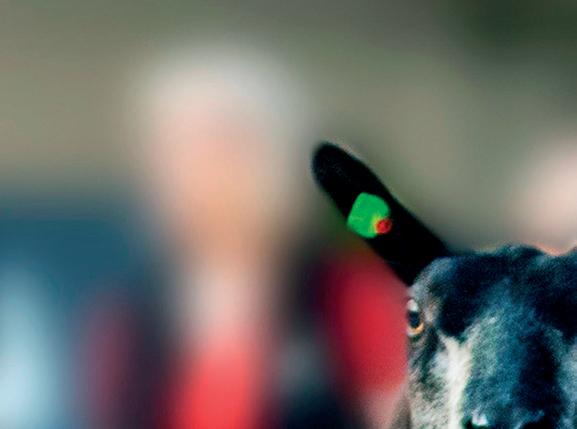
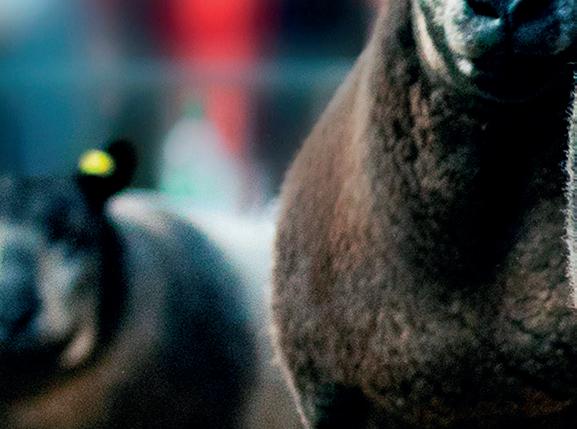
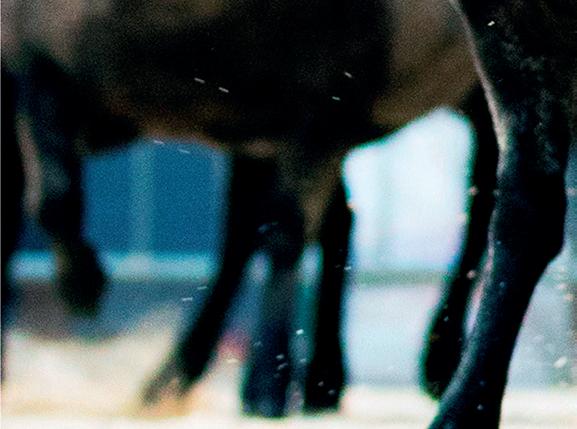

07768

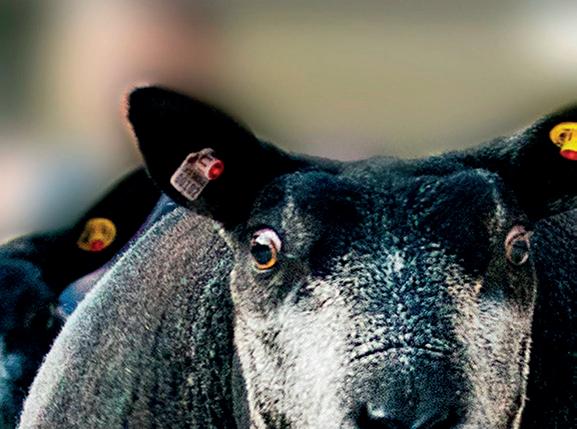
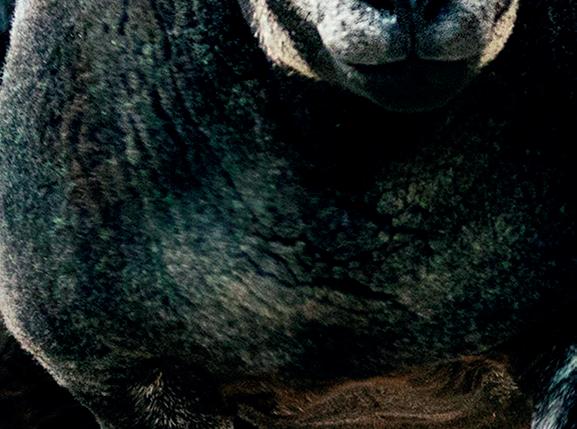
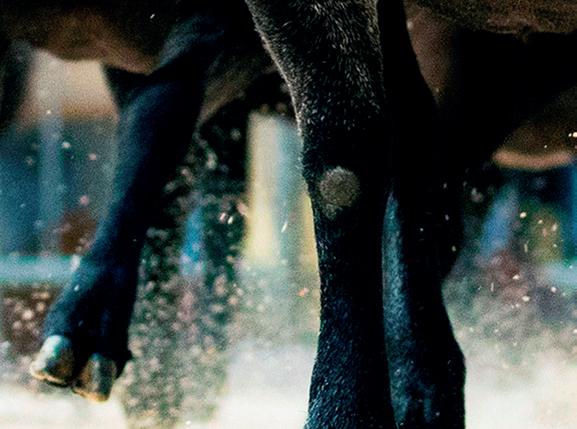
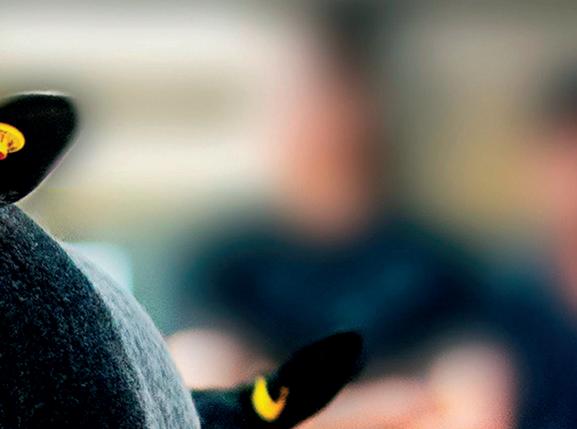
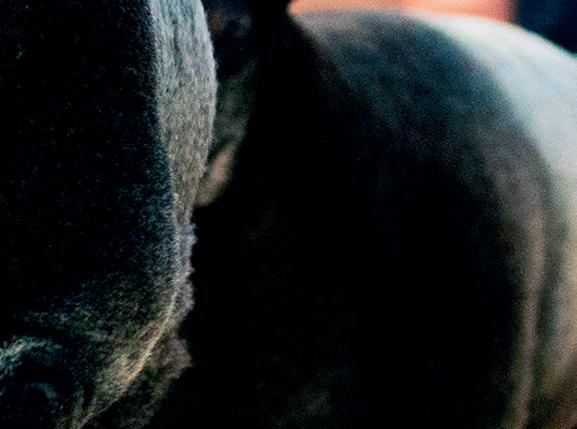








2 GRAZING


Making the most of grass
3 WORMING SCOPS advice
4 BEST PRACTICE
Handling and treatments
6 PERFORMANCE
Unique system pays off
10 TOP TIPS
Avoiding lamb losses

12 PEDIGREE
Increasing flock value
16 DUTCH SPOTTED
Making a mark
18 NEW CHAIR
Looking to NSA’s future
22 NUTRITION

Switch to TMR pays off
24 FECS
Going back to basics
25 BUY & SELL
Eight pages of classifieds


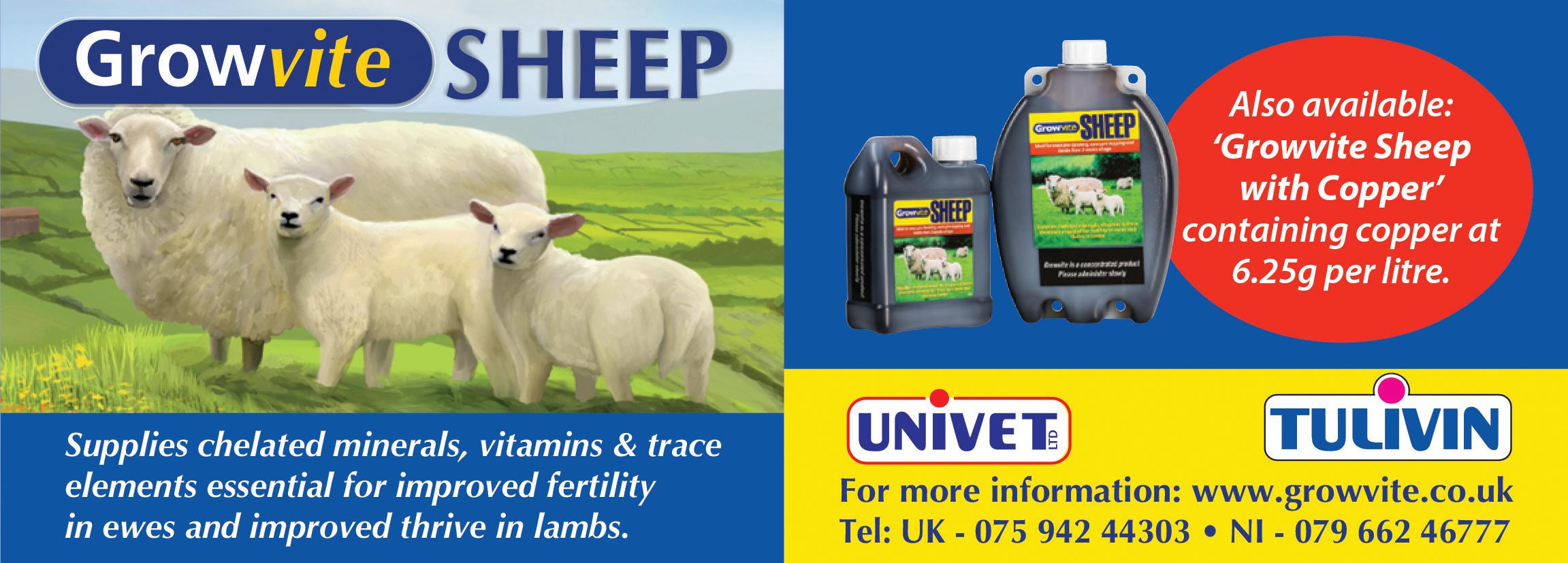
farmersguardian.com MARCH 1 2024 | 1 SUPPLEMENT
by Angela
angela.calvert@agriconnect.com
Edited
Calvert
796 492
SHEEP
This sheep supplement includes pedigree and commercial features, as well as advice on improving health and productivity in your flocks.
Get the most out of your lambs via efficient grassland usage
Speaking on the third of Scotland Rural College’s (SRUC’s) lamb crop webinars, SRUC sheep and grassland specialist Poppy Frater said the primary way to make grass go further and help achieve optimal lamb performance is through rotational grazing.
As rotational grazing also increases grass utilisation, Ms Frater said there was a clear relationship between grass growth and profitability. And by increasing the utilisation of grass, profits could benefit, either in the way of reduced inputs, reduced variable costs and or increased outputs.
She said: “I know a farmer who calculated their feed and fertiliser savings to equate to £10,000 per year, and they have been rotationally grazing for 13 years now.”
When implementing a rotational grazing strategy, Ms Frater said the main way to manage pastures for optimal grass utilisation was to manage the grazing residuals left behind to prevent a build-up of grass stems and dead material.
She said: “However, this does present a bit of a dilemma because balancing the needs of the present animals and the future animals can be quite tricky. Achieving those low residuals for future quality could come at a price of low lamb performance if we are not careful.”
In the short-term, Ms Frater advised farmers to avoid grazing swards too low. However, she also emphasied that in the long-term it was important swards were grazed low enough to
A winter rest is absolutely something we should plan into these systems to stack the odds in the favour of spring grass growth
POPPY FRATER

prevent a build-up of stems and dead material, which could affect lamb performance due to sward density.
Ms Frater said: “A fantastic way of achieving this balance is leader follower grazing, with ewes and lambs in front followed by clean-up stock, such as cows and calves.”
Ms Frater said this grazing strategy worked well as ewes and lambs were not forced to graze too low and the future grazing quality was maintained by the stock behind.
“However, this strategy was not possible for every farm and management tools, such as topping pastures after grazing, could help.”
Ms Frater stressed the importance of rest periods within rotations to encourage grass growth. She said that because a ryegrass tiller could only have three leaves growing at one time, rest periods post-grazing were essential to rest the pasture and ensure it reached its production potential at the three-leaf stage.
She said: “Once that fourth leaf starts to grow, the first leaf dies and represents a wasted feed opportunity.
“Often in rotational grazing, we try
to coincide when we return to a field with when the tillers are around the three-leaf stage.”
The time taken for a tiller to grow one leaf changes throughout the season. At its peak, it could take five to seven days, whereas in winter, it could take more than 30 days to grow one leaf.
Therefore, at peak grass growth in summer, a 15- to 21-day rest period might be required, whereas in winter, a 90- to 100-day rest period was optimal.
Quantifiable
Studies have shown that set stocking sheep from October to March has a quantifiable effect on April grass yields and winter rest influenced spring grass growth.
Ms Frater said: “A winter rest is absolutely something we should plan into these systems to stack the odds in the favour of spring grass growth.”
When looking at other ways to encourage grass growth, Ms Frater said it was important to remember that ‘grass grows grass’ and she advised grass covers with a sward height of

3cm would grow at 80 per cent of its grass potential, whereas covers with a 2cm sward height would grow at 60 per cent of its potential grass growth.
Ms Frater also advised a target sward height of 8cm when putting stock on to a pasture and a target height of 5cm when taking stock out.
She said: “If you are struggling to get to 8cm, it might be an indication that the rest period is not long enough and, if the sward height is more than 8cm, it suggests there might be an opportunity to shorten the rotation.”
For farmers wanting to start a rotational system, Ms Frater advised starting with a system of eight paddocks with 200-250 ewes and lambs, grazed over three days with a threeweek rest period.
Alternatively, she suggested splitting a field in half and moving stock between two halves or grouping stock together and moving them around fields.
She said: “Doing anything you can within your means to increase that stocking pressure then enabling that rest period for the grass will improve grass growth.”
farmersguardian.com 2 | MARCH 1 2024 SHEEP
Poppy Frater said there was a clear relationship between grass growth and profitability.
Sustained wet weather has put ewes under pressure this winter, meaning loss of body condition score will be a valuable guide when deciding which of them to worm around lambing.
That is the message from the Sustainable Control of Parasites in Sheep (SCOPS) group, which is continuing to urge producers to move away from blanket worming of ewes and towards a more targeted approach.
Independent sheep consultant Lesley Stubbings says: “Healthy adult ewes in optimum body condition have good immunity to roundworms and will sustain this if they are well fed, even under the stress of lambing and rearing lambs.
“Ewes in poor condition will struggle and it is these sheep that will have a compromised immunity, shedding large numbers of worm eggs in their dung. These eggs will contaminate spring pasture and allow a build-up of larvae when young lambs begin eating grass and are exposed to roundworms for the first time.
“The recommendation used to be to treat all ewes at lambing time to counteract the ‘peri-parturient rise’.


Consider which ewes to worm at lambing
“As our understanding of nutrition and ewe immunity has improved, we now know that treating all ewes is not necessary and speeds up the development of anthelmintic resistance.”
SCOPS now recommends targeting treatment specifically to ewes under nutritional stress – measured as a loss of body conditional score.
“The peri-parturient rise remains a threat to lambs and so wormers are an important tool to reduce pasture contamination and the subsequent challenge to lambs,” says Mrs Stubbings.
“But it is really important to target which ewes you treat, rather than inadvertently creating a different problem further down the line by blanket treating everything.
“In many cases only a small proportion of ewes need to be wormed. It is the ewes which have lost body condi-

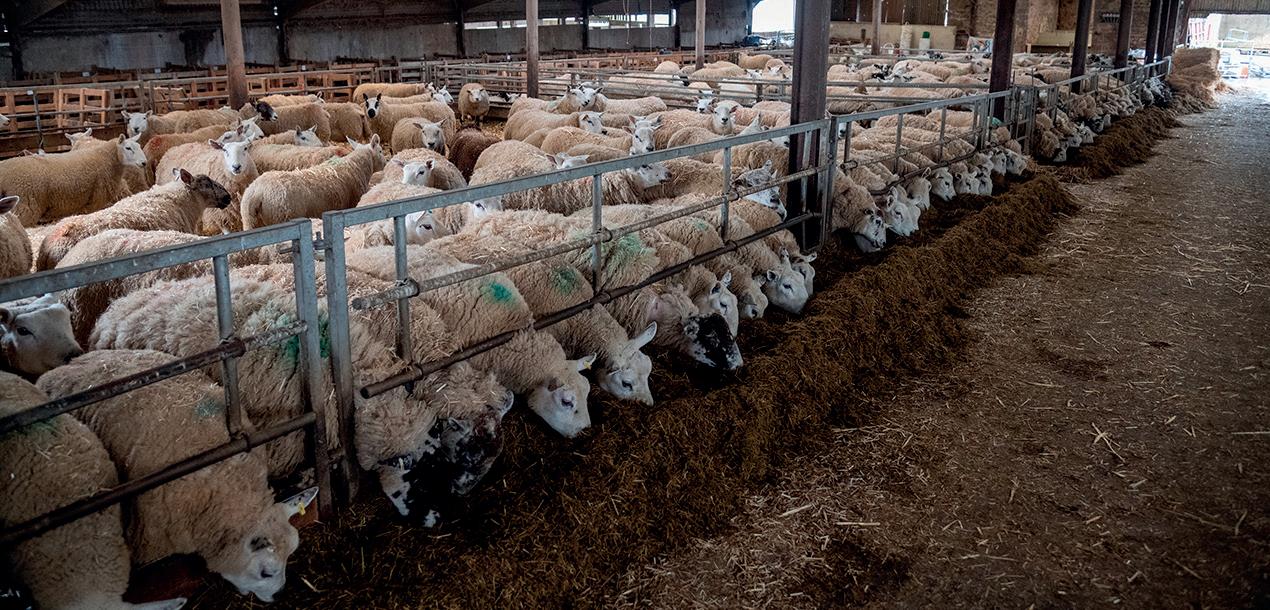
SCOPS says not all ewes need to be wormed.
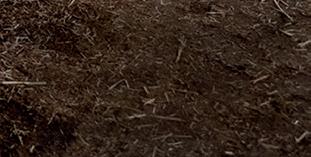
tion that need to be targeted. If you just treat those females, you can reduce the total amount of anthelmintic used compared to blanket treating, without impacting production.”
Ms Stubbings recommends produc-

ers speak to their vet and/or animal health adviser.
MORE INFORMATION
scops.org.uk/internal-parasites/ worms/treating-adult-sheep





































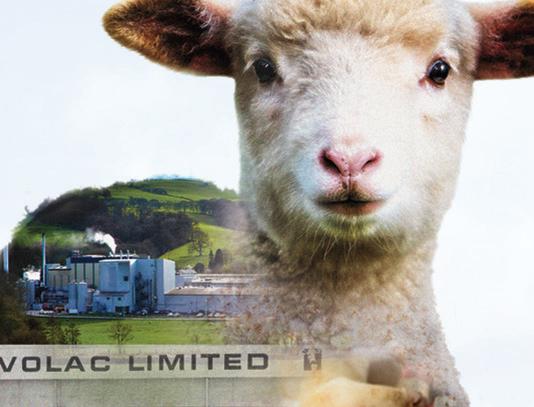
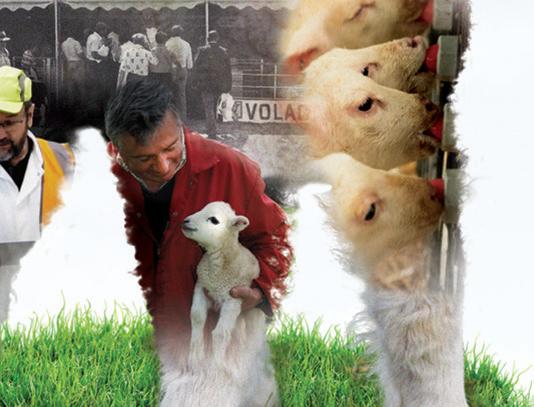
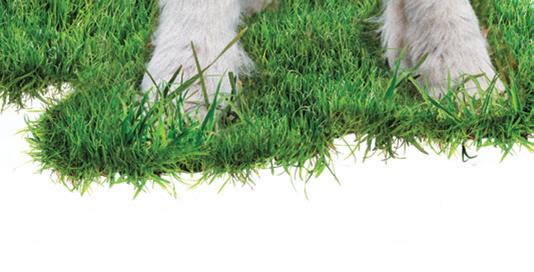







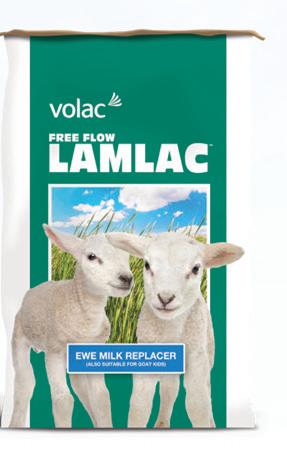
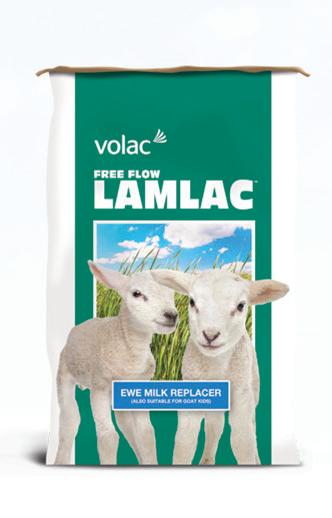

SHEEP farmersguardian.com MARCH 1 2024 | 3 ® ESTD. 1970 50 YEARS of Number 1 for 50 years ® As pioneers in the development and manufacture of high-performance milk formulas, Volac created the first instantised milk replacer for lambs: Lamlac® For over 50 years we have taken our passion for animal nutrition and continued to research formulation and processing developments, ensuring Lamlac® remains the UK’s number one selling formula. We understand, we’ve done the science. lamlac.co.uk Volac Milk Replacers Limited, 50 Fishers Lane, Orwell, Royston, Hertfordshire, SG8 5QX, United Kingdom T +44 (0)1223 206207 lambing@volac.com · Copyright © 2024 Volac Milk Replacers Ltd. All rights reserved. 02325 Lamlac Advert Farmers Guardian 135x195mm Landscape March 2024.indd 1 15/01/2024 11:54
Taking time to think about what might go wrong during handling will help ensure your stock is protected. Farmers Guardian reports.
How to limit losses associated with handling and treatments
Gathering sheep and handling for vaccinations, treatments or management procedures is essential. However, these actions are associated with risk and, while losses are generally low, occasionally serious disease and losses within a group are seen.
Fiona Crowden, SRUC veterinary investigation officer, says: “The act of gathering is a stressful event for sheep and, when rushed, the risk of injuries, such as broken legs or dog bites, increases.
“Excess stress during handling can cause abortion in pregnant sheep and hypocalcaemia can be associated with handling, housing or prolonged periods without food.”
Risk
Handling facilities need to be carefully designed to minimise the risk of injury or spreading disease. Ensure facilities are in good repair, clean and disinfected prior to use, especially if equipment is shared.
Scab mites survive more than two weeks off the sheep and spread easily when sheep are in direct contact.
Dirty conditions underfoot or dirty equipment, hands or gloves can spread footrot and contagious ovine digital dermatitis when sheep are moved or feet handled.
Think about which groups are handled together as respiratory viruses such as maedi visna and ovine pulmonary adenocarcinoma can spread with nose-to-nose contact.
Ms Crowden says: “Always check
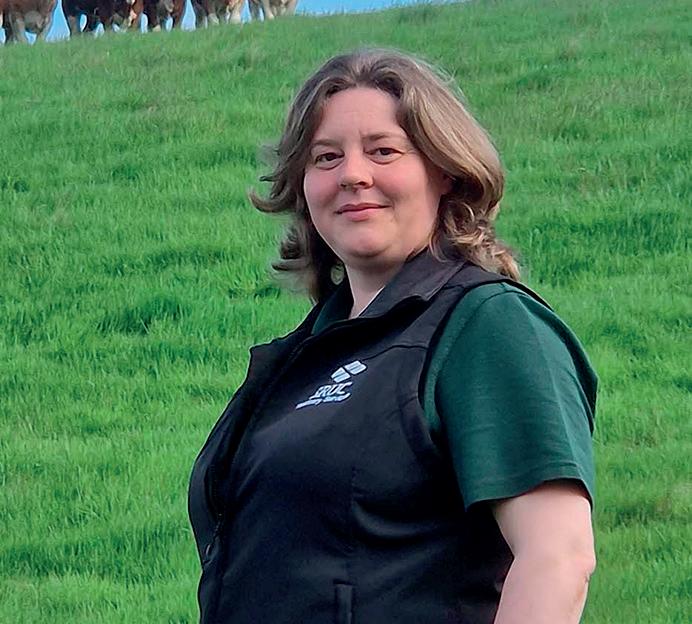
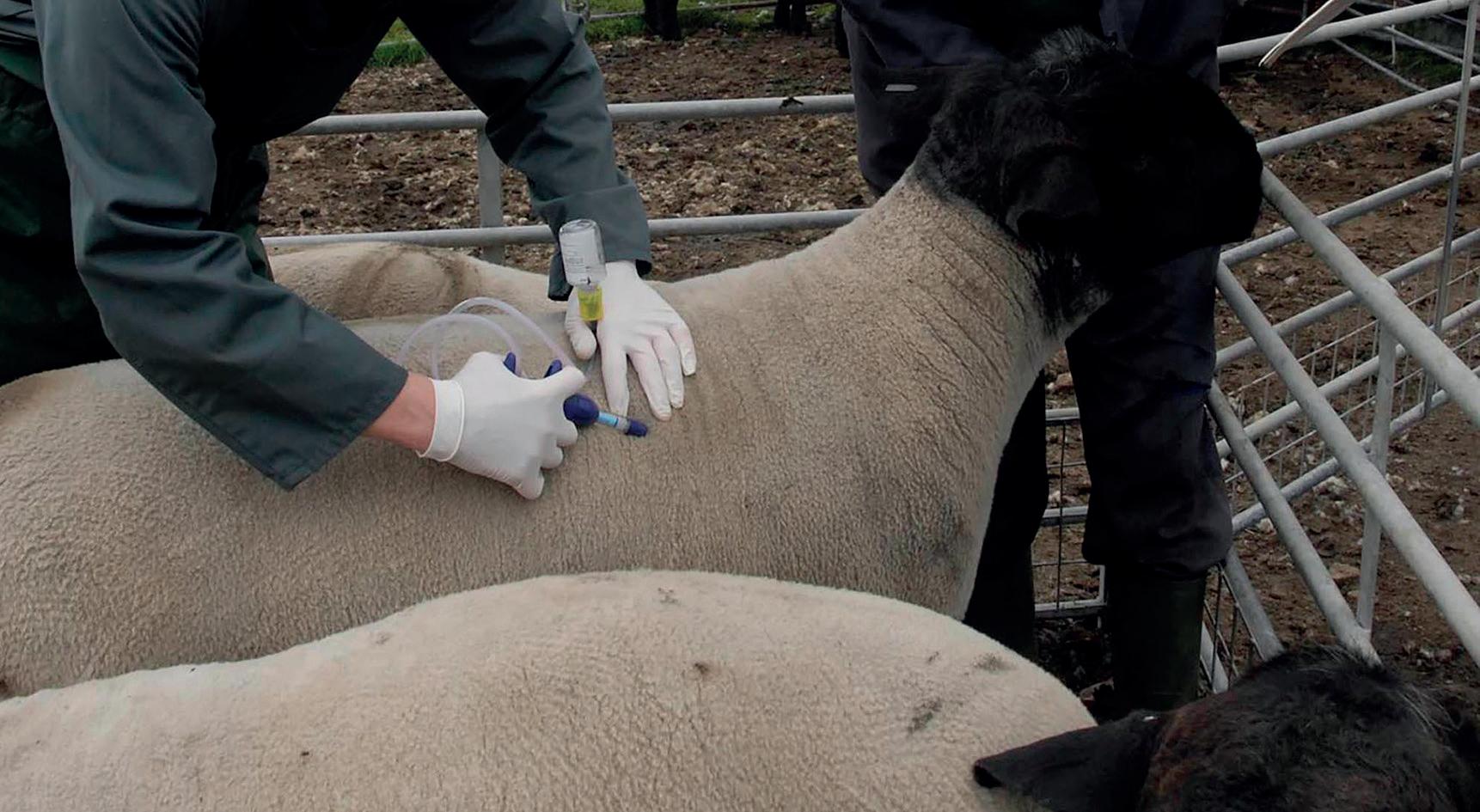

that holding yards are clear of old or spoiled feed. We have seen outbreaks of abortion and listeriosis when sheep have had access to mouldy or spoiled foodstuffs from a holding pen.
“Water provision should not be overlooked when sheep remain gathered for more prolonged periods, as dehydration contributes to stress.
“Thirsty sheep will occasionally drink footbath solutions leading to fatal toxicity from compounds including zinc and copper.
“Treatments and vaccinations are administered to improve health and welfare, however, we should be mindful that they can pose risk when the techniques used are suboptimal.”
Rough handling or use of damaged dosing or bolus guns can lead to trauma to the soft tissues of the throat, resulting in difficulty eating, condition loss and frequently death of affected animals, usually after one to two weeks.
Ms Crowden says: “The AHDB Beef and Lamb Fallen Stock project found 3.5 per cent of ewe deaths were caused by dosing gun and bolus injuries and we see cases every year in our post-mortem rooms.
“Ewes and especially lambs are at risk of inhalation of improperly administered drenches containing copper, which can cause death within
minutes to hours of administration.”
Overdosing of products can also pose risks to the flock. The group two ‘yellow’ wormer levamisole has a relatively narrow safety margin and death due to respiratory failure occurs following overdose, which is most common when lamb weights are spread over a wide range.
Toxicity of the flukicide, Closantel, is reported when overdosed, causing blindness and neurological signs in affected animals.
Boluses
Copper toxicity can occur in lambs which are given boluses when they are lighter than the recommended weight and also in adult animals that have access to multiple sources of copper.
Vaccinating or injecting sheep with blunt or dirty needles, or when the animals are wet or dirty, can lead to abscesses which can spread and cause septicaemia and death.
Injecting vaccines, especially oilbased vaccines, by routes other than those described on the data sheet can lead to severe injection reactions which cause a range of issues, including death. Needles can also transmit disease, including bluetongue virus, which may become a consideration in flocks this summer.
Ms Crowden says: “Deaths associat-
ed with handling and medicine administration are usually avoidable with sufficient risk assessment and planning.
“Ensure sufficient time is available for the job, ideally with a buffer for unexpected events. Equipment and handling facilities should be inspected in advance to ensure they are working properly and free from damage.
“People who are handling stock and administering medications should be suitably trained, ideally having attended a course. They should have read and understood the product data sheet and instructions in advance.”
Where illness or death occurs within two to three weeks of handling event, this should be carefully investigated.
Postmortem examination will provide valuable information for preventing similar losses in the future. SRUC Vet Services can give expert advice to your vet if needed.
If a medicine is suspected of causing an adverse reaction, the suitable qualified person or vet who supplied the medicine should be informed so the incident can be reported. In cases of suspected toxicity, the Food Standards Authority should be notified and the affected group should be held on farm under voluntary restriction until investigation has taken place.
farmersguardian.com 4 | MARCH 1 2024 SHEEP
Plan ahead and allow plenty of time when handling sheep.
Fiona Crowden
Preparing for Lambing: Hypothermia and Hypoglycaemia
Lameness in Sheep
Starvation, hypothermia, and hypoglycaemia are amongst the highest causes of mortality in newborn lambs – in wet and cold conditions as well as warm and sunny. Adequate colostrum and brown fat (a type of fat that the lamb is born with) help the lamb through this period by increasing heat production. Difficult or premature births can cause weak lambs which contributes to hypothermia.
Newborn lambs are fragile creatures and extremely susceptible to disease and infections. They are born with an almost sterile gut microbiome, and an exceptionally low inherent immunity. Good quality colostrum is of critical importance. In addition, lambs are born with low levels of crucial vitamins especially Vitamin E & A.
Lamb Mortality Factors
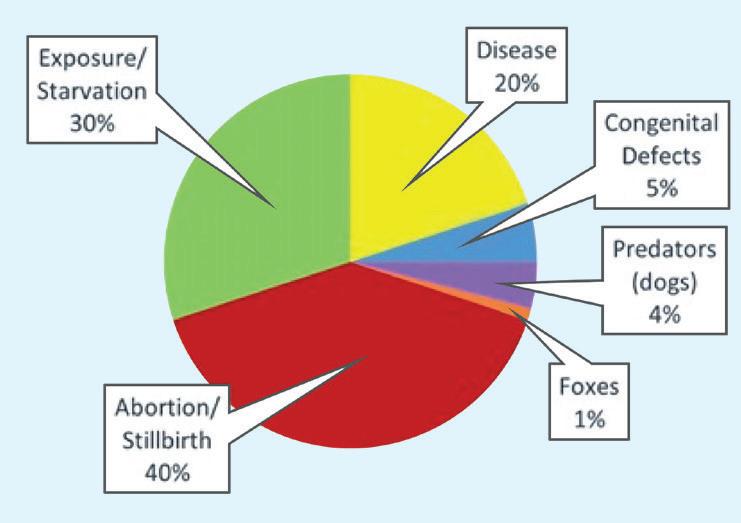



Young Lambs
Provita Lamb Response
Provita Lamb Response is a beneficial bacteria based oral formulation which acts preventatively to augment the gut commensal population of the newborn lamb with protective bacteria, thereby generating gut health, and helping to prevent the establishment of E. coli by boosting local immunity. The product also supplies protective egg powder and Vitamins B & E to further enhance gut protection and stimulate early protection against E. coli, and to stimulate metabolism and growth. Readily available energy is also provided in the product. It contains:
• Beneficial bacteria which naturally diminishes E. coli bacteria, enhances immunity, and ‘seals’ the newborn gut.
• Egg powder which provides high concentrations of unique proteins which are more potent against E. coli than usual colostral antibodies.
• High levels of vitamins necessary for the young animal’s metabolism and supplies especially vitamin E, which stimulates the lymphocytes in the underdeveloped immune system, thus adding a further layer of protection.
• High energy to stimulate appetite, help prevent hypothermia and to stimulate blood flow through vital organs.
Provita Jump Start
Provita Jump Start is specially designed and formulated to help newborn lambs by immediately boosting their blood sugar and energy levels. It contains high levels of:
• Glucose, energy, and propylene glycol acting as fast and prolonged precursors of blood glucose.
• Unique egg powder which help to combat E. coli infection.
• Selenium and vitamin E to help stimulate the immune system.
• Cobalt and vitamin B12 which accelerate the formation of greater numbers of red blood cells.
References available on request.
Written by Dr TB Barragry PhD MScMVB MRCVS (Vet Pharmacologist).

Lamb Response

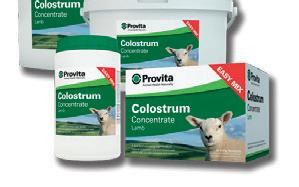

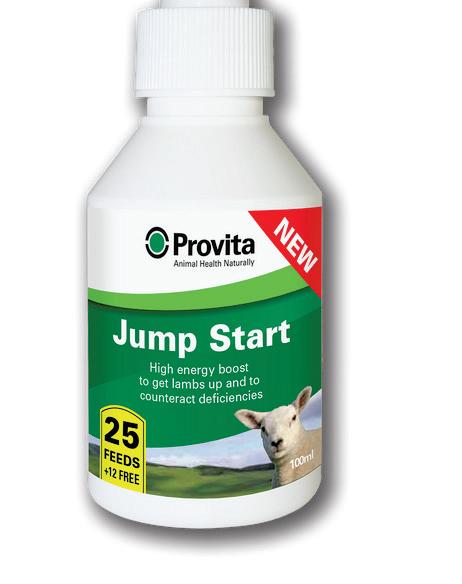

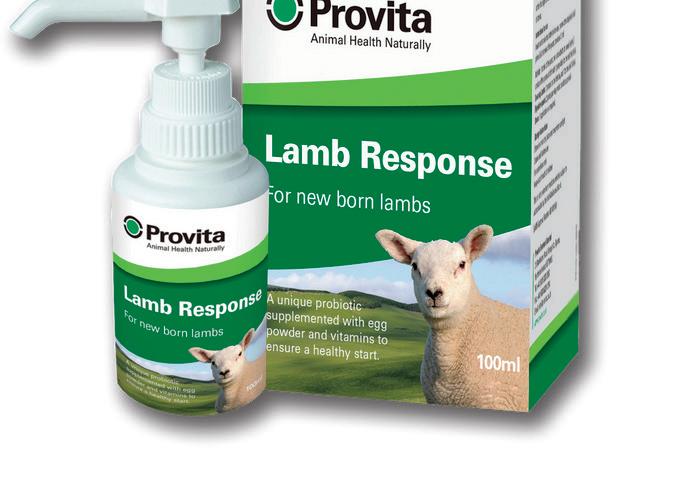
Advertorial CONTACT US +44 28 8225 2352 info@provita.co.uk www.provita.co.uk Lamb Colostrum FREE Lamb Feeds 2.5kg = 20%/20 lambs extra FREE! 1.25kg = 20%/10 lambs extra FREE! 500g = 20%/4 lambs extra FREE! 12x50g = 9%/2 lambs extra FREE! Provides high levels of natural colostrum, energy, egg powder and beneficial bacteria “The best I have ever used ” “Better thrive on our lambs ” Lamb Colostrum High levels of energy, egg powder, minerals and vitamins - for weak lambs “Boosts lambs quickly” “Massively helps after hard lambing” Lamb Jump
Provides beneficial bacteria, egg powder and vitamins - helps protect against harmful bacteria “A literal life saver” “We haven't lost a lamb to watery mouth”
in
Start
with Provita
Performance recording his flock comes naturally to Stuart Dawson, who has been keeping meticulous records since he started sheep farming just over 10 years ago. Farmers Guardian reports.
Monitoring performance improves flock efficiency
Stuart Dawson, who farms in partnership with his father, Colin, runs a 1,000strong flock of mostly Romney ewes and that head count has not happened by accident – it is the amount of ewes he has calculated one-man can lamb on the family’s farm near Kinross.
He puts the origin of his recordkeeping down to his days studying
for a degree in zoology at Edinburgh University.
“I suppose it is fair to say that I have a methodical sort of a brain,” he says.
“A Google search says a degree in zoology will do more than just qualify you to work in a zoo,” he adds, highlighting the emphasis it places on science, research, data, analysis, and behavioural skills.
Mr Dawson starting out in
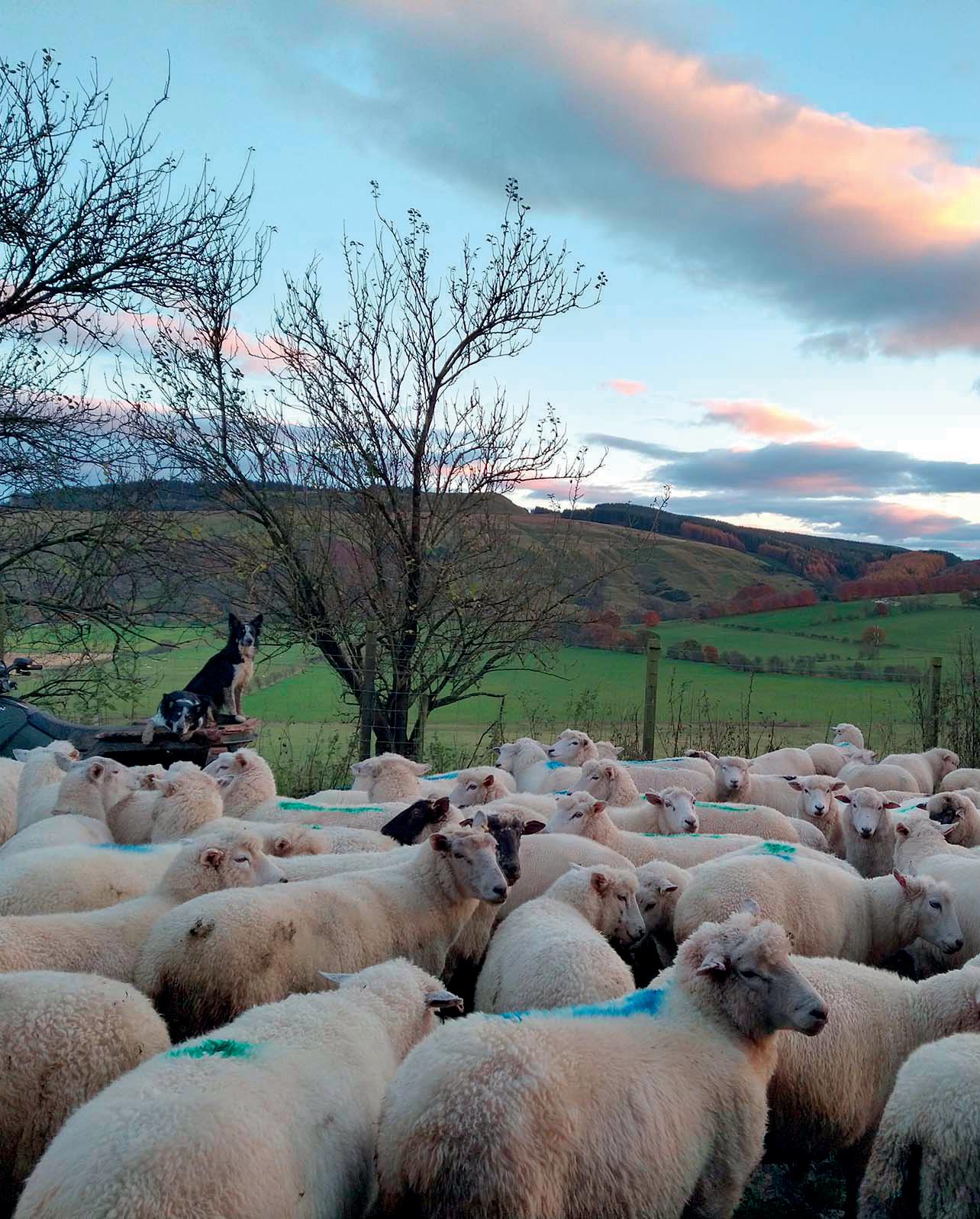
sheep coincided with the family moving to Hilton of Aldie, near Kinross, from Oxfordshire where they ran a busy farm shop and butchery business.
The 148-hectare (365-acre) farm is predominantly grass, with an additional 97ha (240 acres) of rented grazing.
He says: “The Romneys have
Stuart Dawson has increased rotational grazing and introduced more herbal leys.
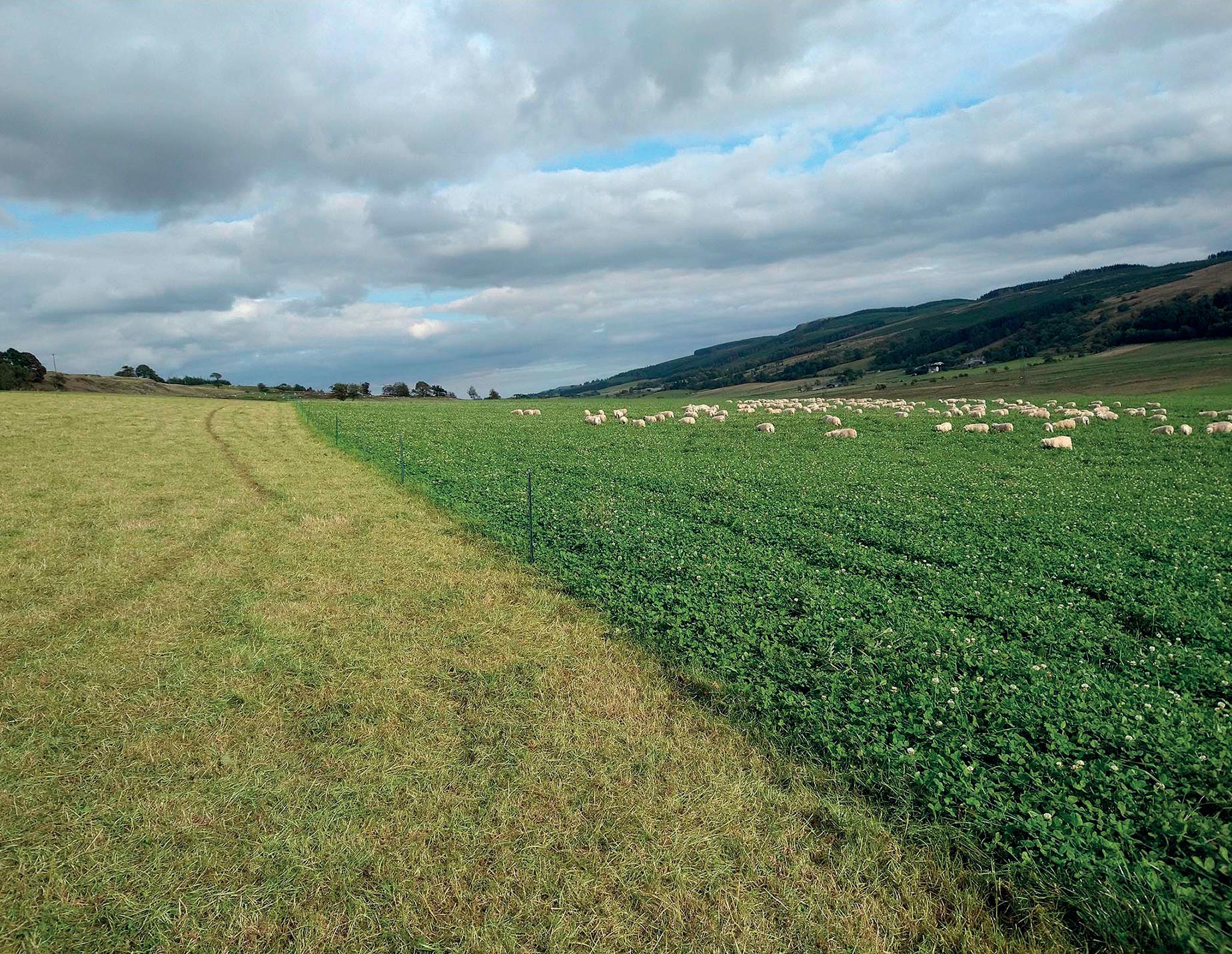

ticked all the boxes for us. They are hardy with great fleeces, graze any rough land and lamb outdoors.
“I performance score them mostly on efficiency. It is a very simple system with 10 points and plus and minus ratings.
“For other people’s systems the scoring might be different, but for me a ewe that has triplets gets a minus one. If she needs assistance at lambing that will be a minus two. If her feet need attention that will be a minus one and if the eightweek weights of her lambs are not up to scratch that is a minus two.
Plus scores
“Ewes get plus scores for good maternal instincts. It is a little arbitrary, but basically if I pick up the lambs and tag them and the ewe is constantly in my face I will give her two points. She can also get positive points if she weans two lambs that have not needed worming. It is a basic system but it is invaluable for helping me to identify the most productive ewes that I should be keeping and breeding from again.
“To explain my performance scoring in its simplest form, there will have to be a very good reason why a ewe with a minus point gets a second chance. Being strict about it has got me to this position of having 1,000 ewes that can be managed by one person.
“It is a balancing act and if I let the minus scorers through there is always the fear it might tip the balance of lambing the whole flock
farmersguardian.com 6 | MARCH 1 2024 SHEEP
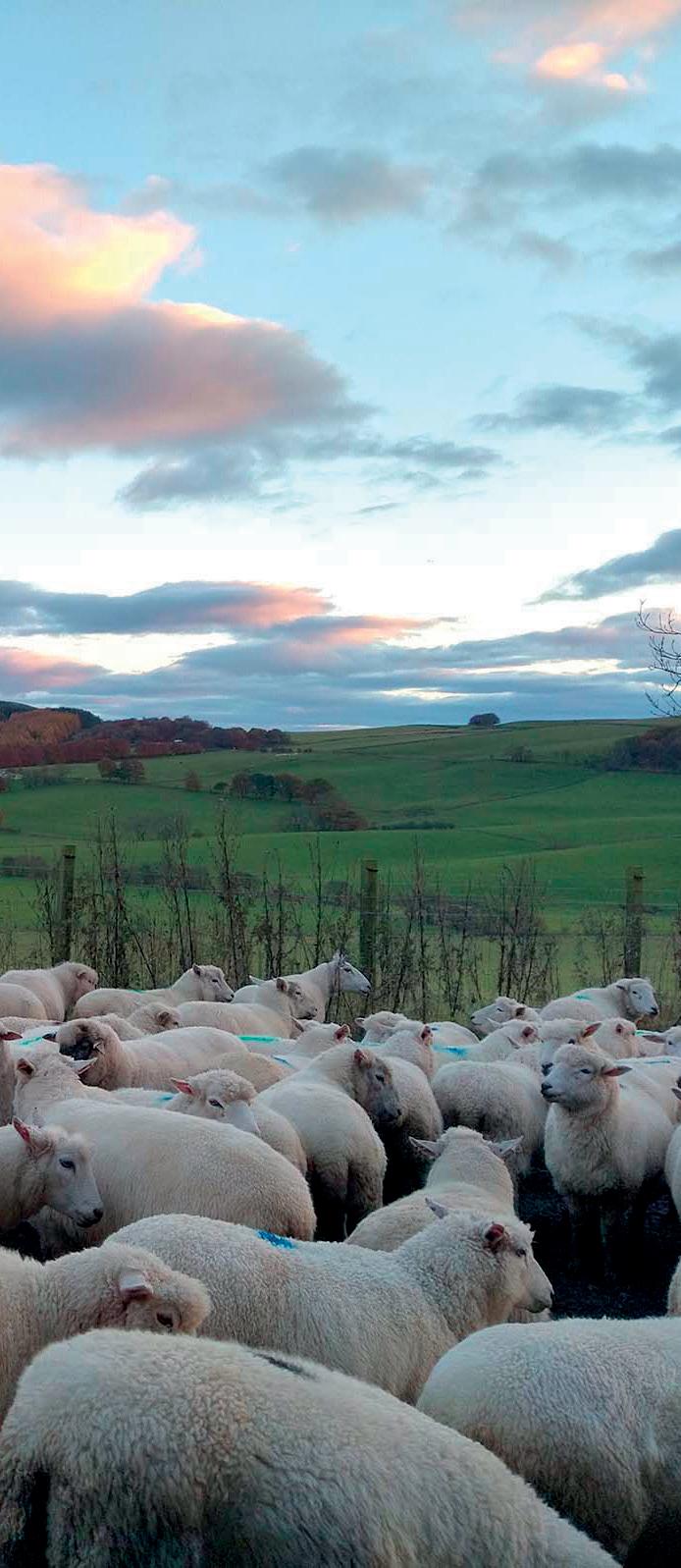
I performance score them mostly on efficiency. It is a very simple system with 10 points and plus and minus ratings
STUART DAWSON
remaining something I can do by myself.”
Another vital tool for Mr Dawson is the weight. He aims for his ewes to be topping the scales at 65kg at tupping time, although he finds 55kg seems to be the weight they really maximise efficiency at. Come weaning time, at about 12 weeks, he hopes for lambs to weigh 27-28kg (or else they will be earning their mothers’ minus points) with the target that his better ewes will wean two lambs at about 30kg.
Although he is already ahead of the curve with his own record-keeping, Mr Dawson is pleased that he has taken part in the Programme for Improving the Sustainability of (red) Meat (PRISM 2030), which was launched by food processor ABP to help farmers make a step-change in sustainability through partnering with the
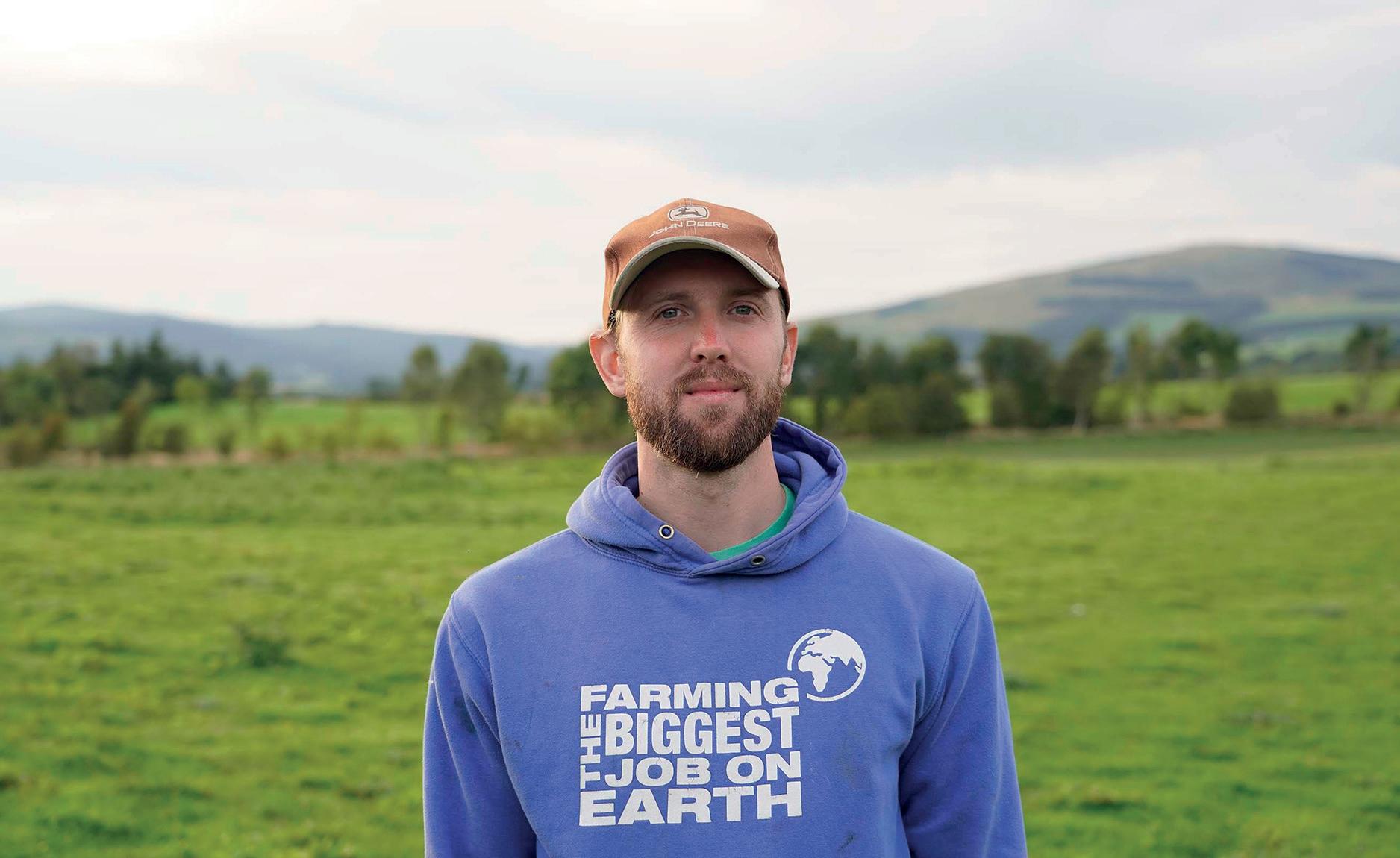


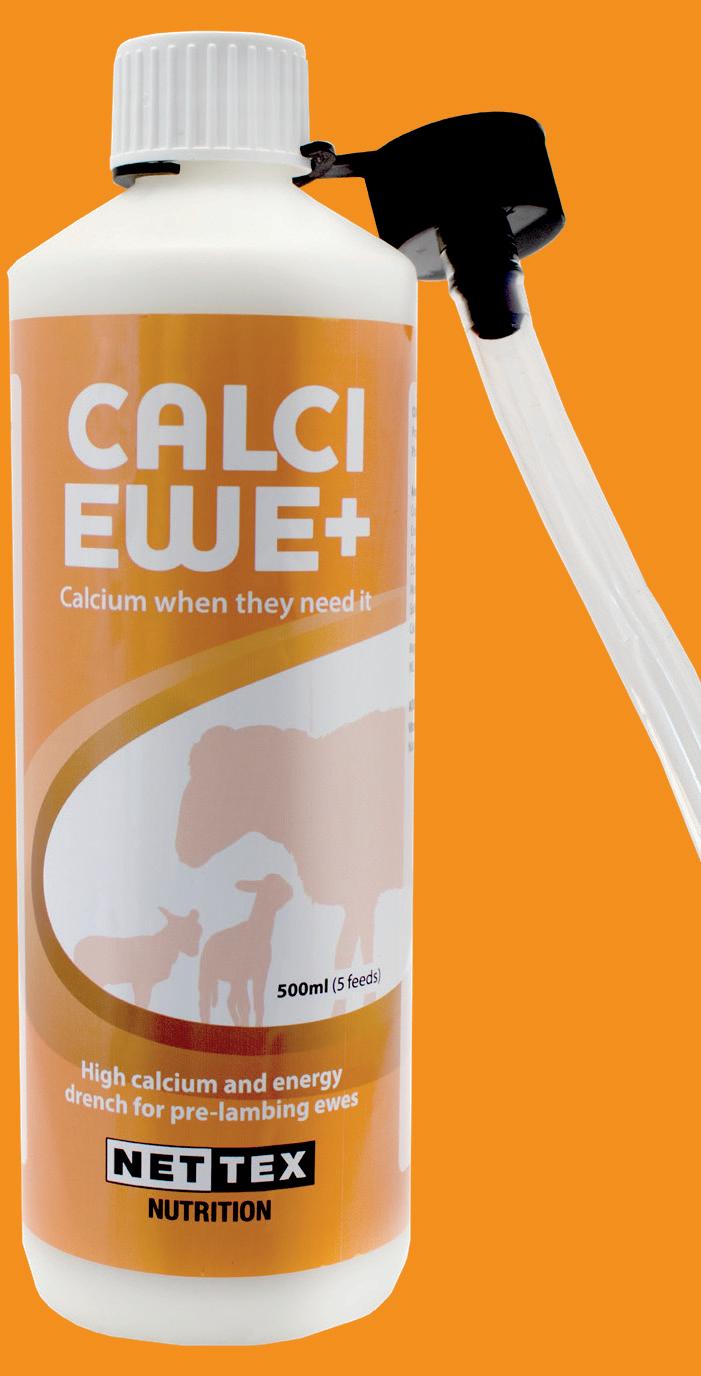
farmersguardian.com MARCH 1 2024 | 7 LAMBING SOLUTIONS Nettex CalciEwe + • Calcium • Energy • Magnesium • Niacin Calcium deficiency common at lambing time? NEW B r i t ishfarmingproducts createdbyexpe r t s Bir t i s h farmingproducts createdb y e x p e r st 01283 524222 sales@net-tex.co.uk www.net-tex.co.uk #NettexKnows
Stuart Dawson puts the origin of his record-keeping down to his days studying for a degree in zoology at Edinburgh University.
A 1,000-strong flock of mostly Romney ewes is run on the farm in Hilton of Aldie, near Kinross.
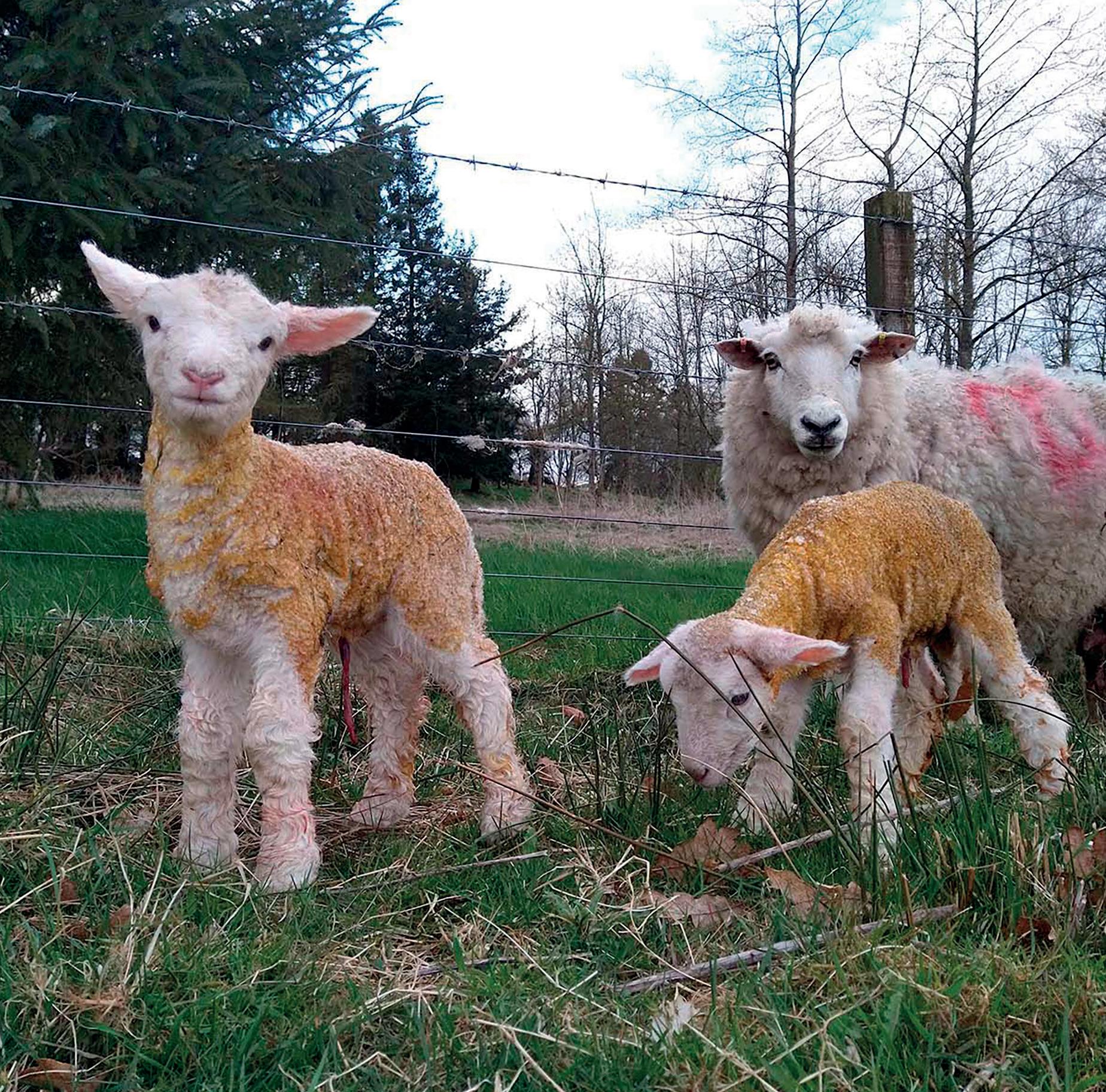

Andersons Centre and Harper Adams University.
He says: “PRISM has got me thinking about grass as our most important asset. A product in its own right.
“I have really seen the benefits of putting new leys in; they have given me a longer grazing season. Likewise, with rotational grazing which, although I was doing before joining the PRISM scheme, I have adopted more since. It better utilises the grass and again significantly extends the grazing season.
“Soil and silage sampling has made me look at timings to make the most of spring grass. I now try to get enough silage made at the end of May or the beginning of
Pieces of PRISM
A YEAR since its launch and all the farmers on the scheme have had feedback reports from Andersons and a bespoke plan of farm areas to focus on from Professor Jude Capper, of Harper Adams University.
Here are five key ways the farms are reducing their carbon footprint:
■ Improving pastures using rotational grazing, multi-species
June, when it is nutritionally higher, to use in the period before lambing when they have the highest feed requirements. We lamb in the middle of April and silage made in that week or 10 days after lambing is much better quality.”
Replacements
While replacement ewe lambs are retained, the remainder go to ABP at around seven months old in late September or early October.
“The data I get back from ABP, on killing out weights and so on, has been really valuable in taking my performance scoring full circle.
“The majority of lambs are finished off grass with no concentrate, so putting the focus on the soil and
swards and platemeters – which in turn reduces nitrogen and improves crop yields
■ Reducing age at slaughter
■ Improving livestock health and fertility
■ Reducing fuel consumption
■ Using by-product feeds
MORE INFORMATION
For further information, visit abpsustainabilitystory.com
grass quality has been very valuable,” says Mr Dawson.
“I have really managed to improve the grass and have put a lot of time into learning about different leys and herbal swards. One of the areas I am focusing on is how I can
LAMBING
KATIE Thorley, ABP’s agri-sustainability manager, says there are some simple steps farmers can take during lambing to improve efficiency.
“Have a look back over the previous year – have you compared the number of lambs sold with the number of lambs scanned?” she asks.
“How many were lost and when? Try having a simple tally chart in the lambing shed for why lambs were lost in the first 24 hours and after. Make sure you get all staff on board with this to give you a true picture.
“You can then look and assess where losses are happening and try to implement changes to reduce it for the next year. It should highlight if there is an underlying abortion issue, nutritional or parasite problems when the lambs are older.
“All farmers want as many healthy lambs on the ground and I know they are all doing their best to achieve this. But every year is
get to the point of 100 per cent being finished off grass but, sadly, right now I still end up with some in the shed being fed.”
The farm’s herd of more than 60 suckler cows come under the care of Mr Dawson’s father Colin, who is vice-chair of the Royal Highland Education Trust Perth and Kinross.
They are a mixture of AberdeenAngus and Lincoln Reds, which are the breed the family arrived at the farm with when they moved up to
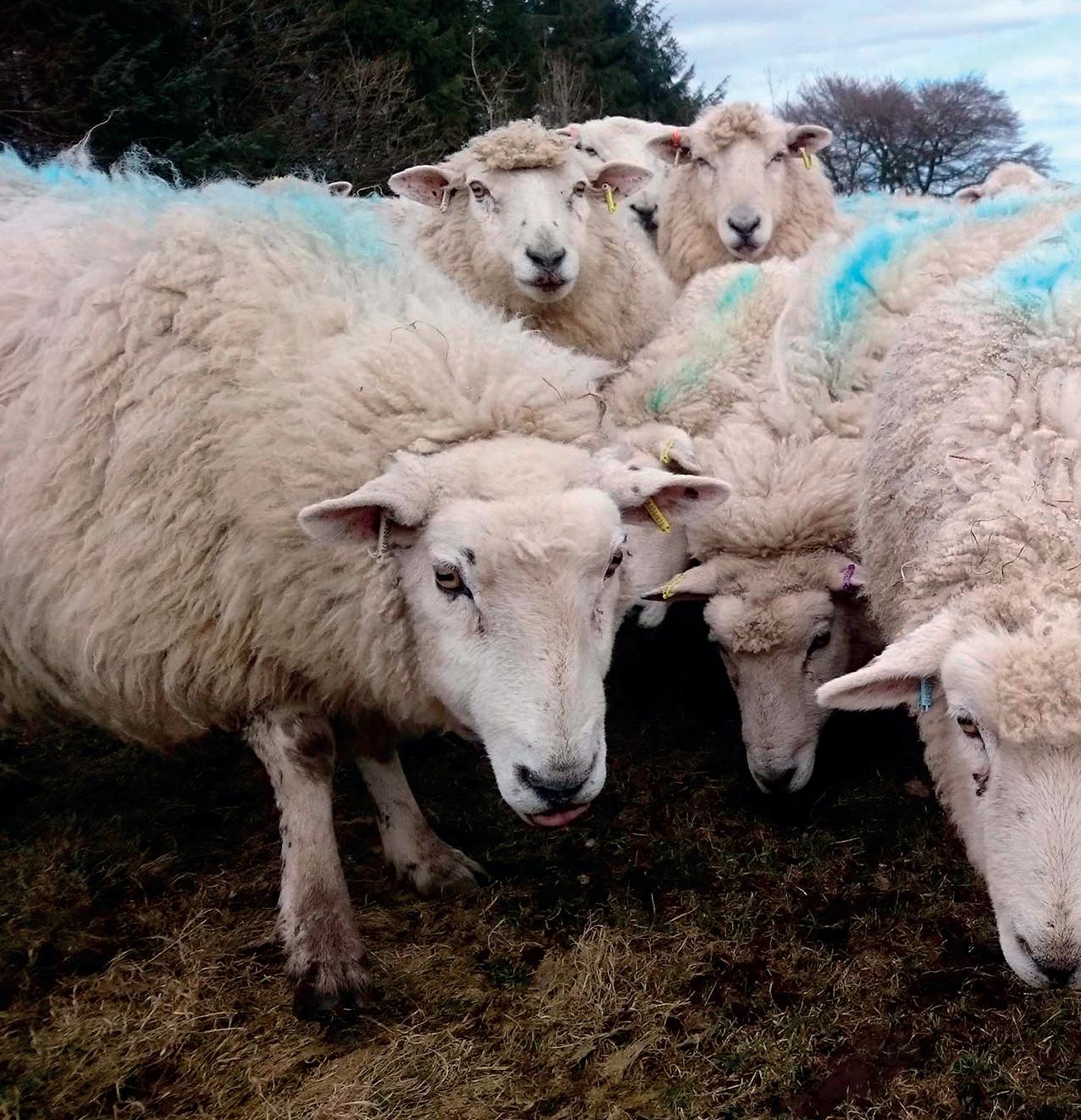

farmersguardian.com 8 | MARCH 1 2024
Lambing on-farm takes place in the middle of April.
slightly different, with simple things like forage quality and weather playing their part. When it is busy it is easy to be lost in the moment and things can be missed – try to think back to last year’s lambing and what needs to be adjusted to make everything easier and more efficient.”
Top tips
Ms Thorley’s offers her top tips for lambing:
■ Data is key – without the information you cannot make informed decisions – ensure any ewes with issues over lambing are recorded so decisions can be made when the lambs are reared
■ Try to focus and do one job at a time – better to do one job well than multitasking and having many issues arise from a rushed job
■ Set clear goals and think strategically
■ Think about grass management –what can you do to use the
Scotland. They run with an Aberdeen-Angus bull, with the calves sold on through livestock marts as stores.
Facilities
“We do not really have the facilities to finish them ourselves,” says Mr Dawson.
“Of course, the muck they produce goes on the land to help with the continued soil improvement.”
The family have been passionate supporters of Leaf Open Farm Sun-
Try to think back to last year’s lambing and what needs to be adjusted to make everything easier and more efficient
KATIE THORLEY
grassland you have better –do you rotationally graze?
■ Put a health plan in place with your vet and ensure you monitor and revisit it throughout the year
■ Down time. Everyone needs to recharge; it prevents stress and helps re-energise you for the physical and mental challenges
day, having been involved ever since it was launched in 2006.
As an interesting aside, Mr Dawson’s grandmother was originally from a dairy farm in Auchenlarie, near Castle Douglas – taking all the cattle with her on a train when the family moved down South – and his father had always wanted to return to his roots. His sister, Rebecca, is a keen breeder of pygmy goats and lives with her dairy farmer husband in Dumfries and Galloway.







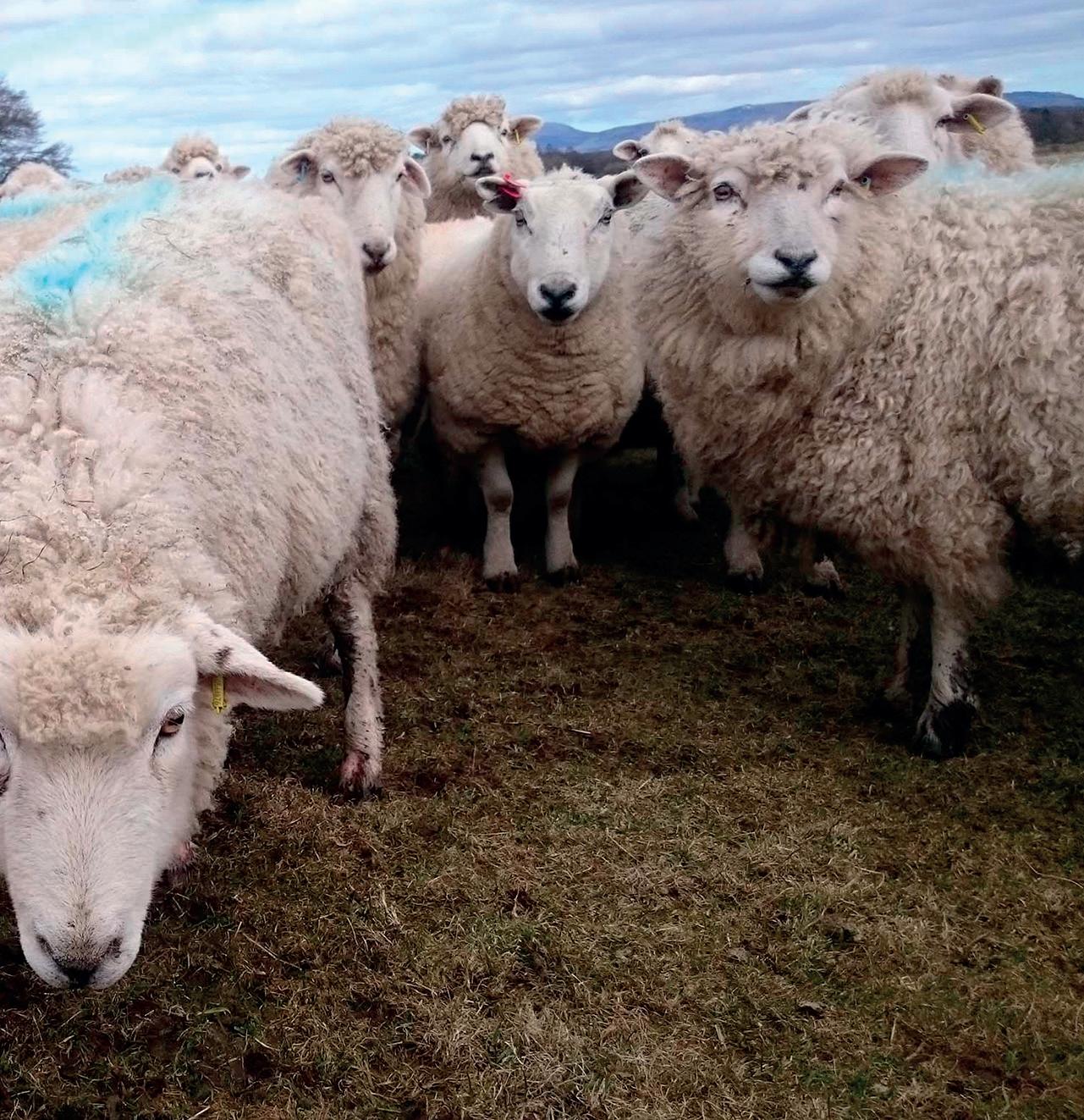
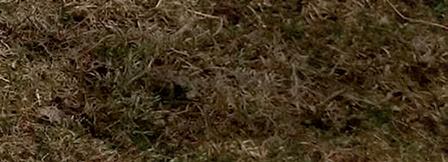
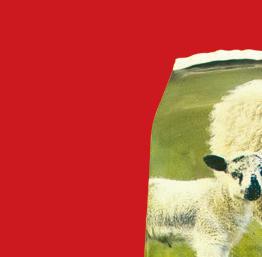
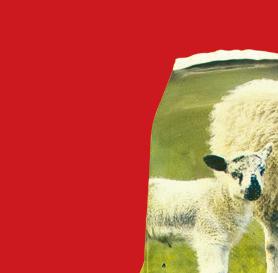
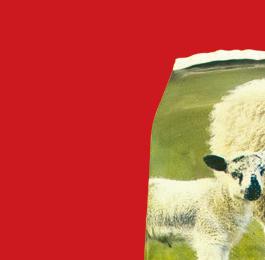
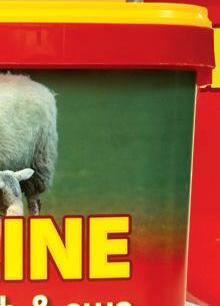
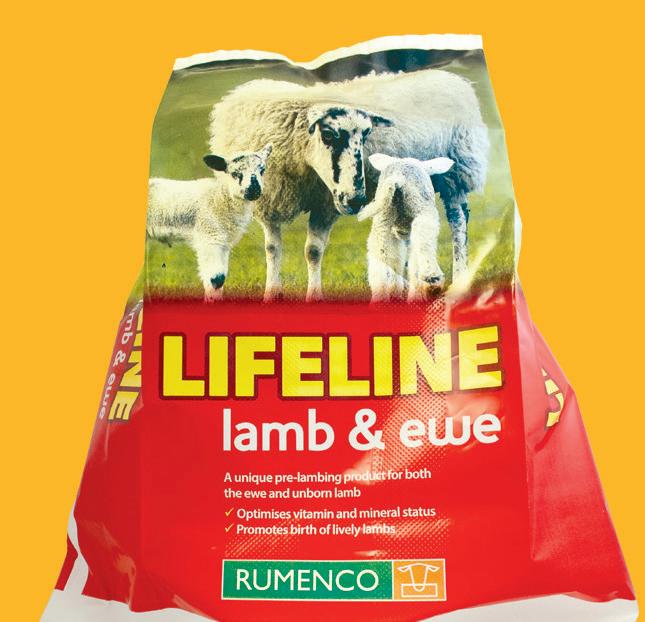



SHEEP farmersguardian.com MARCH 1 2024 | 9 Freephone: 0800 833 675 | info@rumenco.co.uk | www.rumenco.co.uk The UK’s No.1 Dedicated Pre Lambing Product# Supporting their Lifetime with LIFELINE lamb & ewe BUY 10 Get 1 FREE Lifeline Lamb & Ewe 22.5kg buckets and blocks Offer ends: 31.03.24 Also available in NEW SHAPE 14”Block
The aim is for ewes to be topping the scales at 65kg at tupping time.
Common lamb losses f
Lamb mortality impacts flock productivity at lambing time. Ellie Layton looks at the main issues and how they can be avoided.
Astudy carried out by Hybu Cig Cymru showed Welsh flocks saw a lamb mortality rate of 15 per cent, with up to 21 per cent in UK lowland flocks, despite the industry target standing at 6 per cent.
Following this, Farming Connect hosted a workshop with Honddu Veter-
GENETICS
WHILE genetics could play a role in influencing mothering ability, the age and condition of the ewe plus the disturbance of the ewe during and immediately following lambing also had a significant effect.
But Ms Glyn-Jones believed genetics played the biggest role in ewe selection on-farm, which could be assisted by recording data.
She said: “Recording is key to identifying when any losses occur and what the causes are so that they can be avoided in future. They can also help to improve conception rates
LITTER SIZE
THE vets recommended the best way to avoid varied litter size was by controlling ewe nutrition.
Ms Glyn-Jones said: “Breed genetics will play a role in the number of lambs. But between tupping and lambing, ewes should be condition scored whenever the opportunity arises, and thin ewes should be investigated for any other underlying causes like liver fluke.
“Following scanning, underfeeding
inary Practice to help farmers identify the most common causes of lamb losses and show how these can be rectified to reduce mortality and increase profits.
Vets Molly Glyn-Jones and Rhian Lewis advised that most mortalities occur within the first 48 hours of life, with there being six major risks to lambs before weaning.
and lamb survival, which have a major impact on flock potential.
“Simple check sheets or a notebook to record losses can provide valuable information which can be used when selecting culls.
“It is sometimes difficult to maintain accurate records in situations where large numbers of lambs are born within a short space of time, so a notch or stick reader and app often make management easier.
“Once this data has been collected over a few years, the information can be used to improve farm efficiency.”
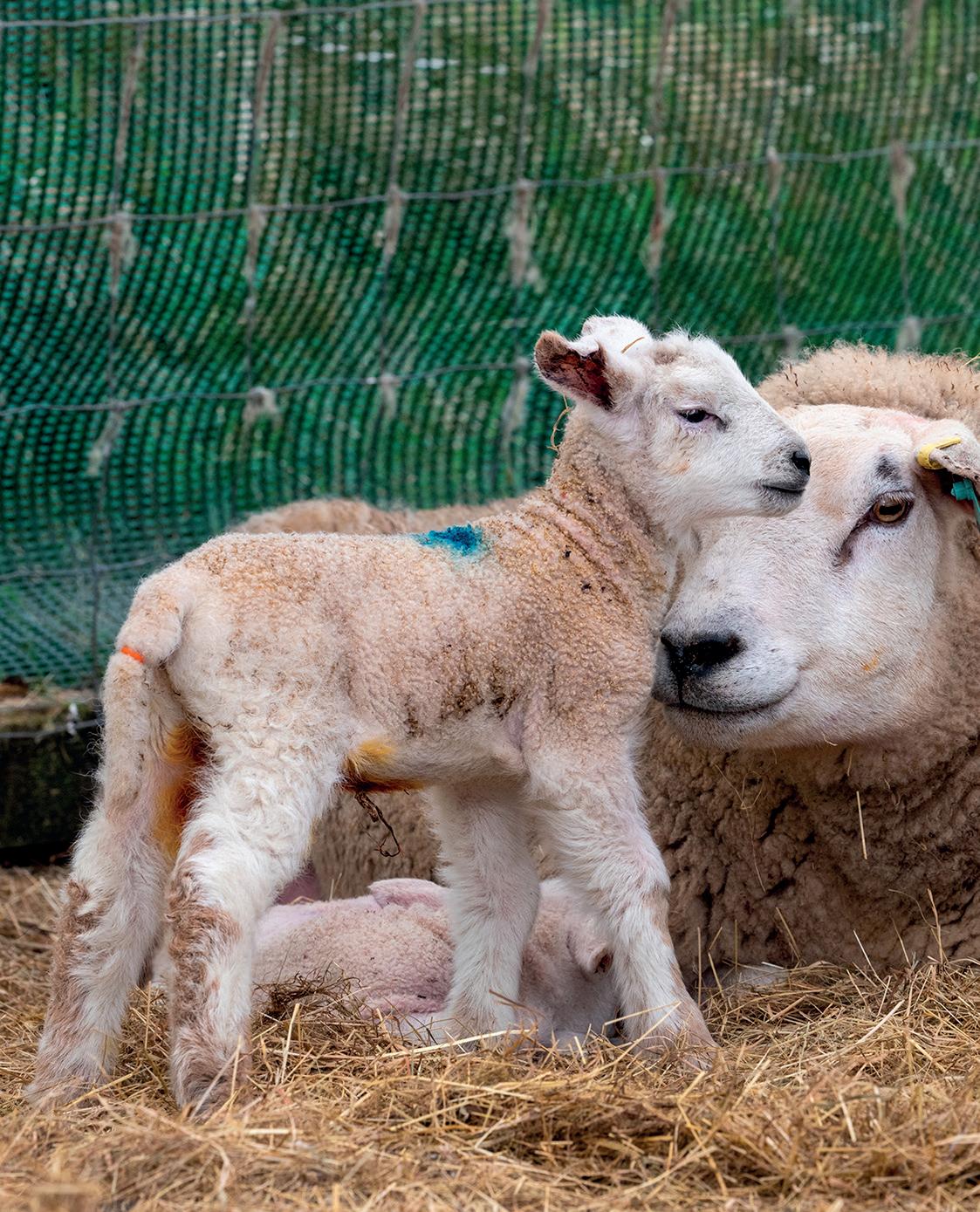
or overfeeding should be avoided as this tends to increase lamb mortality rates.
“Overfat ewes are more prone to having difficulties, especially when trying to deliver large lambs.
“If a lambing is intervened with, hygiene should be optimal, and if assistance is implemented in the ewe, antibiotics should be administered to protect the ewe and enable her to provide the best for her lambs.”
As lambs get older, vet Rhian Lewis said the biggest risk of death was from clostridial diseases.



Lamb survival and birth weight are closely linked, said vet Molly Glyn-Jones.

BIRTH WEIGHT
MS Glyn-Jones said: “Lamb survival and birth weight are closely linked. Heavier lambs often pose a risk to difficult lambing and suffocation in the bag while having less vigour, which can lead to issues accessing colostrum, while small lambs often have less ‘get up and go’ and will chill faster.”
There would inevitably be variations in the litter size which were identified at scanning, she said, but
COLOSTRUM INTAKE
GOOD energy and protein supplies would lead to high yields of high-quality colostrum, and also help to produce vigorous lambs with a good birth weight.
Ms Lewis said: “It is basic husbandry, but it is vital lambs receive 50ml/kg of their body weight within two hours of birth and 200ml/ kg over the first 24 hours. Colostrum should be given in the three Qs: quickly, quantity and quality.”
It was recommended that cow
this could be rectified by appropriate levels of nutrition which played a significant role in helping to improve both ewe and lamb survival.
Not all losses before lambing were caused by infection and some of these could be prevented by careful management of ewes at tupping and during pregnancy. Ewes needed increased levels of energy and protein in the last eight weeks of pregnancy.
colostrum was tested for Johne’s Disease, but the team said it was a better alternative to powders.
Powdered colostrum
Powdered colostrum ingredients should be studied before purchase and mixing methods followed when used, as brands vary.
The vets reminded farmers that it was best practice to strip colostrum off ewes before trying alternatives.
farmersguardian.com 10 | MARCH 1 2024 SHEEP
PICTURE: MARCELLO GARBAGNOLI
rom birth to weaning
POOR HYGIENE
MS Glyn-Jones said: “Bacterial infections can cause considerable losses at lambing time. Bacteria present in the environment can become a significant problem, but can be resolved with a prevention rather than treatment mindset.”
The three main bacterial threats were joint ill, watery mouth and navel ill, and were most commonly seen in lambs up to seven days old in both indoor and outdoor systems.
She added: “Moist, warm environments are an ideal place for bacteria to thrive and build up over the lambing period, although threats are lower in most outdoor systems. They can be reduced indoors by adequate ventilation and dry, sterile fresh bedding.
“Stocking density can increase the issue, but each couple should be
allocated 2.5sq.m, while placentas should be removed from the shed and sick animals isolated to reduce spread.”
Iodine
Ms Lewis said as soon as lambs hit the ground, the navel should be sprayed or dipped with 10 per cent strength iodine.
“If you are dipping navels, the iodine should be fresh each day, as if it has been contaminated it will be inactivated.
Since the removal of Spectam Scourhalt from the market, she said many farmers had turned to probiotics which seem to have worked well and reduced antibiotic usage, although antibiotic treatments could be prescribed if vets viewed it as necessary.
CLOSTRIDIAL DISEASES AND COCCIDIOSIS
AS lambs get older, Ms Lewis said the biggest risk of death was from clostridial diseases.
She said: “Before lambing, ewes should be vaccinated against clostridial diseases wherever possible - and also consider vaccination against pasteurella or coccidiosis if problems are found within the flock.”
Other fatal risks were pulpy kidney and tetanus.
“Clostridial diseases cause sudden death in lambs from soilborne bacteria and often offer little treatment once they are infected.
“If the ewe is on the vaccination system, it will only protect the lambs for three to five weeks, so lambs should be introduced to the system for ongoing protection,” she added.
Coccidiosis was a risk to lambs at the same age from four to 12 weeks,
Clostridial diseases cause sudden death in lambs
RHIAN LEWIS
and could be identified by weight loss, diarrhoea and death.
“The key to avoiding this is pasture management and hygiene around water courses. Treatment can be administered, but vet advice should be sought to avoid confusion with nematodirus. Only two of the 15 species of coccidiosis cause an issue, so this should also be confirmed if suspected,” said Ms Lewis.
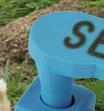
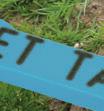







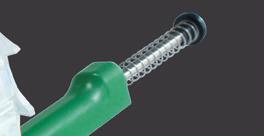

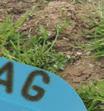
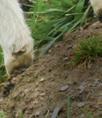


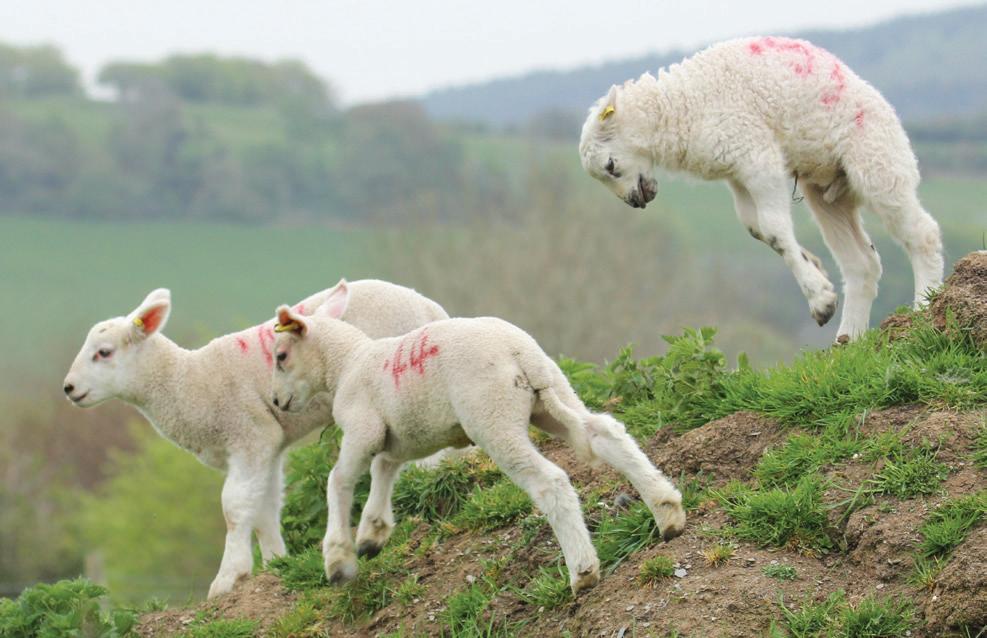



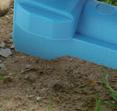




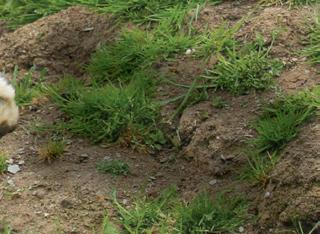

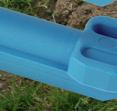
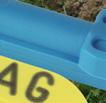
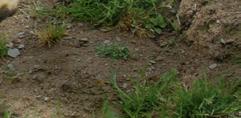

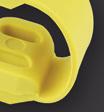












SHEEP farmersguardian.com MARCH 1 2024 | 11 QUICK TURNAROUND 01643 841611 www.shearwell.co.uk TAGS IN STRIPS TAGS IN DRUMS SET Tags VISUAL & EID Excellent Retention Britain’s Favourite Sheep Tag All prices exclude VAT and delivery charges. 75p 98p 80p £1.08 Breeding Pairs from Slaughter Tags from Breeding Pairs from Slaughter Tags from
Tagger Turb
A familiar name at the top of most Beltex sale reports is Matthew Burleigh, a young farmer who has paved his way in the breed after starting from scratch. Ellie Layton reports.

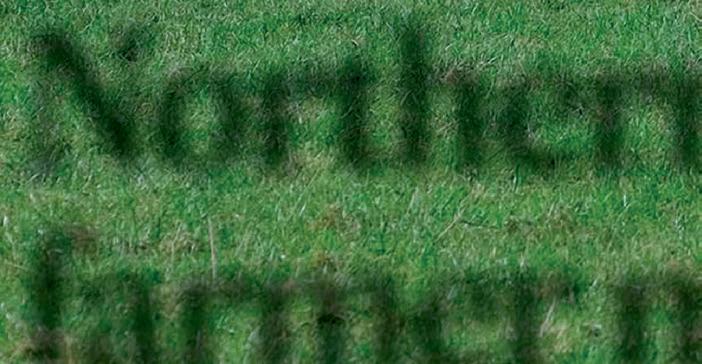
Northern Ireland farmer makes his mark with Beltex
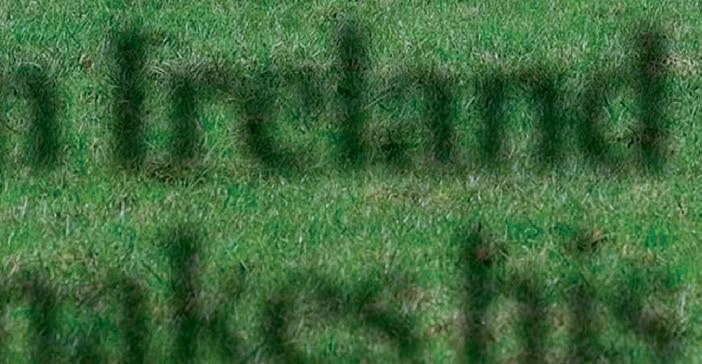

Having an eye for quality sheep and a solid business mind has proved a success for Matthew Burleigh, who farms near Enniskillen, Co Fermanagh, with his mother Margaret and father William.
Mr Burleigh is the fourth generation to farm on their 40-hectare (100-acre) unit, which he says is the average size system in Northern
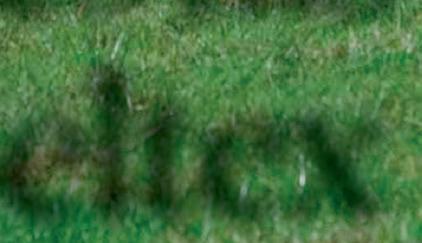
Ireland. An extra 20ha (50 acres) are rented within five miles, to support the stock on their fully grassbased system, which is not involved in any Government schemes other than the soil nutrient health scheme.
His partner Rachel Almond is a senior semen co-ordinator at AB Europe, where she has worked for the past 12 years and her expertise proves useful for their three
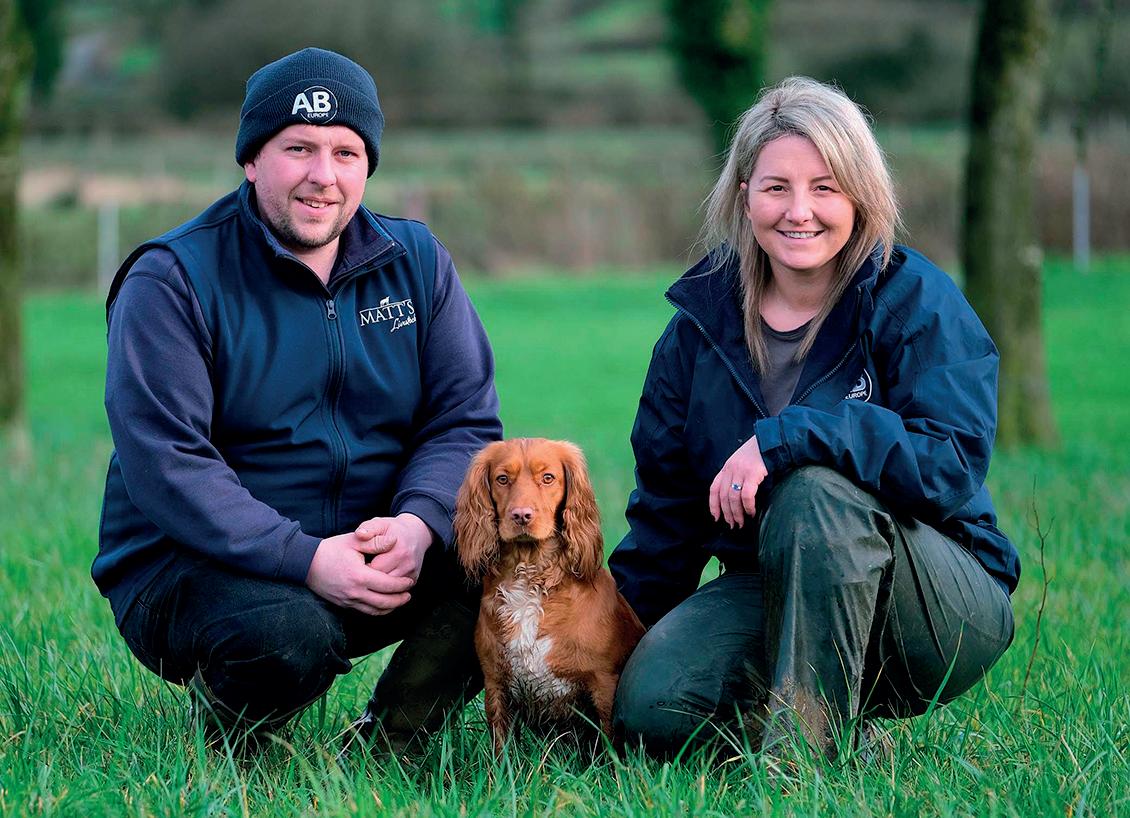
pedigree flocks, which involve a great deal of embryo transfer work.
The Burleighs established the Matt’s prefix in 2006 for their pedigree Beltex flock which has since seen Blue Texels and Badger Faced Texels added to their repertoire.
Before this, the family ran a commercial flock and suckler herd, both of which have been reduced in numbers to support their rising pedigree sheep numbers.
Mr Burleigh says: “We used to run 80 suckler cows, but the herd now stands at 30 head of Simmental cross Beef Shorthorns which are split into spring and autumn calving groups and go to a Charolais bull, with all youngstock sold as weaned in Enniskillen market.”
Now, they run 45 pedigree Beltex ewes alongside the commercial flock which is made up of Suffolk Mules and Belclare ewes, a breed which he describes as an ‘Irish Lleyn’.
Some of the commercial flock are used as recipients for the pedigree flock while the rest run with home-bred Blue Texel rams.
The lambs are sold through their local mart or to a local farmer who buys for an abattoir.
Mr Burleigh says: “Due to being

quite heavily stocked, we creep our youngstock from a young age to get them off the farm, so the pedigrees have access to ample grass before the sale and tupping season.”
Interest in the Beltex breed arose when William borrowed a ram from his brother, a butcher, who kept them for their carcase qualities.
After being pleased with the lambs, they headed to Dungannon for a Northern Ireland Club sale to buy some females, but it took two attempts to make a purchase.
Consistent
“We were not able to buy-in lots of females and wanted to get a consistent flock, so we used embryo work and kept working away slowly.
“In 2010, we bought a few females from Jock McMillan to help grow flock numbers which performed well and suited our type,” says Mr Burleigh.
Since building the flock, Mr Burleigh says his type has stayed consistent, looking for an animal which is breedy and has a bit of size. He says: “We chose proven bloodlines and started with humble money, which has repaid us the
farmersguardian.com 12 | MARCH 1 2024 SHEEP
PICTURES: COLUMBA O’HARE
Matthew Burleigh with fiancee Rachel Almond and Fig.
The Burleighs specialise in pedigree Beltex, Blue Texels and Badger Faced Texels.
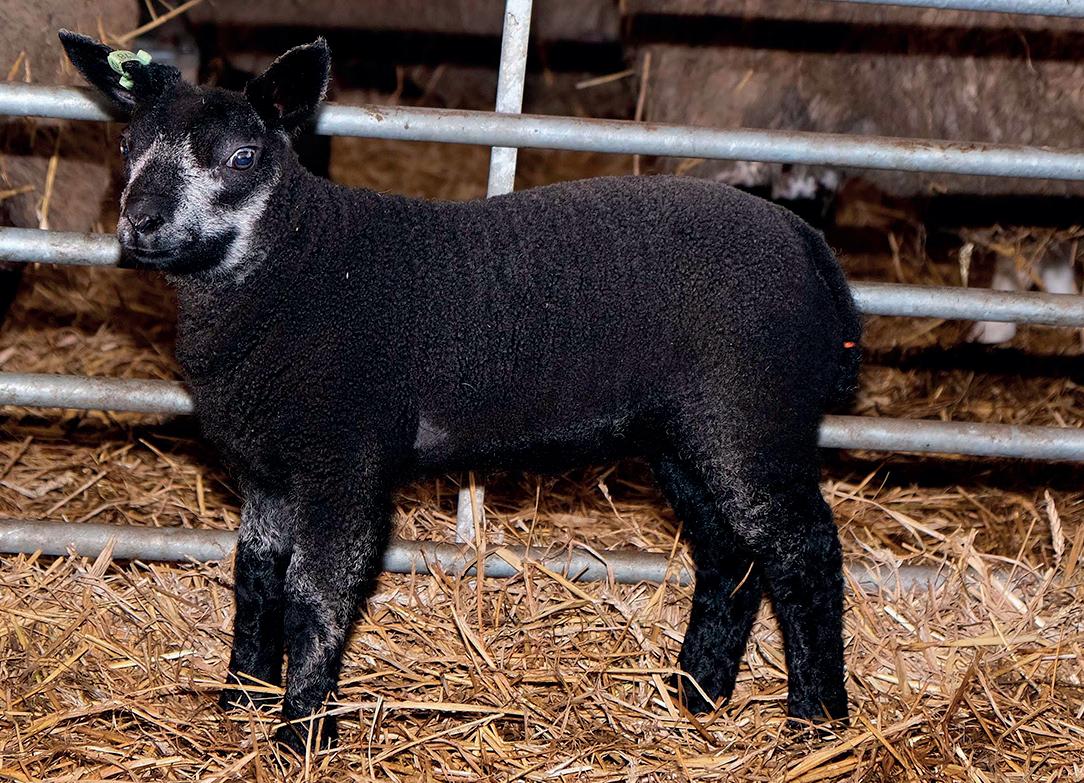

We have always invested in females and this has allowed us to put a stamp on our flock to breed consistent lambs MATTHEW BURLEIGH
most. If something suited our type and was pricey, we would look for a full sister to stay within budget.
“We started our flock with a low budget, but our most notable purchase in the early days was Rocksolid Molly in 2009.
“We flushed her and had 10 embryo lambs on the ground with two of the lambs achieving 2,000gns selling to successful flocks. One of
those lambs was sold to Adrian Roberts as a shearling at Carlisle Premier Sale and he went on to win the Royal Welsh show as an aged ram. Success like this in the early days helped establish a name for ourselves.”
Three of its ewe lambs were retained and one went on to breed Matt’s Abracadabra which sold for 12,000gns in 2015.
Best
In the same year, the family bred what they believe to be their best sheep, Matt’s Actress, which was reserve champion at Balmoral Show in 2015 and champion in 2016, she also was reserve champion in the Irish Beltex breed’s national show in 2016 and claimed the championship the following year.
Mr Burleigh says Actress passed on style to her progeny, including Matt’s Ducati which sold for 10,000gns in 2018.
In 2012, the family made their first notable male purchase, Pentan
Showman, from Carlisle for 3,400gns.
“At this point, the breed did not have the following it does now and trade was steady, but its first four sons exceeded 2,500gns.
“Following this we recruited Hackney Warrior who bred both Abracadabra and Ducati,” he says.
Warrior also bred Matt’s Adelle which helped them on their way to their most noted success.
“It was an Adelle daughter who bred Flash Harry and we still hold the current breed record for a Beltex ram lamb.
“He was purchased by Paul Tippetts and Christine Williams for their Shropshire-based Hackney and Wilodge flocks, with Herefordshire-based, Richard and Jamie Jerman, who took a third-share.
“We knew we had a good pen of lambs with Flash Harry being a
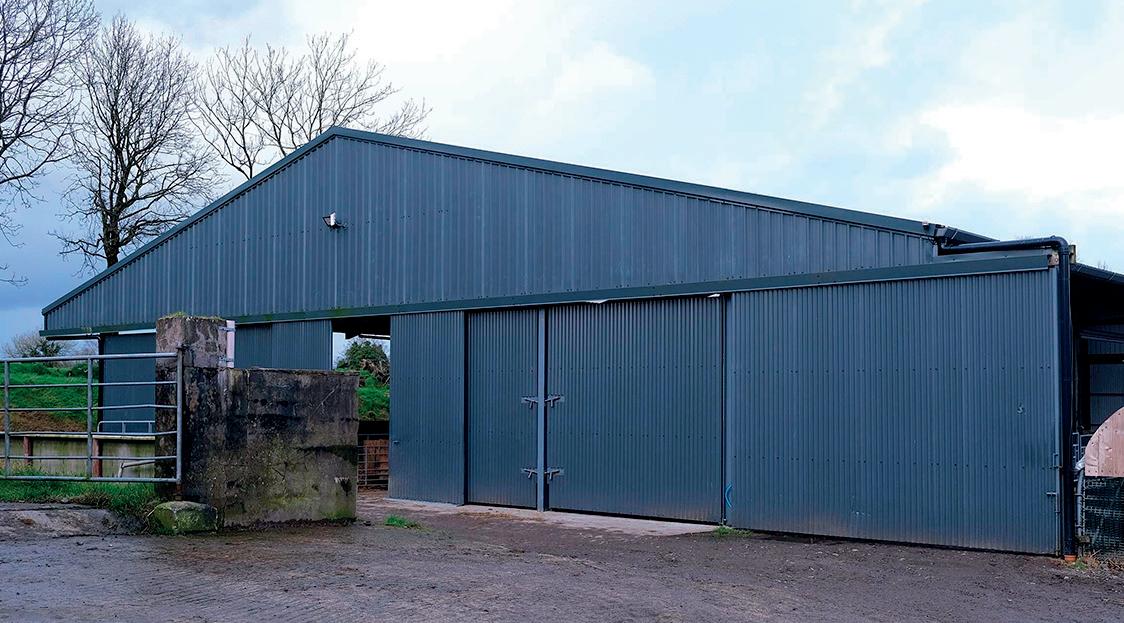

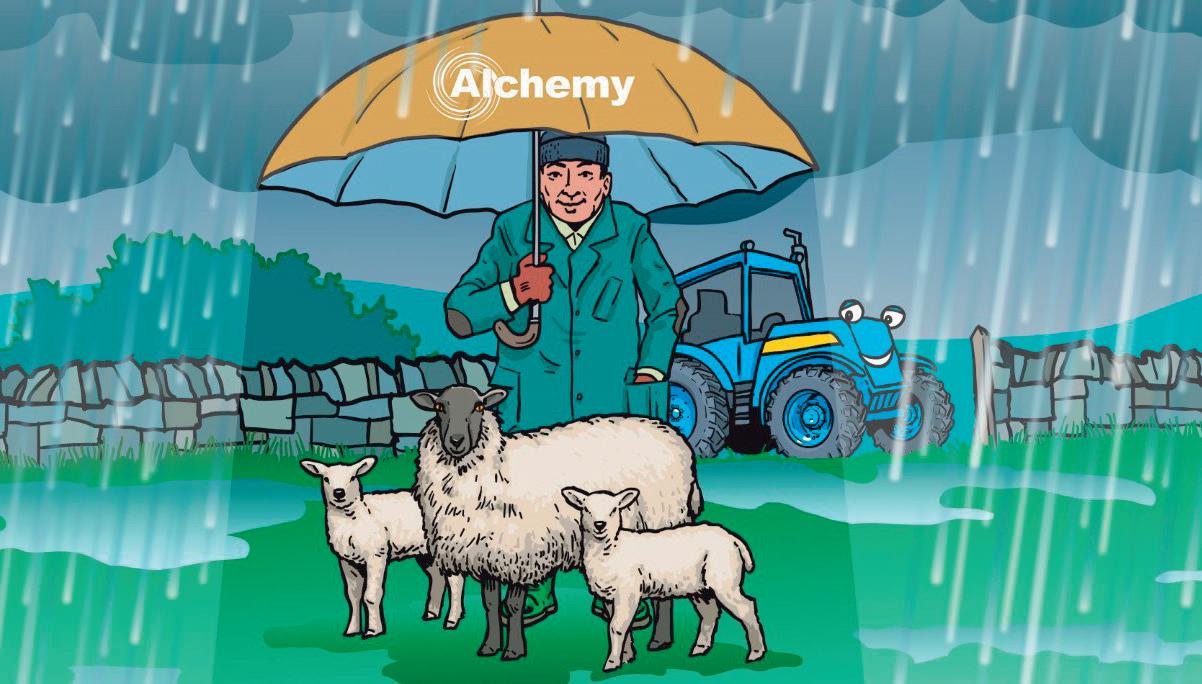

SHEEP farmersguardian.com MARCH 1 2024 | 13 Chris Day on Tel: 07769 705004 Here for the rainy days as well! Tenant Farmers For the personal touch ring Chris Day on Tel: 07769 705004 chris.day@abfltd.co.uk Only available in England, Wales & Scotland
The sheep shed was built in 2021.
One of the 10-day-old Blue Texel ewe lambs.
A cross-bred ewe with its 10-day-old Badger Faced Texel lamb.
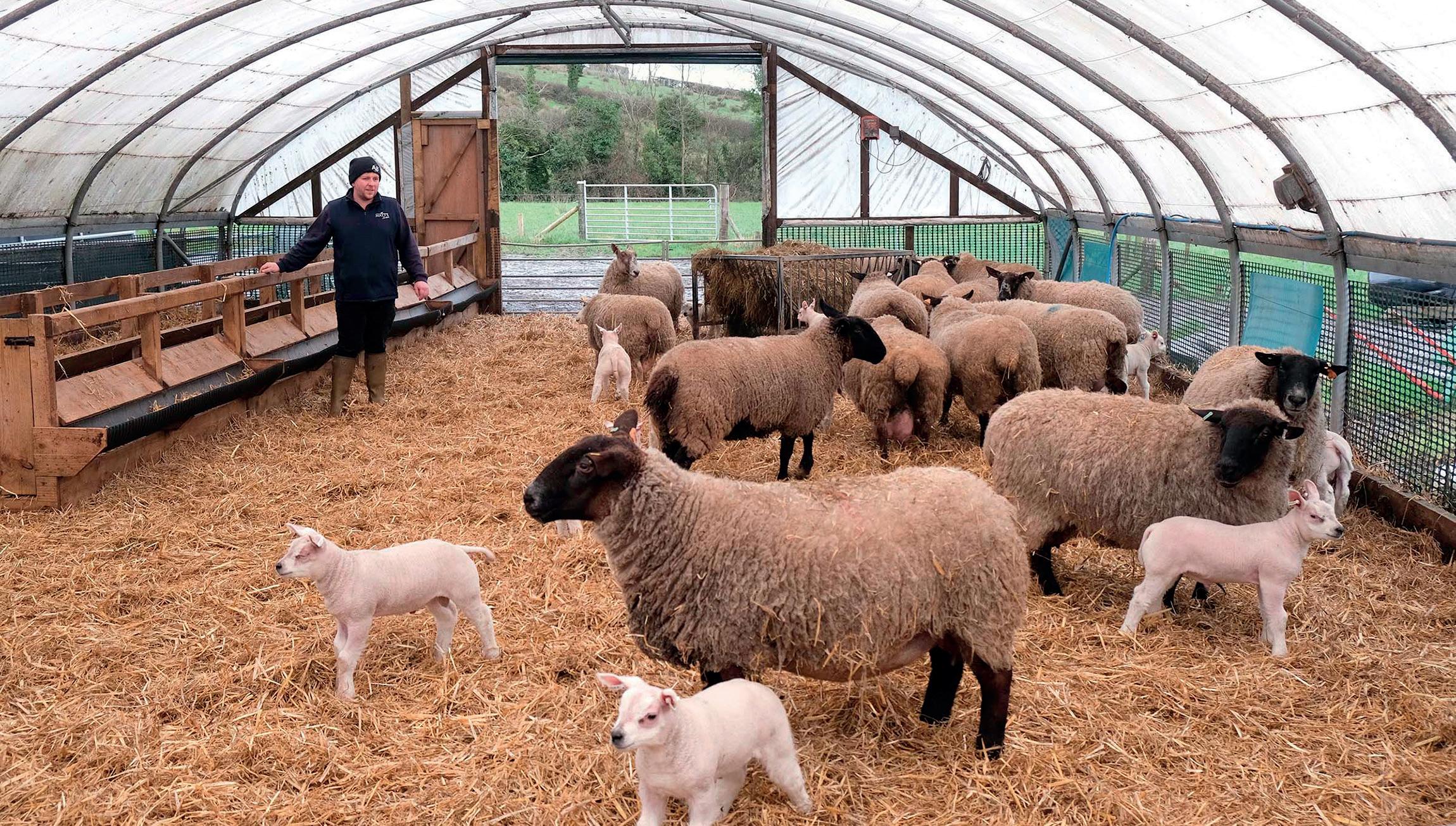

standout. But even with interest shown from breeders, you never expect something like that,” says Mr Burleigh.
“We have always invested in females and this focus has allowed us to put a stamp on our flock to breed consistent lambs. In return, this has allowed us to produce consistent males.”
The pedigrees start lambing from the start of February before the commercial flock starts in March.
Once they are on the ground, all of the pedigree male lambs are kept entire to allow full selection when it comes to sale time.
Mr Burleigh says: “The lambs
graze together on grass with access to creep. Although we have a fair idea beforehand, we do not select them till June.
“Certain lambs will catch your eye from day one, while others blossom later in the season.”
In July, the sale team are transitioned onto a diet to gain condition and do a first trim before they are fully prepared closer to the sale date.
Stock is always for sale on farm, but their main outlet for the Beltex breed is through the ring, at Carlisle and Skipton in particular.
“We sell on average 20 ram lambs and 50 yearling rams plus 70 females per year. We take a con-
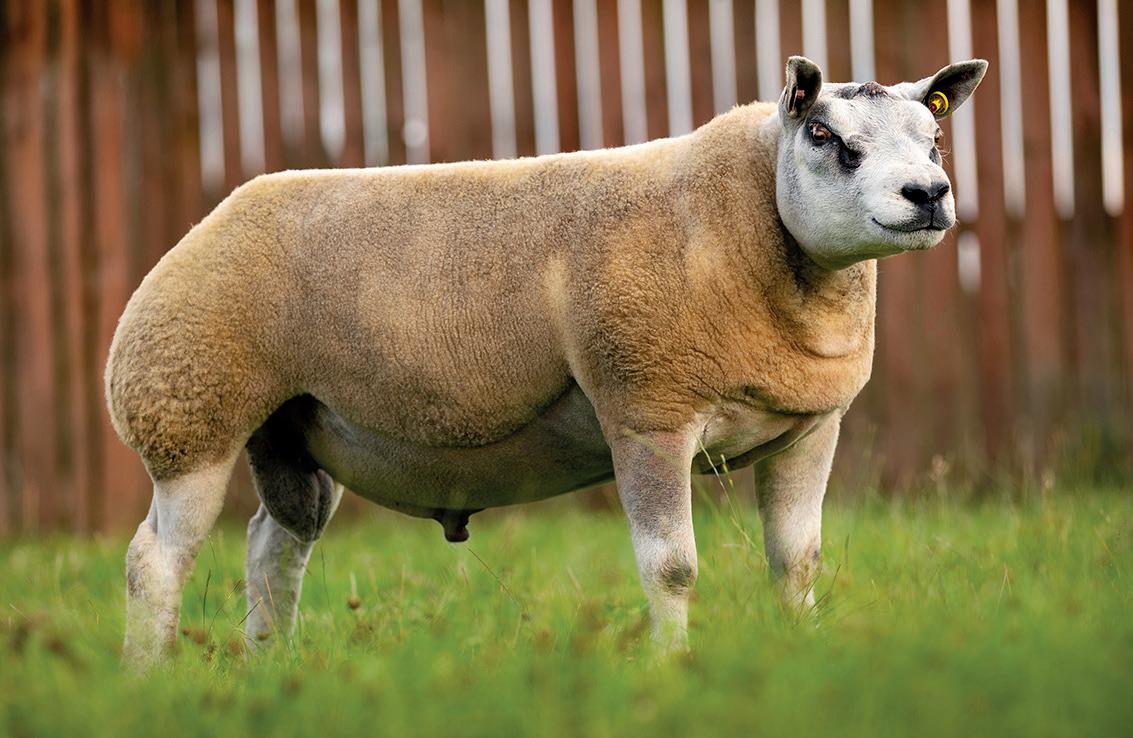
signment of in-lamb gimmers to various sales in December and sell around 20 gimmers off the farm privately, many of these going to Ireland, with a lot of interest from new breeders, which is always nice to see,’ he says.
“Our Blue Texels and Badger Faced Texels are generally sold through Carlisle, Skipton and Dungannon mart, with a few sold privately.
“We first took stock to Carlisle in 2012 with four Beltex ram lambs.
Streamline
“We only sold two at the sale but it gave us a chance to make ourselves known and meet breeders,” he says.
“Rome was not built in a day and over the years we have been able to streamline the process of taking stock over the water and select what we think will suit each sale most.”
Mr Burleigh says the lamb and yearling markets are quite different. The lamb market wants something with a bit more style and presence, whereas yearlings require more size and heavier bone.
“It is horses for courses, both types are equally as good, it is just breeder preference,” he says.
Today, the flock has sold progeny to all four corners of the UK and to Ireland, which they do not believe would have been possible if they only sold at Northern Ireland sales.
Mr Burleigh says they are fortunate to sell through markets in both Northern Ireland and on UK Mainland.
They believe higher prices are more achievable on the mainland as there are more buyers and they have more choice.
The journey to any UK Mainland sale starts from the farm with a twohour drive to Larne, once there, the Department of Agriculture, Environment and Rural Affairs carries out livestock inspections before the two-hour ferry crossing and a two-hour plus drive from port to the markets.
Although the outlay is high at £600 per sale, once it is broken down per head, Mr Burleigh says it becomes more practical and after the first time, it is fairly straightforward.
He says: “We have only been stopped due to weather twice when the ferry was cancelled and would not carry livestock.
“Rules implied after Brexit mean animals could not return to Northern Ireland straight from a sale, so it is not easy for Northern Irish breeders, but hopefully these rules will change in the near future, although we now have the added concern about the implications bluetongue is bringing.
“However, we still plan to sell our stock as usual this coming year.”
Exporting pedigree animals
farmersguardian.com 14 | MARCH 1 2024
SHEEP
PICTURE: MACGREGOR PHOTOGRAPHY
The Burleighs’ newest stock ram, Todhall Hurricane, purchased privately last autumn.
Matthew Burleigh checks on some of the 10-day-old Beltex embryo lambs from cross-bred ewes in the tunnel at the farm.
means that health status is high on the family’s agenda.
Mr Burleigh says: “Veterninary checks, blood tests for males and certificates for every animal. But the whole flock is on a system to cover clostridial diseases and has a high standard across basic husbandry.
They are also on a scheme for both scrapie and maedi visna, which they ensure any stock they purchase is also following.”
New sire
The most recent new sire is Todhall Hurricane, which was bought privately and is a son of 9,000gns Wannop’s Godfather out of a Callacrag Bull’s Eye daughter, and a full brother to Todhall Hercules which sold for 42,000gns in August 2023.
He says: “He is one of the best examples of the breed we have seen and hope that he passes his qualities onto his progeny which are due at the end of February.”
Looking into the Beltex flock’s future, the family aim to continue growing and selling their stock throughout the UK and Ireland and
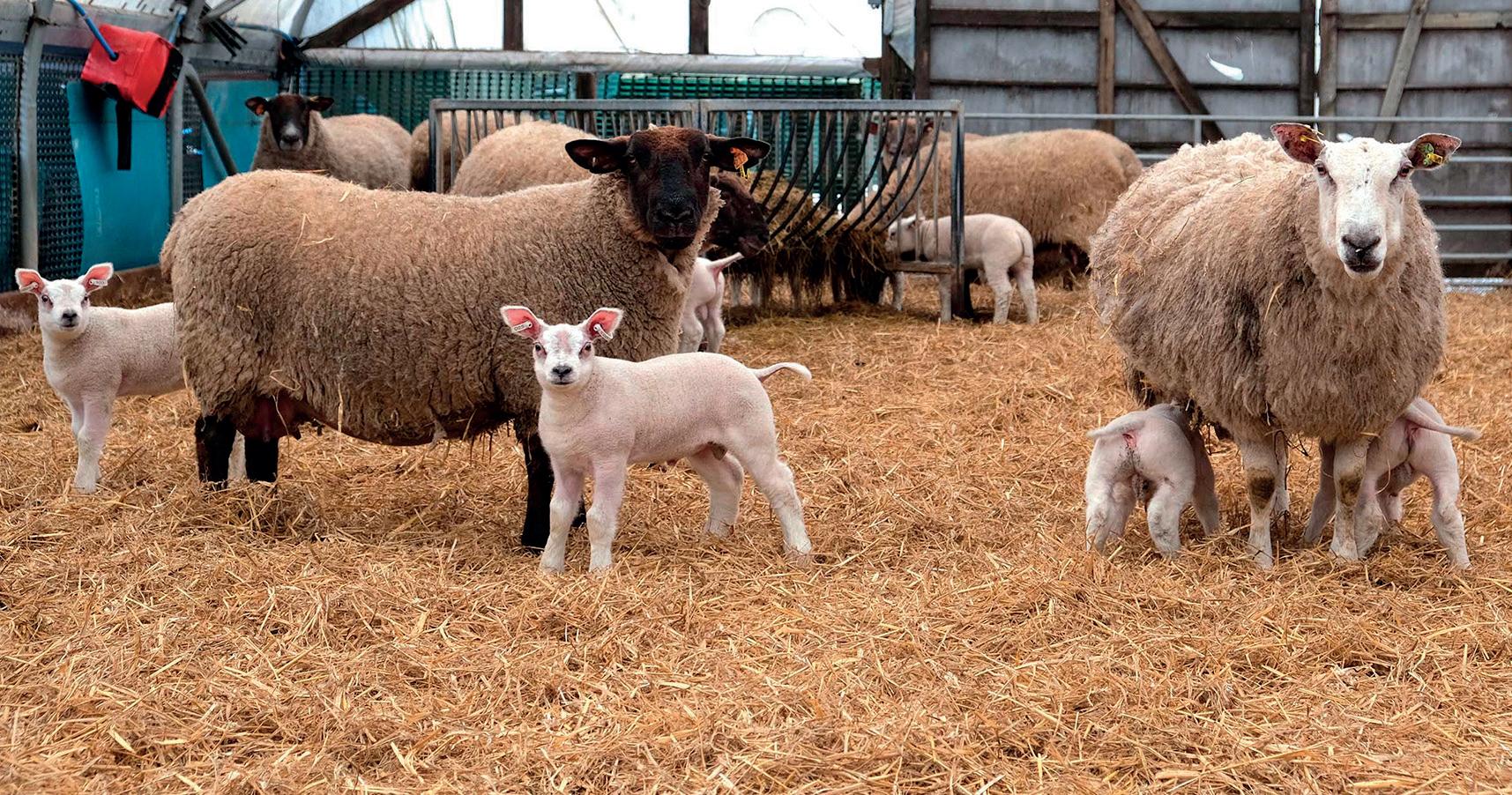

improving the stock through our own female lines, through embryo transfer and natural service.
They are also expanding their other breeds and have already reaped rewards from their Blue Texel flock which was established in 2019, achieving two Northern Supreme Sale Champions, in 2021

Matt’s Flash Harriet selling for 8,000gns and Matt’s Hitman who went on to sell also for 8,000gns in 2023.
The flock achieved Reserve Champion in 2022 with Matt’s Gypsy King, selling for 10,000gns.
Notably, their top price achieved was for a gimmer, Matt’s
Fittest,which sold for 20,000gns.
“We had always liked the breed and have been fortunate to have done well quickly, applying the knowledge we have gained from the Beltex, we are looking forward to seeing lambs on the ground by our new stock ram, 10,000gns Sams Houdini,”adds Mr Burleigh.
RACEWELL MAKES





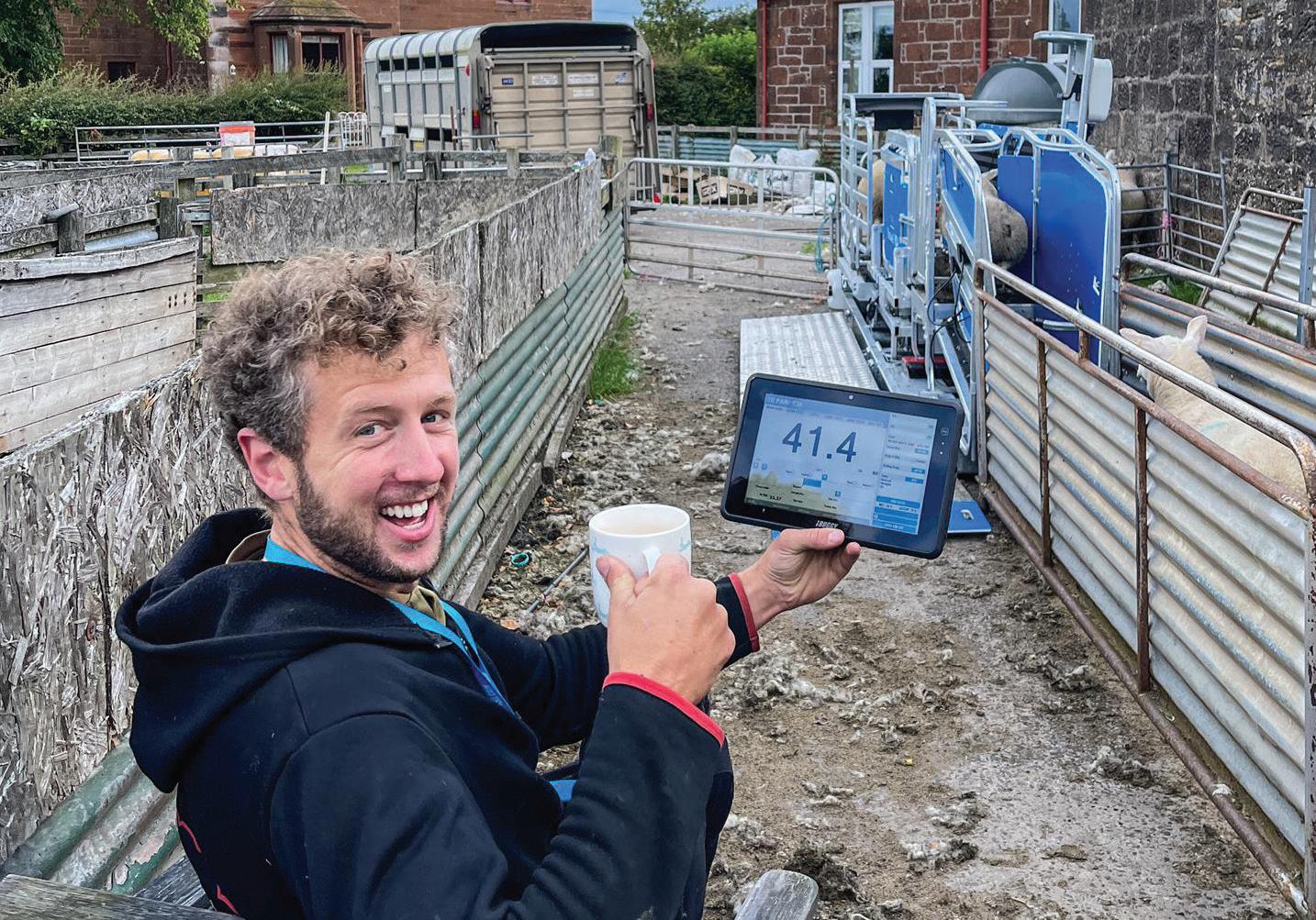
SHEEP farmersguardian.com MARCH 1 2024 | 15
SHEEP WORK EASY! Scan the QR to watch the testimonial from Cammy Wilson @ The Sheep Game Call us on 0800 249 4568 or visit www.tepari.com
Some of the commercial flock are used as recipients for the pedigree flock.
A young farmer from Cumbria has achieved her dream of owning her own flock and is rapidly gaining a reputation as a breeder of Dutch Spotted sheep. Sarah Alderton went to meet her.
Young farmer overcomes challenges to establish her Dutch Spotted flock
First-generation sheep farmer Eilidh Mae Hortin from Wigton, Cumbria, says winning the NSA Next GENE-eration prize has enabled her to take her pedigree flock of Dutch Spotted sheep to the next level.
Ms Hortin first got into sheep farming in 2016 after taking on a lambing job on a local farm and gaining two pet lambs. She admits that she was ‘hooked’ at that point and has never looked back. That is despite her
dad, who runs a dairy farm, initially limiting the number of sheep she could have to 12.
However, seven years and 120 sheep later, she is beginning to make her mark in the industry.
Ms Hortin now has a flock of 70 pedigree Dutch Spotted ewes and ewe lambs; the remainder comprises of commercials, including Texel and Beltex crosses.
Ms Hortin’s first foray into the Dutch Spotted breed came in 2019 after seeing some advertised by local
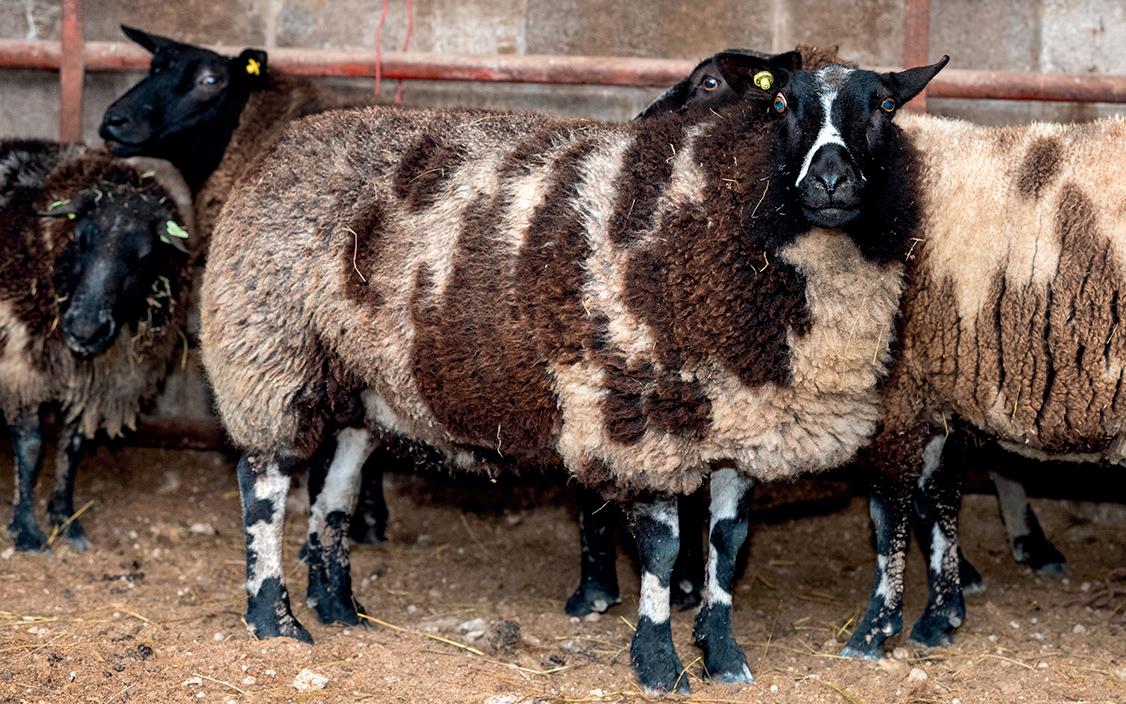
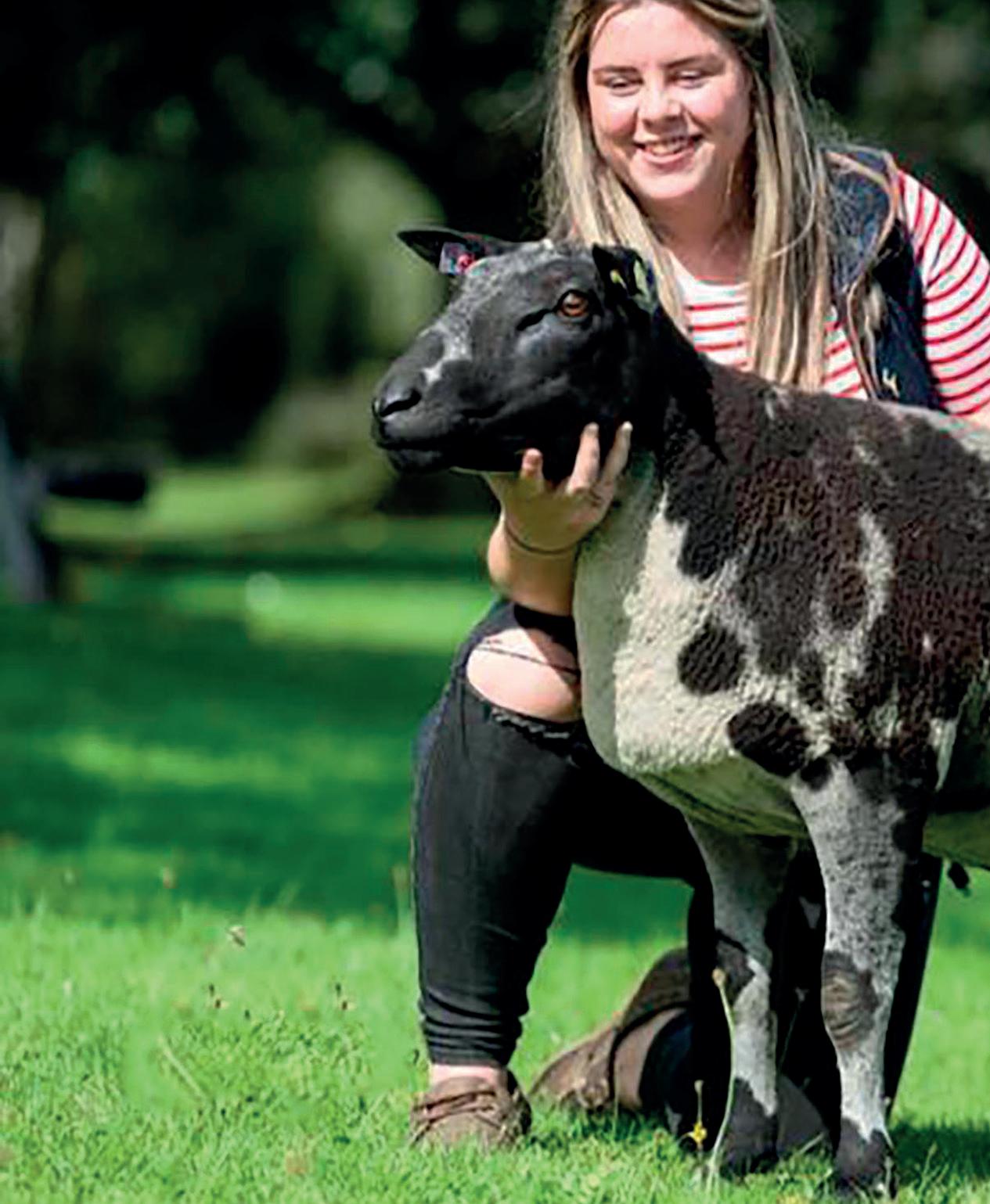

breeder Alan Smyth of the Eden flock on Facebook.
She says: “I saw him advertising a tup and thought they looked quite interesting.
“I bought a tup from him and he threw in a scraggy pet lamb for my luck money. That scraggy tup lamb, Eden Connor, ended up being the best tup and is still used in the flock today.”
Connor was initially used across the commercial flock, but as Ms Hortin got to know more about the breed and realised the type of lambs the Dutch Spotted produced, she decided to focus entirely on building a pedigree flock under her prefix Murtles Dutch Spotted.
Dutch Spotted are renowned for being easy lambing, milky and hardy with a good temperament and produce a good carcase. There is also a market for their wool.
Ms Hortin says: “I knew I would struggle to make a name for myself if I went into Beltex or Texels as there are already a lot of established breeders and top pedigrees are a lot more money to buy. Because the Dutch Spotted at the time was lesser known, I could buy decent stock at an affordable price. I also liked the breed as they are a bit funky and different.”
Ms Hortin focused on building a flock using lesser-known pedigrees to create her own identity, breeding for maternal and terminal traits.
She has sourced stock from across the country and even imported seven ewes from the Netherlands in 2020 from renowned breeder Joost Louter, paying between £500-£700 apiece.
In 2023 she applied for the NSA Next GENE-eration competition, which, for the first time in 2023, teamed up with the Dutch Spotted Sheep Society to give away five ram vouchers, each to the value of £750, to be redeemed at an official Dutch Spotted Sheep Society sale.
Voucher
Ms Hortin bought Woodies Fast Track from the Carlisle sale in August for 1,200gns and says that without the voucher, she would not have been able to afford him.
“Tracker caught my eye straight away and had everything I was looking for: length, tight skin and sharp looking. He also had a twin at the sale, but Tracker was my top pick,” she says.
The ram was set to work immediately, being put to 30 Dutch Texels and crosses. Another tup, Merryboro
farmersguardian.com 16 | MARCH 1 2024 SHEEP
Showing her Dutch Spotted sheep has helped Ms Hortin build her pedigree flock’s reputation.
Eilidh Mae Hortin with Woodies Fastrack, which was bought for 1,200gns thanks to a voucher won in the NSA Next GENE-eration competition.
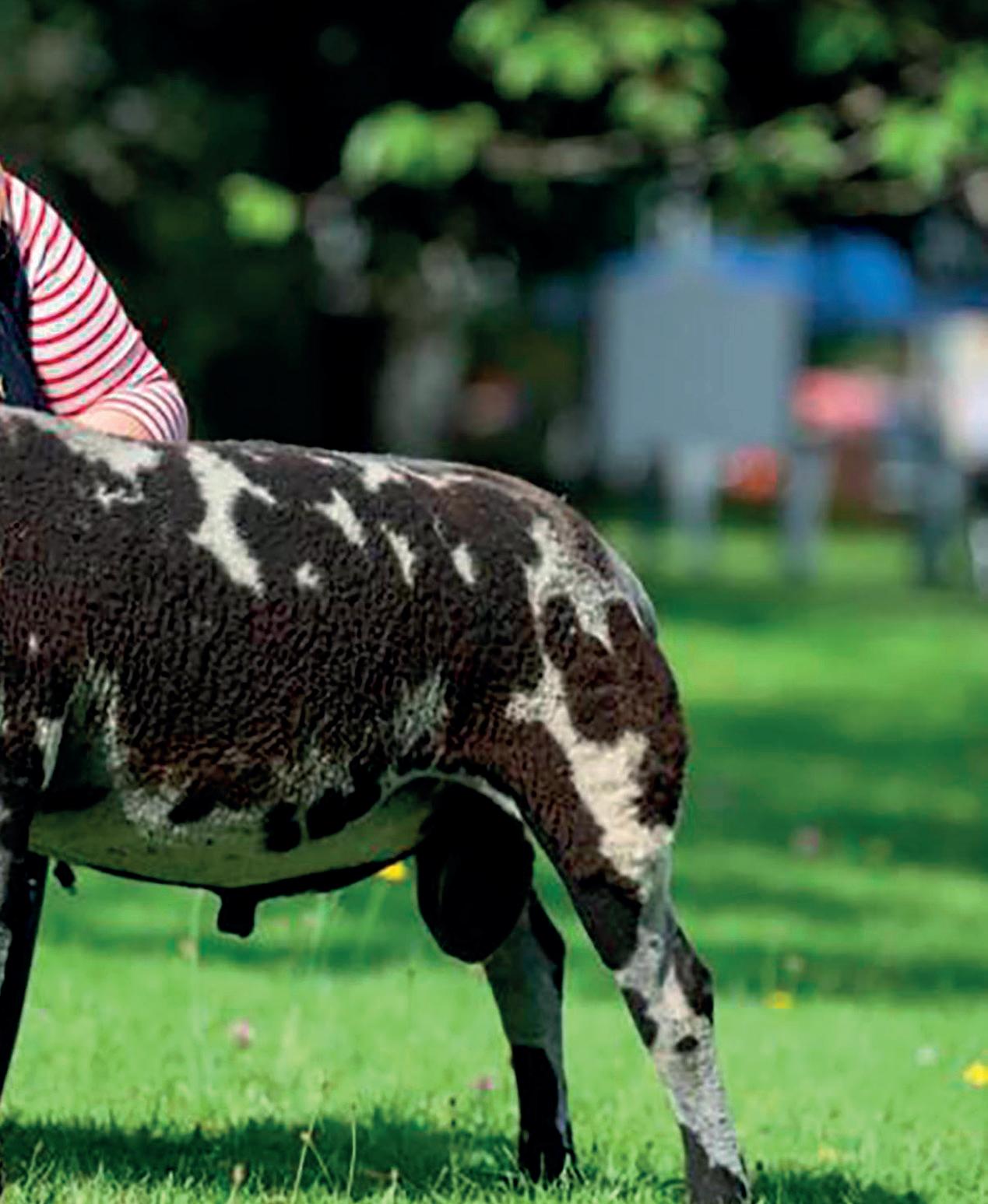
Eyes on Me, was also bought earlier in the summer as an insurance policy.
A vasectomised ram is used to get the ewes cycling, with the aim to start lambing in January.
Cross-bred males are castrated and either fattened or sold as stores, and decent pure-bred rams and ewe lambs are sold for breeding or retained.
“Finished lambs sell well and we sold some through Wigton for £157.
“I also sold three breeding ewes through Carlisle in May 2023 for 1,100gns each. I now sell all over the UK privately and through registered sales,” she says.
Showing has provided a major shop window to build the flock’s reputation. Last year Ms Hortin scooped breed champion and reserve at Dalston Show and Cockermouth and was also showing at Cumberland, Cheshire and Skelton.
We manufacture, supply & build...
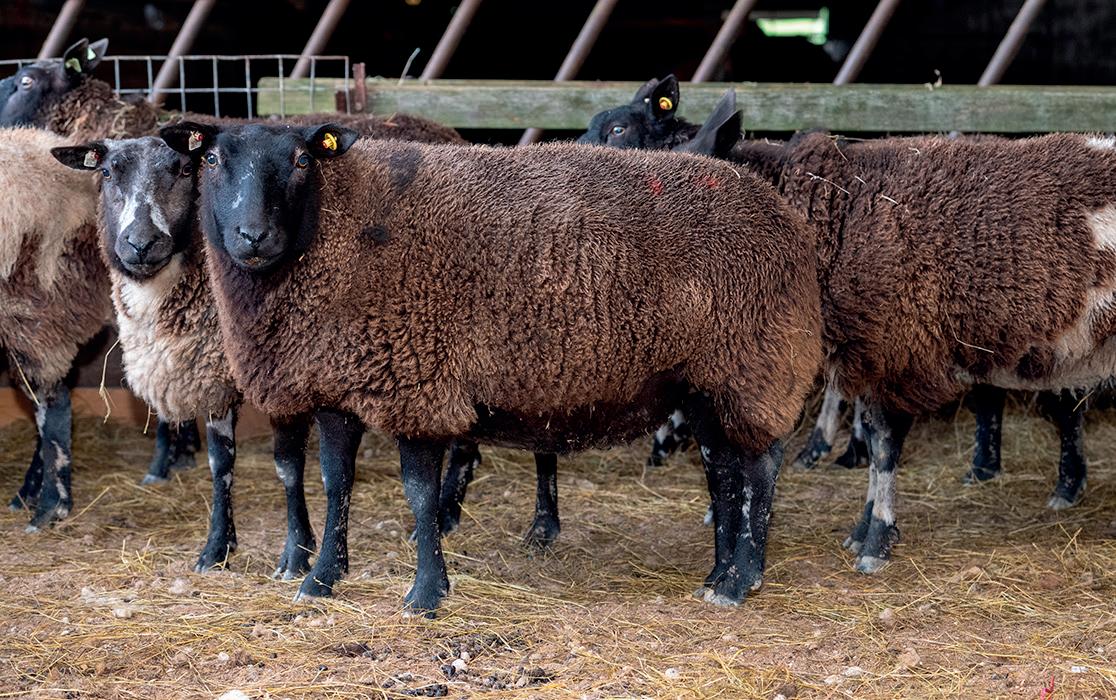
She says: “My dream is to show at the Great Yorkshire and win. Some of my sheep would not look out of place there now.”
Ms Hortin has become so passionate about the breed that she even wrote to all the show secretaries to see if they would include a dedicated class for the Dutch Spotted instead of bundling them into an any other breed section.
“There are enough breeders of us now to have our own class. At the Skelton Show, the Dutch Spotted class had one of the highest entries, with 72 Spotties in the section.
“They are a breed that can stand against the Beltex and Texels and are certainly on the up. They have so many uses as they are decent for fat lambs, are maternal and have an excellent temperament,” she says.
Ms Hortin aims to become MVaccredited, opening even more doors to her. She runs the flock single-handedly, renting seven hectares (14 acres) in the summer for grazing and bringing the ewes and ewe lambs back to her dad’s farm in the winter to graze on land that previously held cattle.
She does not feed the sheep hard and believes that if they cannot
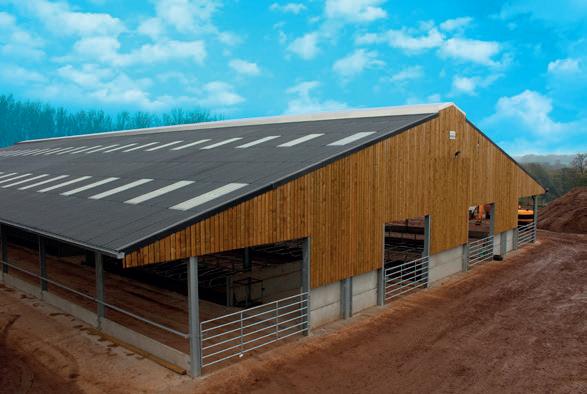
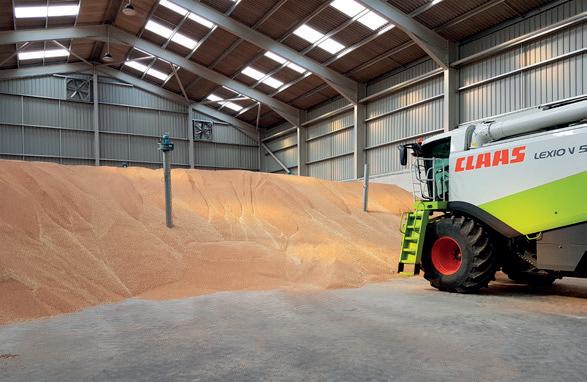
perform off grass, they are not a breed that is right for her system.
Lambs are offered some creep for the first few weeks due to Ms Hortin lambing so early and ewes receive some concentrates in the run-up to lambing, but that is the only boughtin feed offered.
All lambs are sold by August before the breeding season starts.
Alongside running her flock, Ms Hortin milks 200 cows on a local dairy farm and also has horses. However, she admits that it is the sheep that are her passion.
“One day, I dream of owning my own farm,” she says.
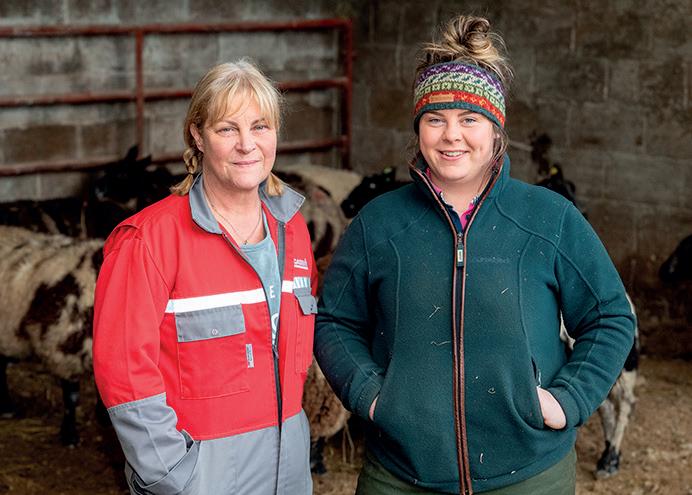

SHEEP farmersguardian.com MARCH 1 2024 | 17 01630 655 555 | sales@flgb.co.uk | www.flgb.co.uk • Cubicle Buildings • Lambing Sheds • Dairy Units • Equestrian • Workshops • Grain Stores • Industrial Units • Bespoke Design • Nationwide Coverage
Ms Hortin, right, with her mother Alli Wannop.
A cross-bred Dutch Spotted in lamb ewe.
Sitting high on the southern fringes of Exmoor, Blindwell Farm is home to the newly appointed National Sheep Association (NSA) chair Peter Delbridge and his family.
They keep three flocks – comprising 420 Exlanas, 90 pedigree Exmoor Horns and about 200 home-bred North Country Mules.
The farm stretches to 178 hectares (440 acres) of owned and rented land, the bulk of which is now improved grassland, which has a high annual rainfall of 178cm.
The Delbridge family have been the farm’s only occupants since Peter’s great great great grandfather, James Delbridge, grazed Exmoor’s open moorland, before taking up residence at the newbuilt Blindwell Farm around 1850.
The farm consisted of open and enclosed moorland and was part of the Poltimore Estate.
The family bred Exmoor Horn sheep at Blindwell from about 1860 and registered the with the Exmoor Horn Sheep Breed Society in 1912.
Peter says: “There is an affinity to the breed and I would hate to be the one to end that run.”
The tenancy came to an end in 1922 when the family bought the farm from the estate. However, in 1945, it was almost lost when Peter’s grandfather James died suddenly, leaving his wife Hen-
Peter Delbridge, the incoming chair of the National Sheep Association, gives his views on the future of the sheep industry and his hopes for his own farm. Marina Schjoett reports.
New NSA chair looks to the future
rietta and Peter’s 15-year-old father Hector.
Sadly, it was deemed necessary to sell up, and in 1946 they found a buyer for the farm, only for them to pull out on the morning of the sale.
But the livestock sale went ahead, with the Delbridges retaining just three sheep, one house cow and a horse to see through the harsh 1947 winter. The blessing of
the failed sale was that it gave the family the option to stay on the farm, which they did, with their much-reduced assets.
Determined, as upland and hill farmers are, they slowly expanded their operation over the coming years; taking on sheep for summer grazing to start with.
By the late 1950s, Hector had started to farm at Blindwell in his

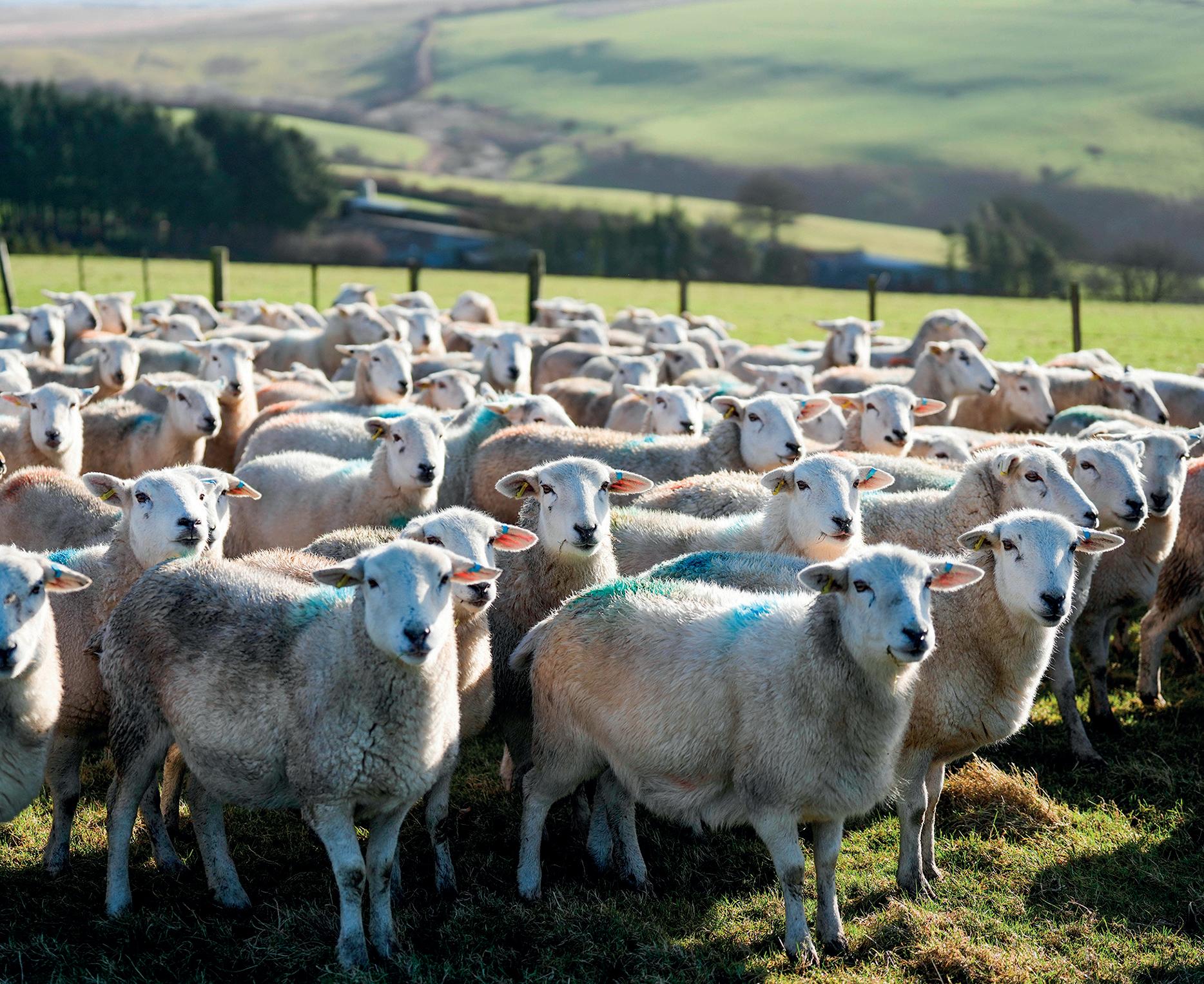
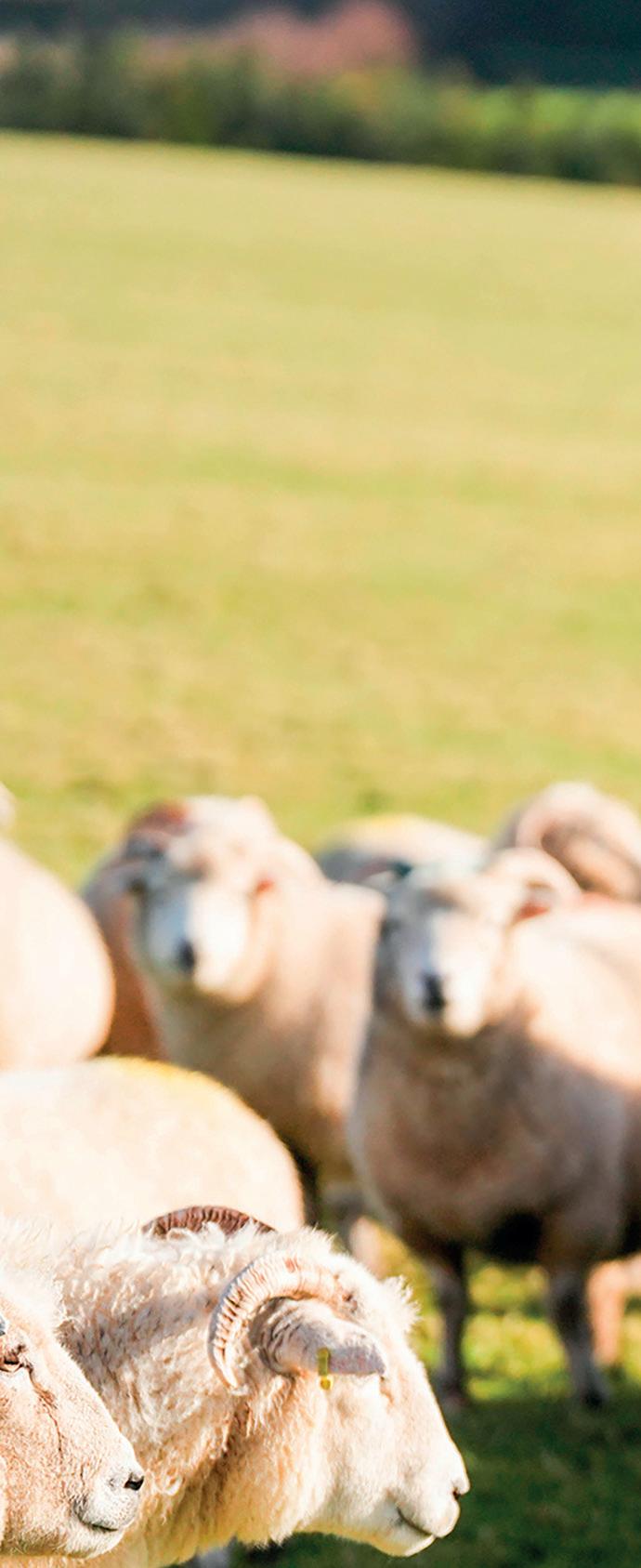
own right. Marriage then brought North Country Mules to the farm, with his new wife Pamela, nee Barrow, bringing them from her family’s farm near Withypool.
Noticing that they did better than the Exmoor Horns, Hector bought Swaledale gimmer lambs and began crossing them with Border Leicester sheep in the 1960s to produce his own Mule.
Peter attended Newton Rigg College in Cumbria before returning to the farm in 1982. He initially concentrated on improving the Mule enterprise, as well as breeding some pure Swaledales.
He bought-in Bluefaced Leicesters, focusing on their health and teeth, prioritising the production of a long-lasting ewe over more surface level qualities.
Exlana
The interest in breeding a fitfor-purpose animal has been an evolving focus for Peter.
About 20 years ago, he and a group of farmers formed Sheep Improved Genetics (SIG), with the objective of breeding a lower input, commercially viable sheep.
The result was the Exlana; derived from many different breeds.
They began with just eight initial flocks, but the breed has since found success across the country.
This self-sufficient sheep requires minimal shepherding, with its self-shedding fleece and improved

farmersguardian.com 18 | MARCH 1 2024 SHEEP
Exlana sheep are derived from many different breeds.
PICTURES: EMILY FLEUR





The beauty of the sheep sector is that it has a broad spectrum; there is no one-size-fits-all, making room for most PETER DELBRIDGE
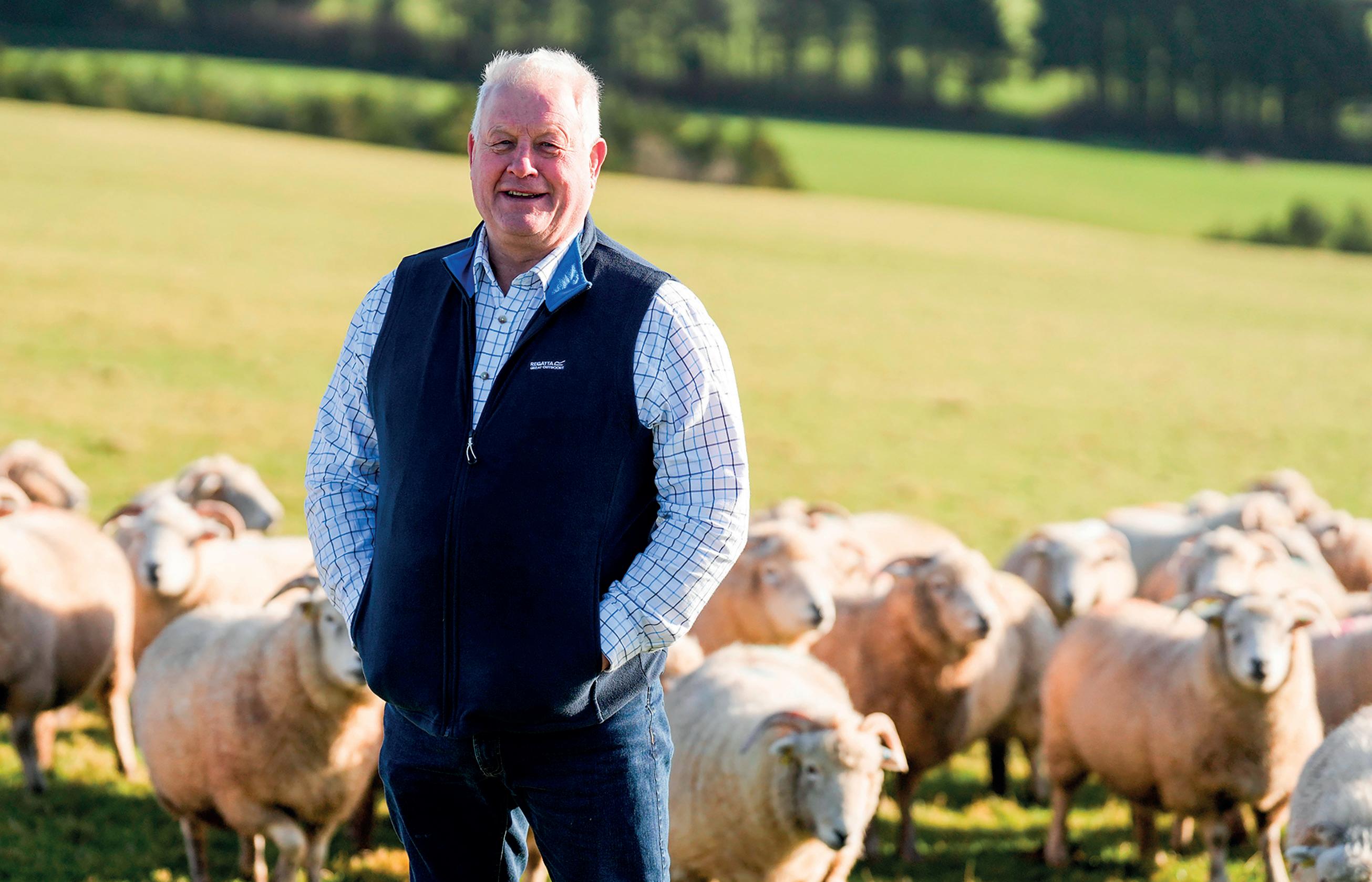



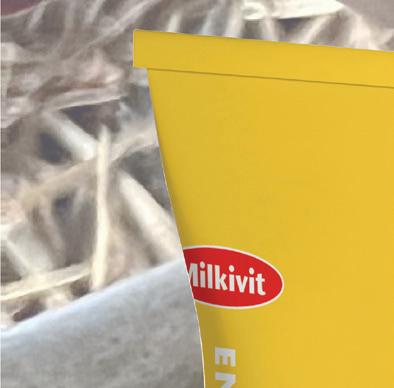
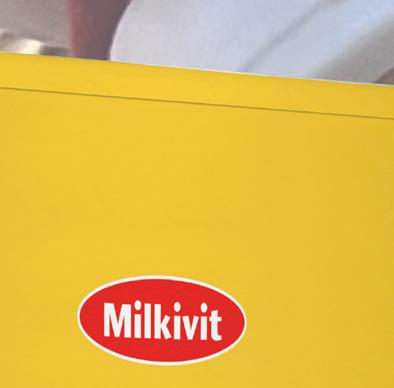
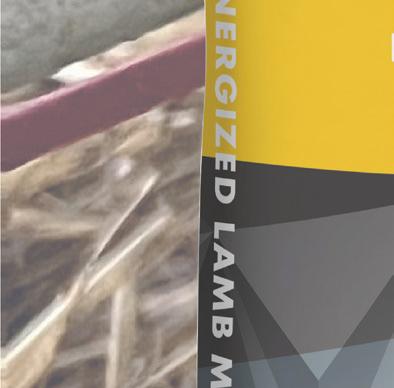
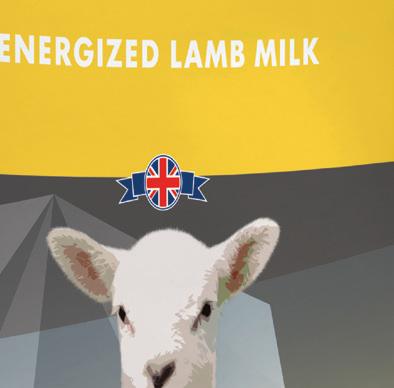



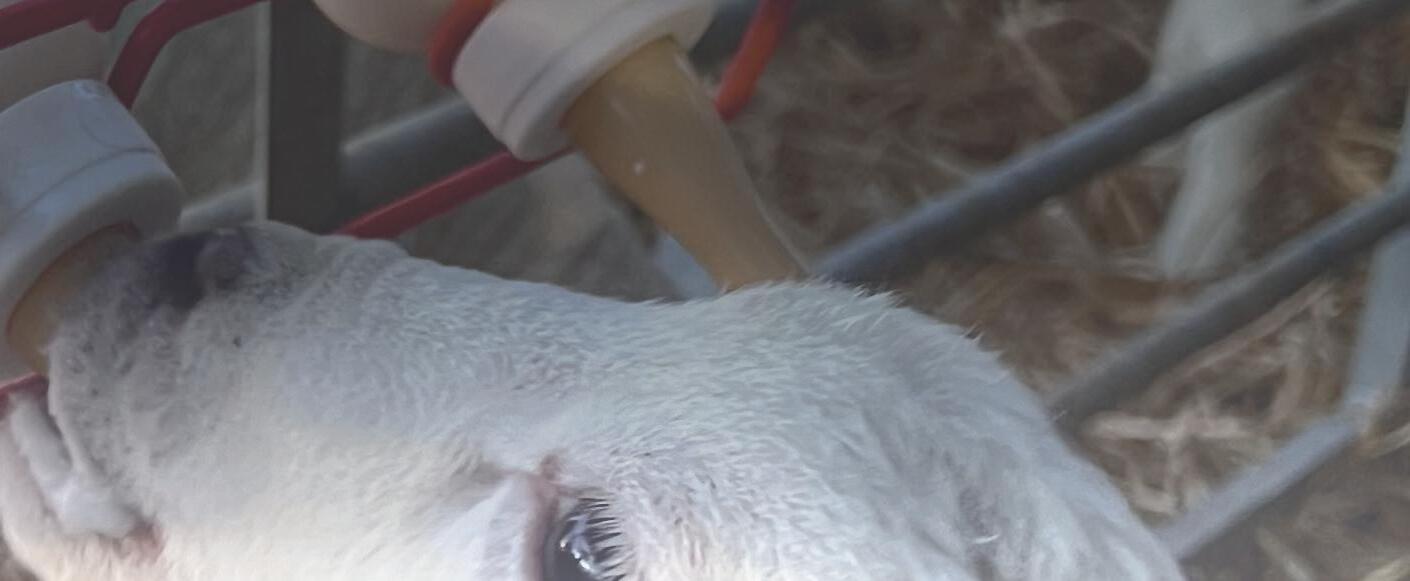
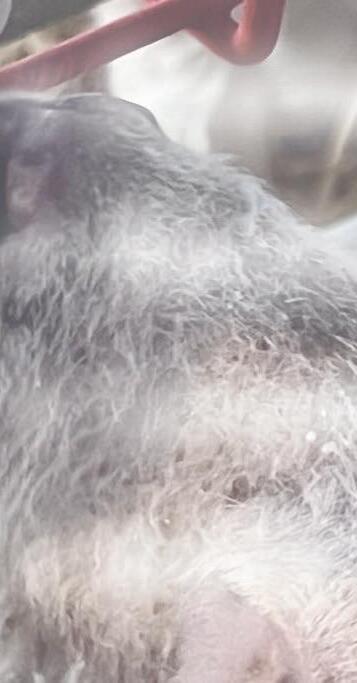






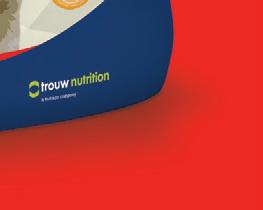







farmersguardian.com MARCH 1 2024 | 19 Make a profit on your cade lambs with Energized Lamb Milk Oil 25.0% Protein 22.5% Ash 7.0% Fibre 0.0% • Faster growth • Reduced risk of scour & bloat • Lower cost per feed • Easy feeding To find out more trouwnutrition.co.uk/milkivit-lamb
Incoming chair of the National Sheep Association, Peter Delbridge.
worm resistance and resilience. Wool shedding has been particularly successful, with the Exlanas shedding as grass grows in spring.
Peter says: “The wool only hangs around on the ground for a couple of weeks, so it is not a problem.”
Worm resistance too has been increased, by breeding sheep with higher immunity, evaluated through individual faecal egg counts and immunoglobulin testing of antibody levels.
The Exlana business model involves intensive progress recording, using stringent genetic data.
Peter says: “The more information you have, the more informed your choices will be.”
The group has now gathered 20 generations of crucial data. The best Exlana rams are taken to a ram selection day among the SIG members, with the rest sold in a breed company sale nearby.
All rams are given estimated breeding values for anthelmintic and worm resistance and the group has recently noticed a big difference in the amount of drench needed.
Peter says: “We are selling time, rather than just sheep. You save on shearing costs, avoid poor wool prices and spend less on ectoparasite control and shepherding.”
Flock management
The Exmoor Horns now amount to 90 ewes and are always bred pure. There is a strong interest in them in the area, with just enough commercial demand and an active show circuit.
Peter says: “Native breeds have characteristics which we may not fully appreciate but may need in the future.
“For example, Wiltshire Horns’ wool-shedding genetics have proven invaluable, whereas a generation ago the wool cheque could pay the rent on a farm.”
While the Exmoor Horns are staying put, Peter has other
NSA outlook
PETER was appointed chair of the NSA in January 2024. He has been involved with the organisation for 25 years, having previously been the South West chair.
He says: “I was struck by how it was a grassroots, led-from-thebottom organisation. It has a real level of influence with Defra and the Government.
“I would like to see sheep farming as an industry valued by politicians and the general public and be rewarded properly for what we deliver. We are not the biggest sector,
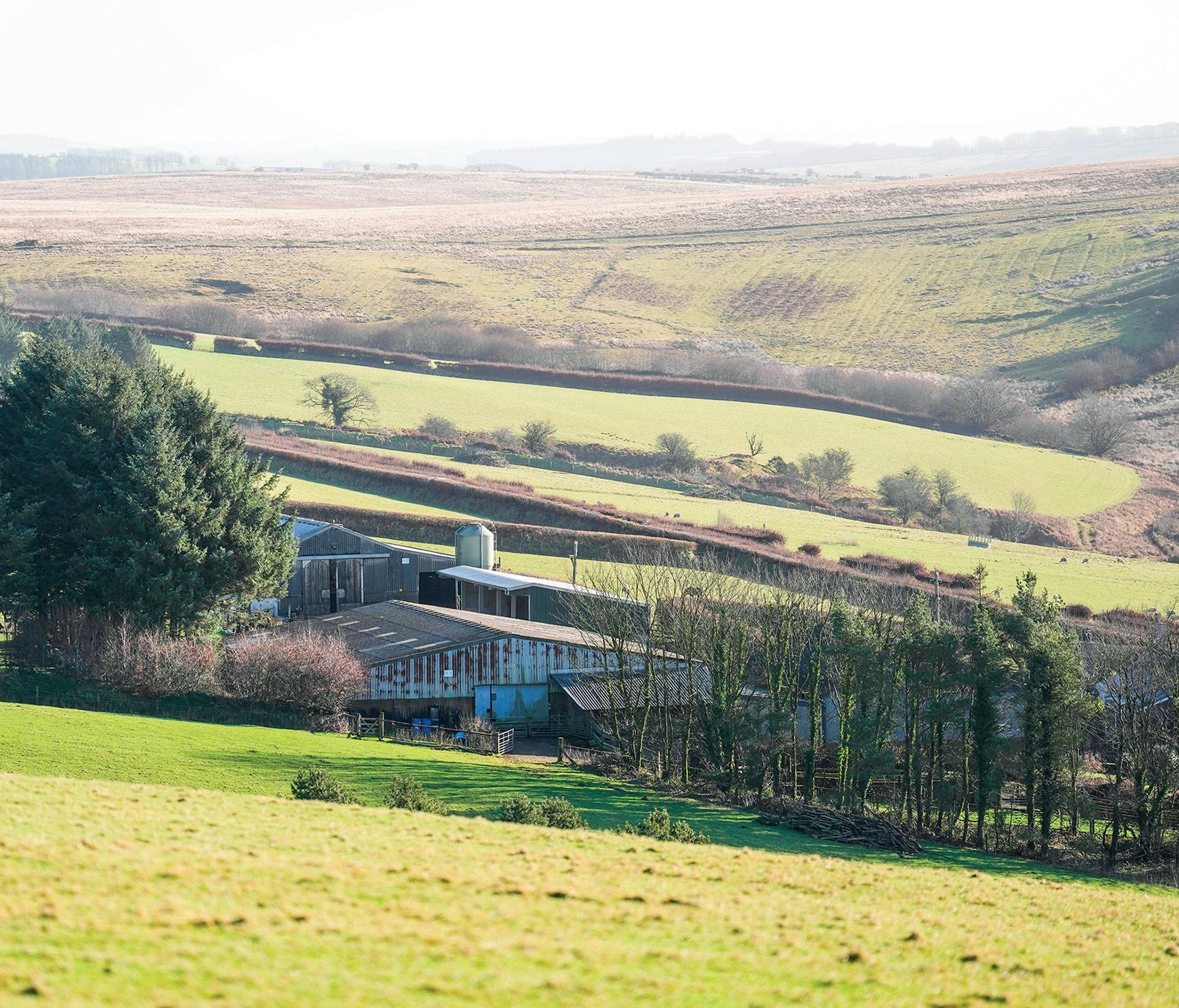
thoughts about his 200 North Country Mules. He sees these leaving the farm within the next two to three years as the Exlana flock improves and expands.
The family also recently sold its suckler cow herd, due to the high inputs and labour requirements, dubious economics and ever-present risk of TB.
The farm has always tried to run a closed flock, except for buyingin rams. During winter, Peter feeds the ewes silage, with extra concentrates and mineral blocks in the six weeks before lambing.
The land is quite peaty, resulting
but we are a very important one, especially in areas the public likes to visit. A thriving sheep industry produces a living countryside.”
When it comes to the sector outlook, Peter finds the new Sustainable Farming Incentive options interesting.
Custodians
He says: “We are in the pilot and, as custodians of the environment, there are a few reasons for optimism. But at the end of the day, most of us see ourselves as food producers and I am still surprised how quickly people have
in molybdenum being locked up.
So the ewes are given a copper bolus, as well as cobalt, selenium and iodine, which is also given to lambs at weaning.
Peter prioritises maternal traits and rearing ability in his breeding, alongside growth rates.
Lambing takes place outdoors in April, when the weather is hopefully kinder, and he numbers the ewes for recording purposes, with lambs given correlating numbers and tagged at a later date.
He dips the lambs’ navels with iodine, rings their tails and grazes ewes with twins in one field and
forgotten the panic caused by seeing empty shelves during the pandemic.
“How long it will take the pendulum of policy to swing back towards production will be very interesting.”
In addition to this, Peter sees the exponential value of sheep farming to new entrants.
He says: “Sheep farming is one of the few farming enterprises which allow new entrants an opportunity to enter the industry. And the beauty of the sheep sector is that it has a broad spectrum; there is no onesize-fits-all, making room for most.”
singles in another. Rams are left entire, unless they begin to grow horns, in which case they are castrated.
All data goes into the farm recording software Shearwell Farmworks. At eight weeks, Peter’s lambs weigh 22-25kg, while at 20 weeks they typically weigh 38-39kg.
Peter retains the best sheep and sells others through breed society sales, with the Exmoor Horns having done very well lately.
He sells Exlanas through the breed company, with Mule lambs and any other surplus animals sold either deadweight or live through local markets.
New project
In the past six months, Peter has become involved with Breed for Change, run by Innovis and funded by the Defra Farming Innovation Programme.
This three-year project has involved putting 72 of his ewes and lambs through portable accumulation chambers for an hour at a time to measure their methane output.
The aim is to see whether there are any characteristics which are related to methane output.
Peter says: “There are 45 flocks involved. We are hoping this will set the template for the wider sheep industry.”
farmersguardian.com 20 | MARCH 1 2024
SHEEP
Blindwell Farm stretches to 178 hectares (440 acres) of owned and rented land.
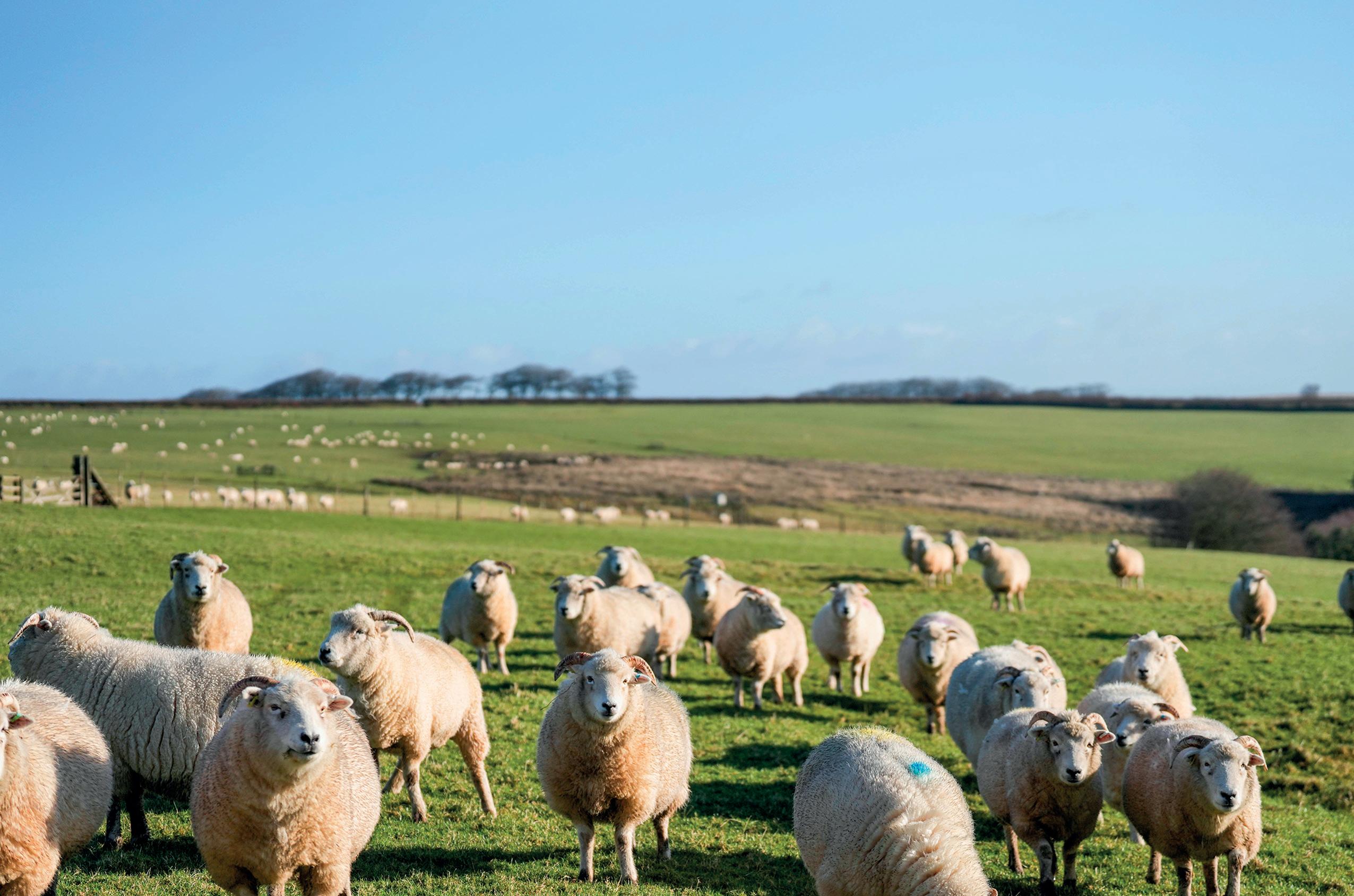


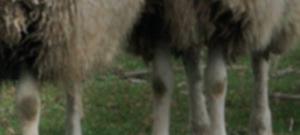
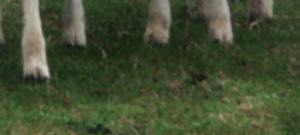

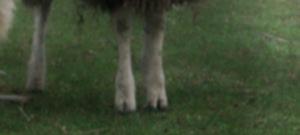
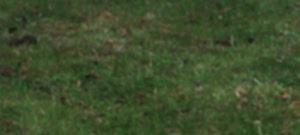
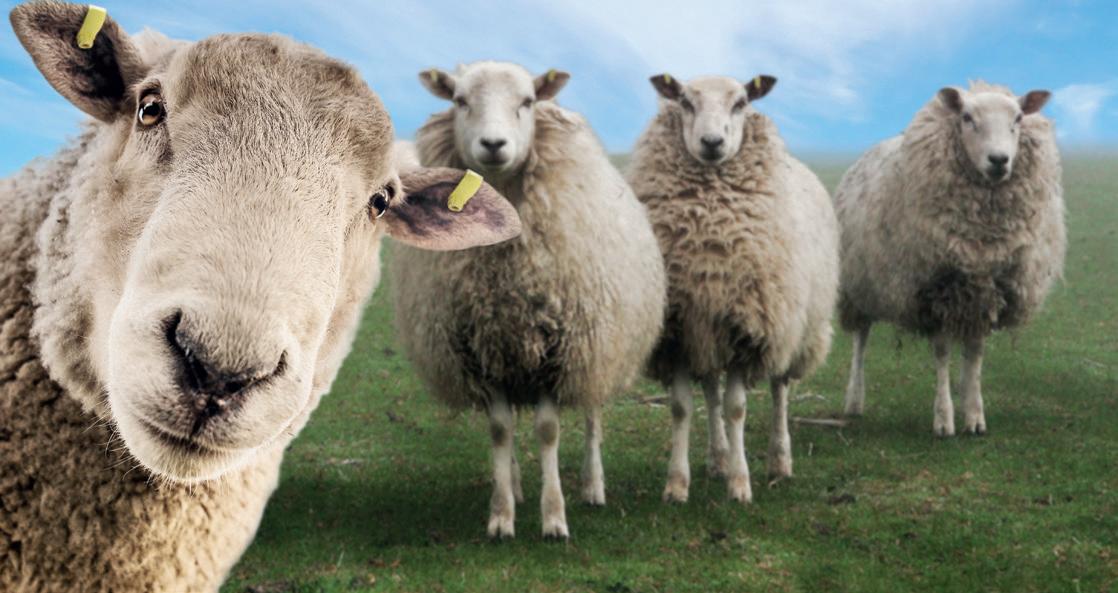

























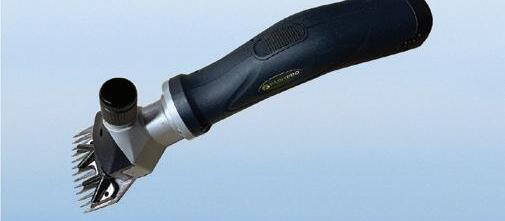

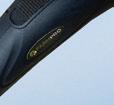
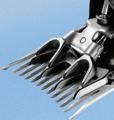

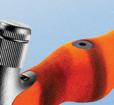
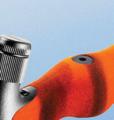






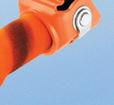
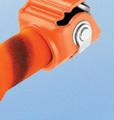

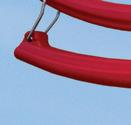







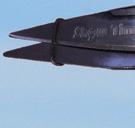
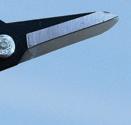








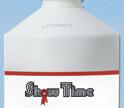
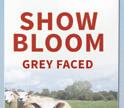





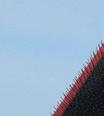










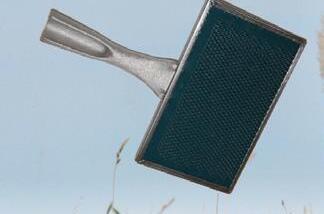
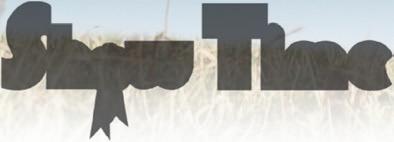


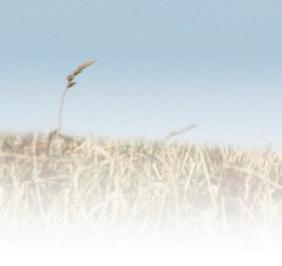
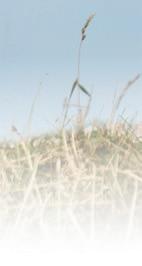
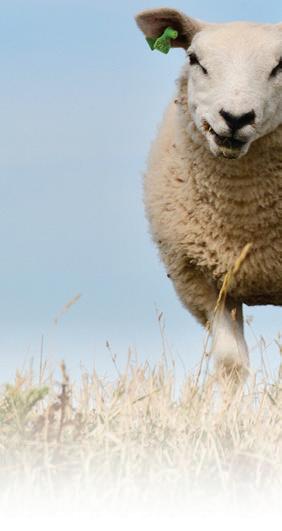


farmersguardian.com MARCH 1 2024 | 21 Vaccinating sheep for enzootic abortion with Cevac Chlamydia can be done when it is most convenient*: • EWE LAMBS from 5 months of age • SHEARLINGS (1 YR OLD +) & OLDER should be vaccinated during the 4 month period before mating • ALL EWES, NO LATER THAN 4 WEEKS before the rams go in • DO NOT use in pregnant sheep Protect your flock from enzootic abortion or prepare for future losses. * Further information is available on the SPC, pack leaflet or on request. Licensed for use with toxoplasmosis vaccine, can be used on the same day at separate injection sites. Cevac ® Chlamydia contains: live attenuated 1B strain of Chlamydophila abortus vaccine. Legal category POM-V . Please speak to your vet about using this product. Use medicines responsibly (www.noah.co.uk/responsible). Further information is available from Ceva Animal Health Ltd, Explorer House, Mercury Park, Wycombe Lane, Wooburn Green, HP10 0HH. Tel: 01628 334056 For flock’s sake Vaccinate PROTECT YOUR FLOCK & FINANCES Ewes know it makes sense. Find out more 6738.001 Cevac Farmers Guardian 95x135 AW.indd 1 22/02/2024 10:20 Phone: 01759 368588 Email: sales@showtime-supplies.co.uk www.showtime-supplies.co.uk TRIED ♦ TESTED ♦ TRUSTED ▪ Clippers ▪ Shears ▪ Combs & Brushes ▪ Shampoos ▪ Grooming Products ▪ General Equipment ▪ Halters sheep supplement feb 2024.indd 1 22/02/2024 10:11:32 The Delbridge family has been breeding Exmoor Horn sheep since 1850.
Making the switch to a total mixed ration has delivered significant benefits for flock health and efficiency at Lochfer Farm, of Inverdunning Farms, Bridge of Allan. Farmers Guardian reports.
Changes to feeding regime benefits commercial flock
Since joining the farming operation five years ago, Jack Shaw has been making substantial changes, including increasing the sheep flock from 200 to 800 ewes and moving from a hill-based system to low-ground grazing. A small herd of pedigree Simmental cattle have been introduced, as well as building a state-of-the-art multi-purpose livestock handling shed which can be used year-round.
The 20-cow pedigree Simmental herd at Lochfer has been established in recent years. Foundation stock were bought from the best of breeding lines with the view of gradually building up numbers through retaining home-bred heifers.
Surplice heifers and bulls are currently being sold privately off-farm, building their reputation within the breed, with the aim of selling at bull sales in the future.
Mr Shaw says: “We
chose the Simmental as they are a great all-rounder. They suit the ground we have perfectly. The first calves off our new stock bull bought from Islavale were born earlier this year. He has got excellent breeding behind him so it will be interesting to see what he can bring to the herd.”
While the Simmentals are an important part of the business, it is the sheep flock which Mr Shaw is extremely passionate about. His most recent focus has shifted towards making improvements in flock nutrition.
Wanting to reduce the labour costs and time associated with feeding stock, he began to explore whether supplementing ewes with a total mixed ration (TMR) could work within his system, having witnessed a friend successfully feeding 3,000 ewes a day by this method, south of the border.
The sheep operation at Lochfer consists of 550 breeding ewes, although this has been increased, with 800 due to lamb this month. This



expanding flock is made up of both Scottish Mules and Texel-cross ewes, with Texel and Beltex being the breed of choice for rams.
A Texel ram is used over Mule ewes with any ewe lambs being kept for replacements, and the resulting cross put back to a Beltex ram. Having scanned at 210 per cent last year, nutrition management was key.
Purpose-built shed
Ewes are all brought inside to the new purpose-built shed eight weeks prior to lambing in order to give the ground a chance to recover for grazing. Once inside, the shed has more than sufficient space for ewes to be split into feeding groups accordingly, allowing for a TMR to be tailored to each group.
As well as being split into groups dependant on the number of lambs being carried, ewes were also split based on their breed, allowing for closer nutrition management in the run up to lambing.
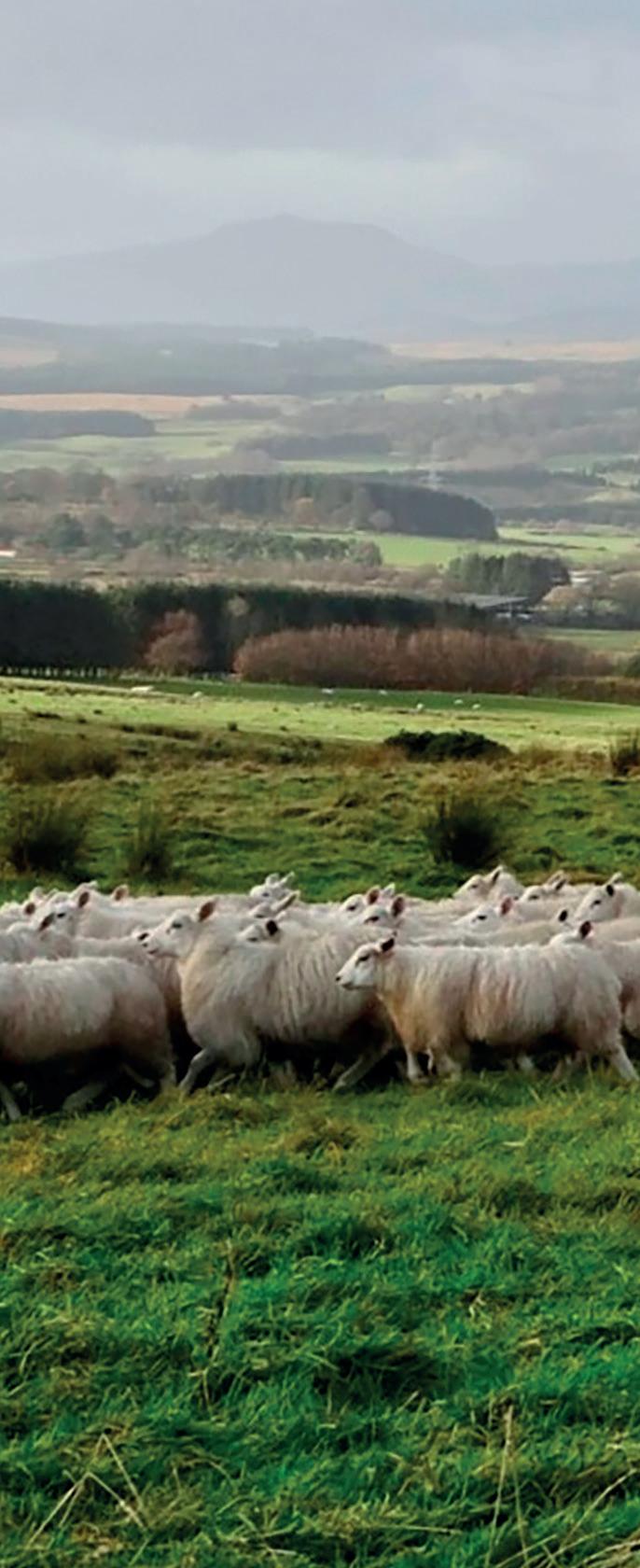

He says: “We had spoken to a lot of feed suppliers who had said it was not going to be easy to move to a TMR, but ECV were keen to work with us to see what was possible.
“They began by trialling a high protein mineralised pellet for us, adding in a mycotoxin binder to reduce listeria risk. This was added to the forage in the mixer wagon, but it did not stick well to the silage meaning the ewes could sort it when fed out. We changed to a blended form of ration, and it worked almost perfectly.
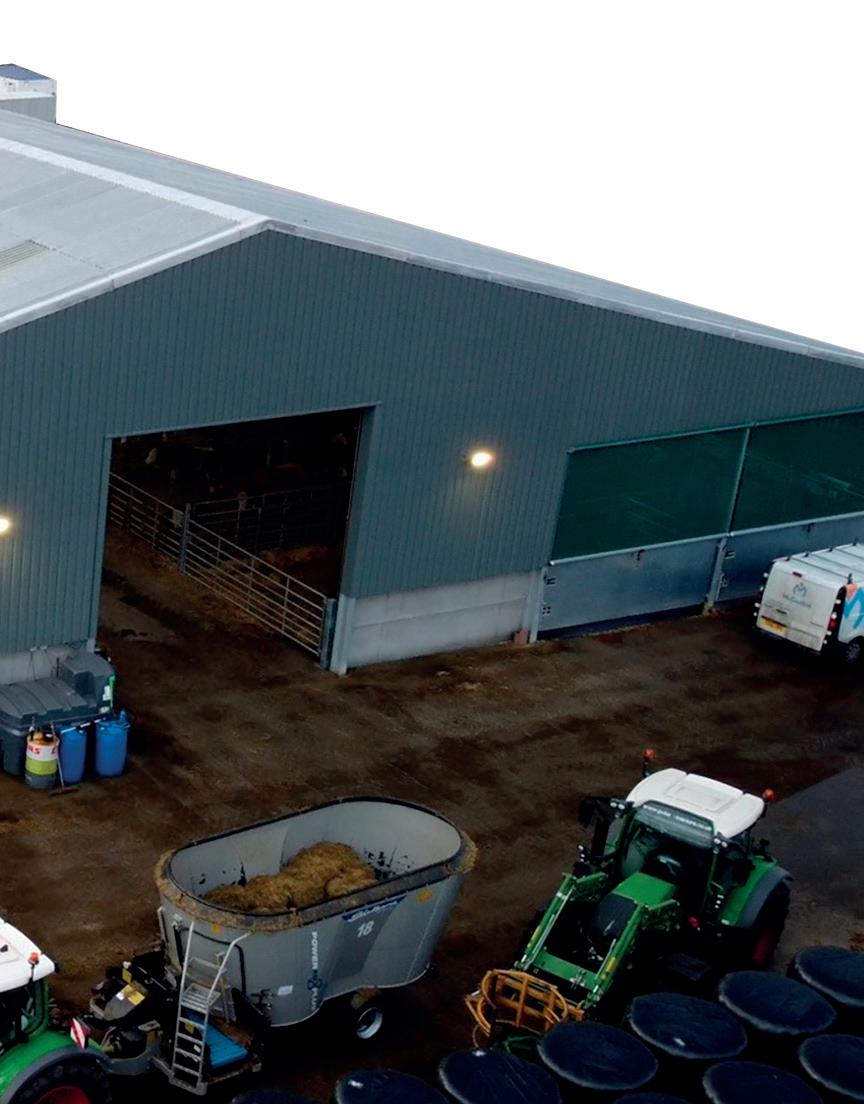
Working with animal nutritionists at East Coast Viners (ECV), a series of blends and pellets were trialled until they found a formula which worked best for Mr Shaw’s system, with great results.


“Very quickly we found that feeding the TMR was a less stressful experience for the ewes, as having adequate feeding space for each pen meant there was less fighting, with ewes having constant access to their mix. It also proved to be a lot less labour-intensive.
“I found I could feed the 600 ewes in an hour in the morning, allowing me more time in the day to get on with everything else, which was a great help once lambing really kicked off.
“The ewes were not rushing to get to their food, which has really helped in reducing both abortion rates and prolapses, and we had a lot more milk on them due to a better balance in the diet. Listeria is a problem we have struggled with for years. ECV introduced a mycotoxin binder to the ration to combat this and it worked as this year we only had one ewe come down with it,” says Mr Shaw, emphasising that it is only their first year trialling the TMR, so they are only just at the start of their journey.
farmersguardian.com SHEEP
22 | MARCH 1 2024
A state-of-the-art multi-purpose livestock handling shed which can be used year-round has been built at Lochfer.
The sheep operation at Lochfer consists of 550 breeding ewes, although this has been increased, with 800 due to lamb this month.
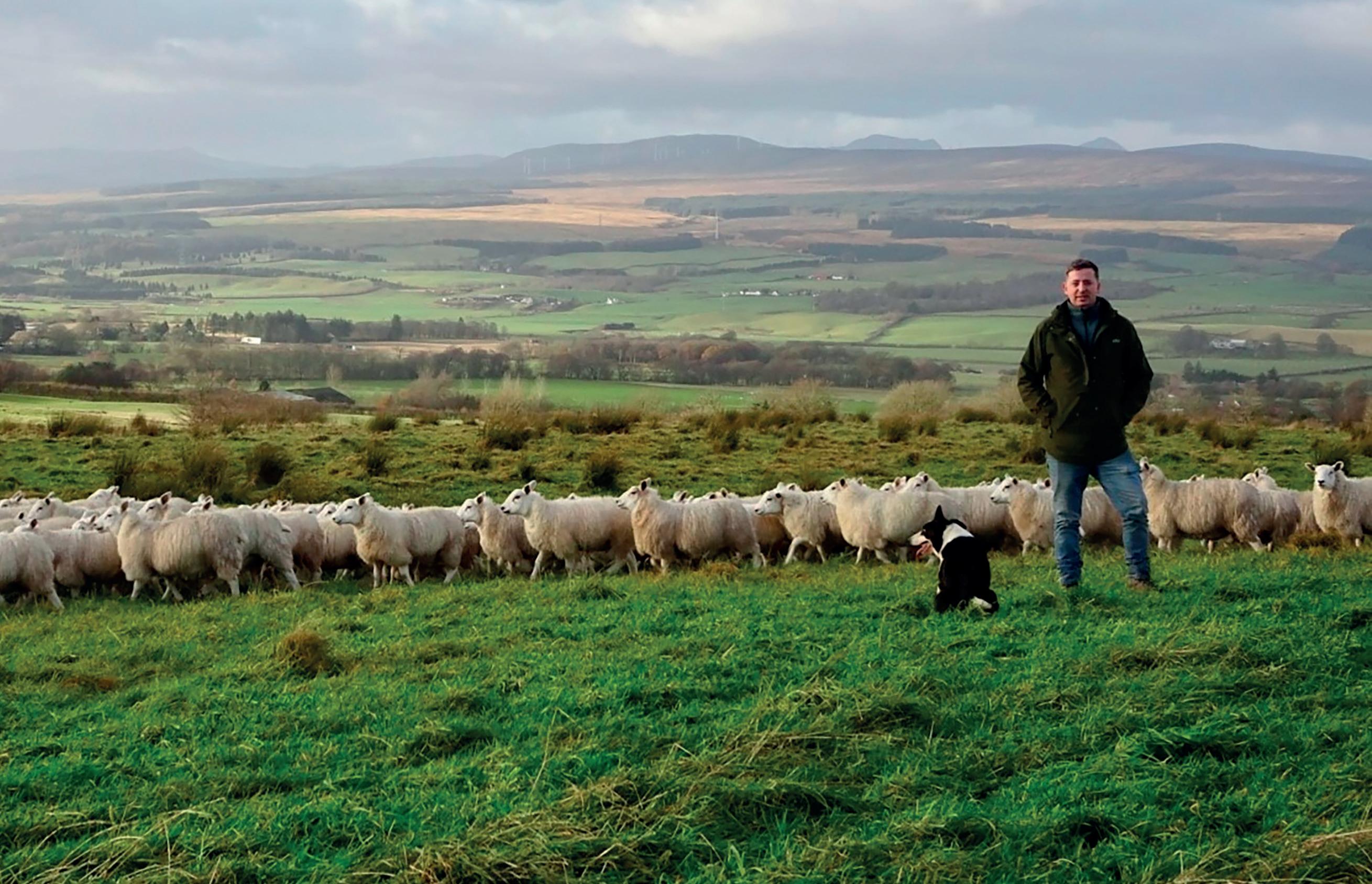
We found that feeding the TMR was a less stressful experience for the ewes, as having adequate feeding space for each pen meant there was less fighting
JACK SHAW
Nutritionist Joanne Hay, of ECV, has been working with Mr Shaw to find the right formula for his flock.
“When I first spoke with Jack, he was eager to introduce a TMR system for feeding, really focusing on getting the correct nutrition for his ewes. We worked together to figure out a ration which best suited his system and after a month of trials, discovered a mineralised protein blend worked best with the forage mix.

METHOD OF ADMINISTRATION
“Having the ability to regularly test silage and adjust the amount of blend in the mix meant we could ensure each group of ewes were meeting their requirements, and adjustments were quick and easy.
Cost-effective
Clean the wound thoroughly, apply the cream with a spatula to cover any lesions and then bandage, leave for 2-3 days, remove, clean & repeat for a further 2-3 days, remove again and only re-apply if necessary.
METHOD OF ADMINISTRATION
SPECIAL PRECAUTIONS
Wear gloves
CATTLE, SHEEP & GOATS
Clean the wound thoroughly, apply the cream with a spatula to cover any lesions and then bandage, leave for 2-3 days, remove, clean & repeat for a further 2-3 days, remove again and only re-apply if necessary.
Digital Dermatitis and Granuloma (strawberry
GOATS
SHEEP
Dermatitis and (strawberry Hoof, CODD sheep.
“We blood tested the flock about a month before lambing and found that ewes with twins were oversupplied in energy resulting in them carrying too much weight, but triplets needed a touch more feeding, so we were able to make adjustments to the TMR according to their feed groups,” adds Mr Shaw.
METHOD OF ADMINISTRATION
If contact with skin, wash off immediately with soap & water,
“Introducing a TMR system at Lochfer Farm has been cost-effective for Inverdunning, as well as benefiting flock health and efficiency. I am intrigued to see how this continues.
If swallowed, rise mouth with water
Seek medical advise if needed
SPECIAL PRECAUTIONS
Wear gloves
----
Reseal tub after use
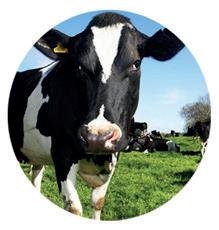
and only re-apply if necessary.
Whiteline & Shelly Hoof, Nodosus) & CODD
If contact with eyes, wash out immediately with water for 15 minutes
Do not discharge into drains or the environment
“Looking at nutrition is extremely important, regardless of what type of system you work, as it benefits both efficiency and animal health.
----
If contact with skin, wash off immediately with soap & water,
SPECIAL PRECAUTIONS
ACTIVE INGREDIENTS
If contact with eyes, wash out immediately with water for 15 minutes
Wear gloves
Digital Dermatitis in sheep.
If swallowed, rise mouth with water
“ECV will come out and test our silage three or four times over the season, which keeps us right ensuring the ration does not change too much when using different bales. If you have plenty of information to work with, you can make changes to the diet and with the TMR, it does not take long to implement.”
contains copper & zinc sulphate
Seek medical advise if needed
If contact with skin, wash off immediately with soap & water, If contact with eyes, wash out immediately with water for 15 minutes
Reseal tub after use
If swallowed, rise mouth with water
Do not discharge into drains or the environment
Seek medical advise if needed
Reseal tub after use
ACTIVE INGREDIENTS
Do not discharge into drains or
“By working with a nutritionist, it allows you to maximise the use of home-grown materials, finding cost-effective ways of supplementing livestock. This allows your stock the best chance of reaching their potential, whether that be in weight gain, fertility, or milk production, even a small supplement can make big improvements to your end product,” Ms Hay adds.
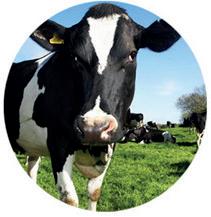




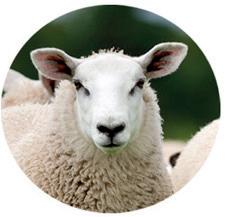
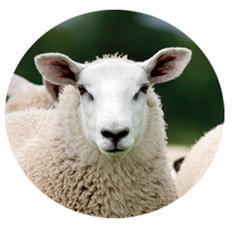
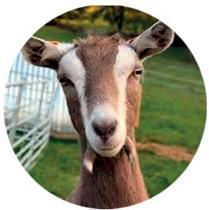

UN3082

farmersguardian.com MARCH 1 2024 | 23
CONTACT
Ripon, North Yorkshire sue.farmsupplies@btinternet.com 01765 822120 / 07801 670515
WARNINGS H302 H315 H318 H400 H410 P273 P280 P302+352 P305+351+338 P312 Harmful if swallowed Causes skin irritation Causes serious eye damage Very toxic to aquatic life Very toxic to aquatic life with long lasting effects Keep out of
CONTACT
Ripon, North Yorkshire sue.farmsupplies@btinternet.com 01765 822120 / 07801 670515 contains
& zinc sulphate WARNINGS H302 H315 H318 H400 H410 P273 P280 P302+352 P305+351+338 P312 Harmful if swallowed Causes skin irritation Causes serious eye damage Very toxic to aquatic life Very toxic to aquatic life with long lasting effects Avoid release to the environment Wear protective gloves/clothing/eye protection/face protection IF ON SKIN: Wash with and water IF IN EYES: Rinse cautiously for several minutes. Remove lenses, if present and easy Continue rinsing Call a POISON CENTRE feel unwell
copper
& GOATS
Clean the wound thoroughly, apply the cream with a spatula to cover any lesions and then bandage, leave for 2-3 days, remove, clean & repeat for a further 2-3 days, remove again
the environment Dermatitis and (strawberry Shelly Hoof, & CODD Dermatitis in sheep.---CONTACT UN3082 ACTIVE INGREDIENTS Ripon, North Yorkshire sue.farmsupplies@btinternet.com 01765 822120 / 07801 670515 contains copper & zinc sulphate WARNINGS H302 H315 H318 H400 H410 P273 P280 P302+352 P305+351+338 P312 Harmful if swallowed Causes skin irritation Causes serious eye damage Very toxic to aquatic life Very toxic to aquatic life with long lasting effects Avoid Wear protection/face IF and IF for lenses, Continue Call feel Sue: 01765 822120 | Kevin: 07801 670515 sales@czfplus.co.uk www.czfplus.co.uk METHOD OF ADMINISTRATION SPECIAL PRECAUTIONS HOOF CARE IS SUITABLE FOR CATTLE, SHEEP & GOATS Clean the wound thoroughly, apply the cream with a spatula to cover any lesions and then bandage, leave for 2-3 days, remove, clean & repeat for a further 2-3 days, remove again and only re-apply if If contact with skin, wash off immediately with soap & water, If contact with eyes, wash out immediately with water for 15 minutes If swallowed, rise mouth with water Seek medical advise if needed Do not discharge into drains or the environment CONTACT ACTIVE INGREDIENTS Ripon, sue.farmsupplies@btinternet.com 01765 contains copper & zinc sulphate WARNINGS H302 H315 H318 H400 H410 Harmful Causes Causes Very Very long Actively seeking new distributors CZF & CZ hoof products do not contain QUATS thecertifiedNowbyorganicOF&Gfor farms Beware of Inferior Imitations! Aids in the healing of Digital Dermatitis & Slurry Heel in cattle. Granuloma (strawberry foot) foot abscess, Whiteline & Shelly Hoof Footrot (Dichelobacter Nodosus) & CODD (Contagious Ovine Digital Dermatitis) in sheep. CZF PLUS & *CZ HOOF CARE RANGE Certified*OF&G 1Lt RTUspray nowavailable IS SUITABLE FOR DAIRY COWS, BEEF CATTLE, SHEEP & GOATS
Back to basics on faecal egg count testing
By Ellie Layton
Afaecal egg count (FEC) is used to monitor worm burdens in sheep. Not only does it help determine if sheep need treating for worms,but doing a follow up count after drenching also detects if the product has worked.
FECs are a vital tool against growing drug resistance, with nearly all lowland flocks and 80 per cent of upland and hill flocks in England have some resistance to white drenches.
The tests allow you to monitor the efficacy of treatments and prevent the
overuse of products at times when they are not needed.
Connor Smith from Bimeda Animal Health offers advice on taking FEC samples.
For best results, Mr Smith advises gathering sheep into the corner of the field, or pen if being handled inside, and holding them there for five to 10 minutes. This should be plenty of time to get fresh samples.
Gloves
Wearing a pair of disposable gloves, pick up fresh samples and place them into a sealable, plastic bag. Samples should be soft and ideally still warm to
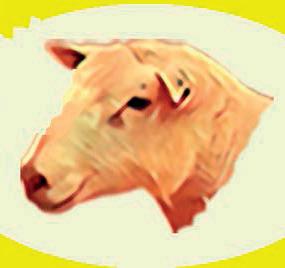
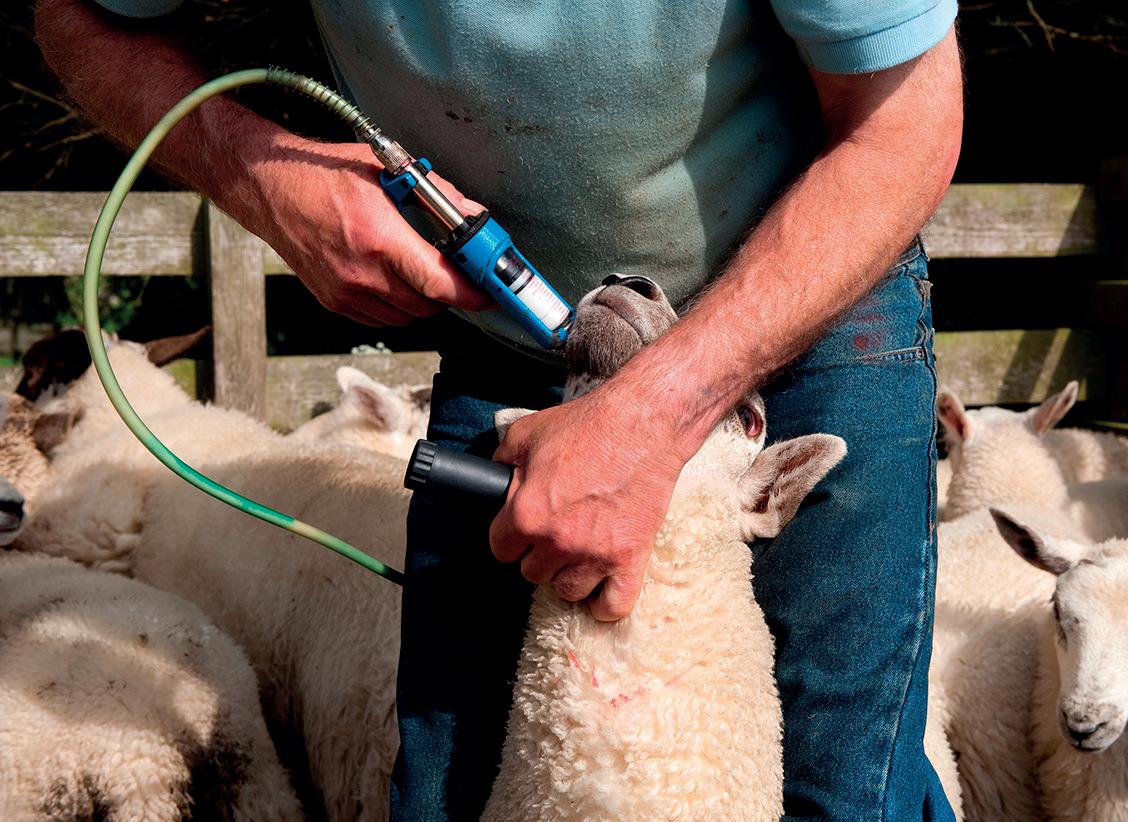
touch. Aim to collect samples from at least 10 per cent of the group.
It is important the same amount of faeces is collected from each animal, only needing to be about the size of a 50p coin.
To ensure consistency, pick them up with a measuring spoon.
If you are testing post-treatment, you must wait for a minimum of seven days before collecting samples, although timing varies depending on what treatments have been used.
Mr Smith says the mistake many farmers make is to assume that sheep with dirty back ends will have a higher worm count and therefore they only test these ones.
He says dirty back ends can be caused by different factors – such as lush grass or mineral deficiency, so sample the entire group.
It is important to keep samples cool, preferably in a refrigerator.
If they exceed 7degC the eggs will start hatching.
However, samples should not be frozen as this will damage the eggs.
n Yellow drench: Seven days post-treatment
n White drench: 10-14 days post-treatment
n Clear drench: 14-16 days post-treatment
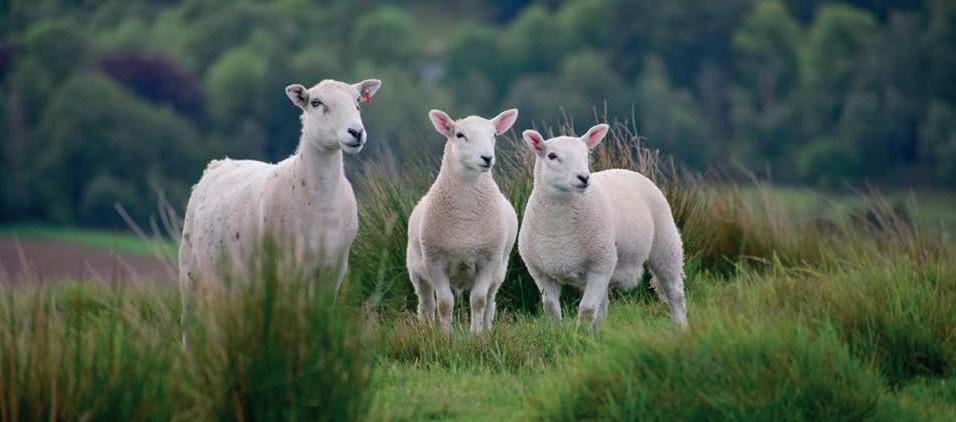

WHAT AN FEC CAN DO
n Help develop a more effective and sustainable worm control programme
n Give a good indication of the level of adult egg-laying worms present in the animal
n Provide an indicator of
WHAT AN FEC CANNOT DO
n Remove the need to monitor performance and look out for clinical signs in individual animals
n Tell you what species of gut worms are present (apart from nematodirus species)
The next step is to get your samples analysed. Mr Smith recommends speaking to the farm vet to discuss available options. Many vets offer a FEC service in-house, and the latest technology allows samples to be analysed on farm within 12 minutes.
Last May, new technology was released to the market allowing vets and traders to quickly analyse samples for both worm and rumen and fluke burdens.
Technology
The Micron kit is reusable and only needs to be washed with soapy water between uses, allowing the kit to be used anywhere on farm and at any time.
Using artificial intelligence (AI) technology, proficiency-tested results are delivered and can be viewed within minutes straight to your phone via an app.
Mr Smith says: “At the moment, the kit is only available for use of vets and tradespeople, however, we are looking at bringing it to the market direct to farmers.
“The 12-step standardised process allows a result within a quarter of an hour and takes out user error by using the AI technology through a phone camera. It can also pick up any anomalies, meaning that the animal health expert on hand can help to rectify these and structure an effective treatment plan, if needed.”
infection with the main gut worms
n Identify eggs of nematodirus worm species
n Give a useful guide to the level of worms affecting the group
n Be used to detect whether wormers are fully effective
n Detect whether any coccidia oocysts present are a pathogenic species
n Pick up early reinfection after treatment (it takes 17-21 days for worms to develop into egg laying adults)
farmersguardian.com 24 | MARCH 1 2024 SHEEP Easycare Sheep R TAKE THE STRESS OUT OF SHEPHERDING FLEECE-SHEDDING EASY LAMBING LOW MAINTENANCE AND PRODUCERS OF PRIME LAMBS! REDUCE COSTS AND INCREASE OUTPUT THE CHOICE IS EASY ... EASYCARE See website for the society sales dates www.easycaresheep.com Find us on Facebook ‘EASYCARE SHEEP SOCIETY’ Open Day Saturday 15th June at MONELLIE FARM, DRUMBLADE, HUNTLY, ABERDEENSHIRE AB54 6ER see website for details of a weekend programme
When to test post-drench
FECs have the potential to reduce wormer use.

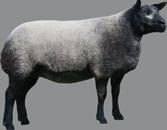

Worcester – Here Come The Girls
FRIDAY 3RD MAY – e/c 19th April
McCartneys – 01905 769770
Melton Mowbray - May Spring Fling Sale
SATURDAY 4TH MAY – e/c 12th April
Melton Mowbray Market – 01664 562971
Carlisle – Spring Spectacular
FRIDAY 24TH MAY – e/c 19th April
H&H – 01228 406230
Skipton – Bank Holiday Blues
MONDAY 27TH MAY – e/c 17th May
CCM – 01756 792375


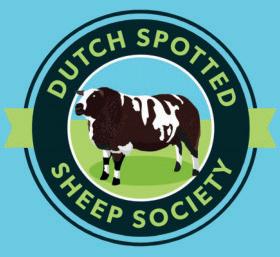
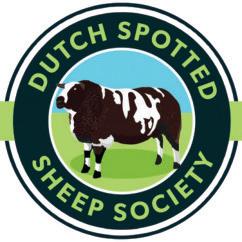
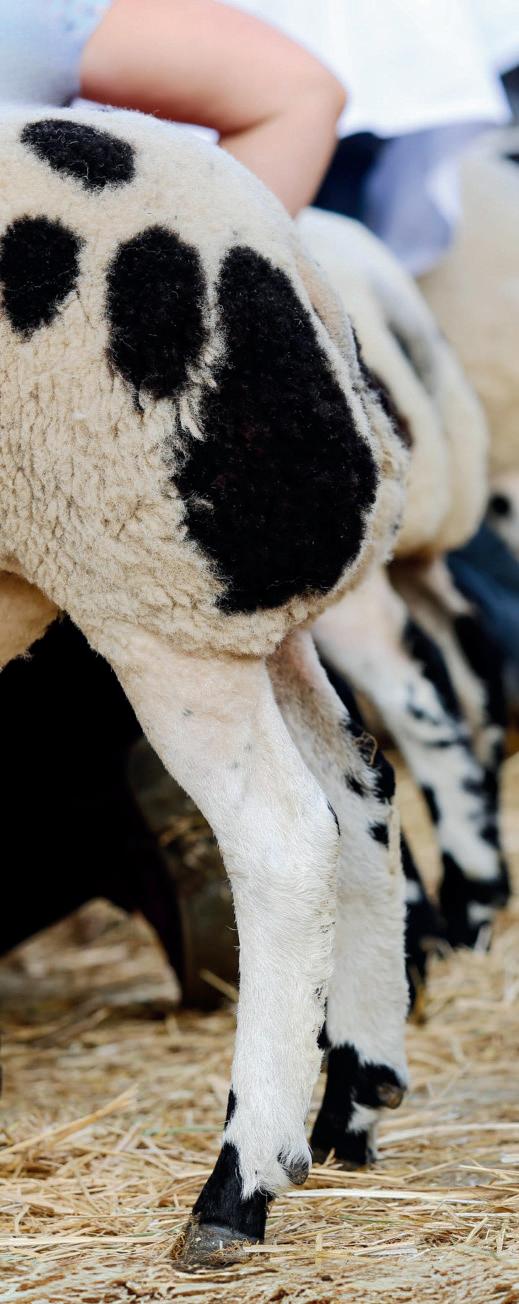
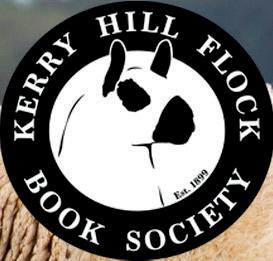

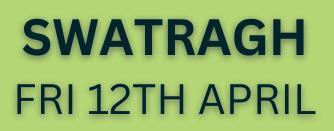
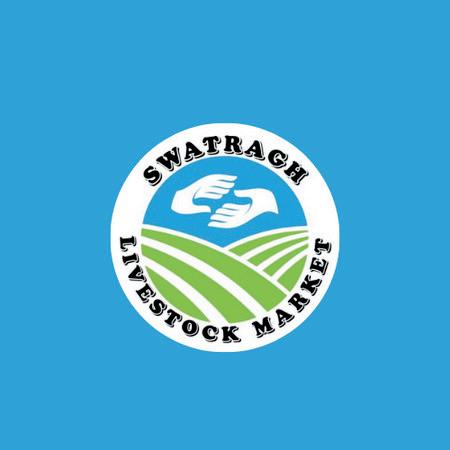




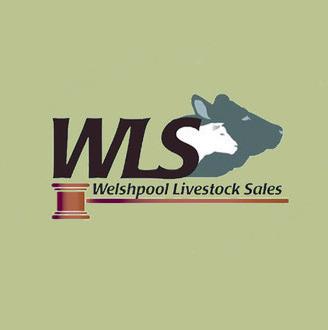


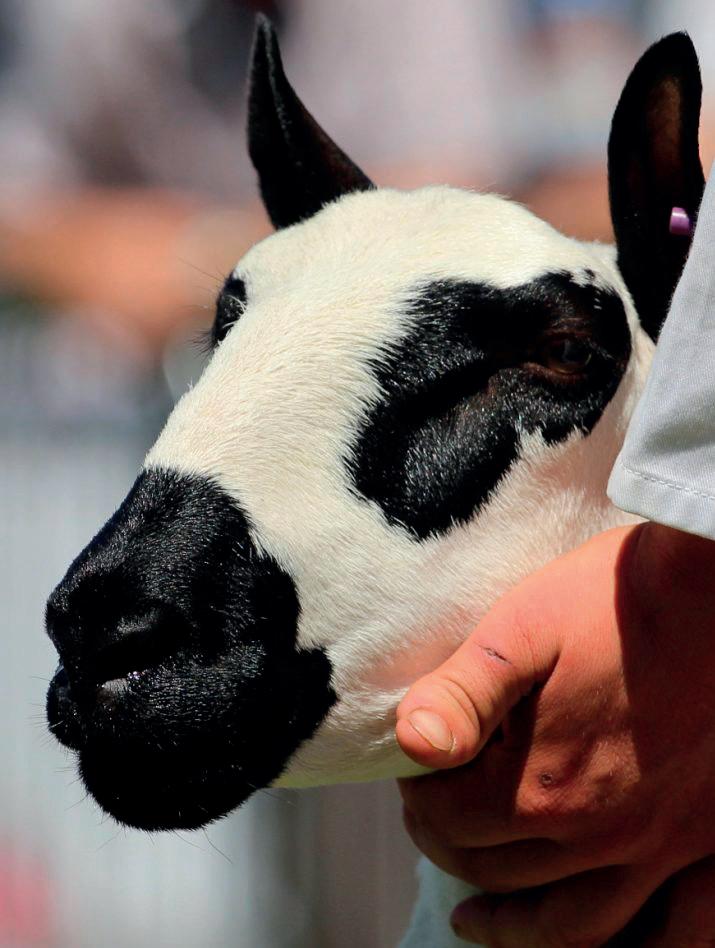
MARCH 1 2024 | 25 Auctions & Breed Societies 25 March 1, 2024 | BLU E TEX E L SHEE P SO CI E TY E W E & LAM B SAL E DATES 2 0 2 4 www.blue-texel-sheep.com E: office@bluetexelsheep.co.uk | T: 01768 870523
WWW.DUTCHSPOTTEDSHEEP.CO.UK SPRING SALE DATES 2024 and place your ad today Your one stop shop for all agricultural sales auctionfinder.co.uk Search by sale type, mart, auctioneer or region www.kerryhillsheepsociety.com 2024 Sale Dates Skipton - 26th August Ludlow - 7th September Melton Mowbray - 13th & 14th September N.Ireland Sale - 14th September H&H Carlisle - 21st September H&H Carlisle In lamb Christmas Cracker Sale - 13th December
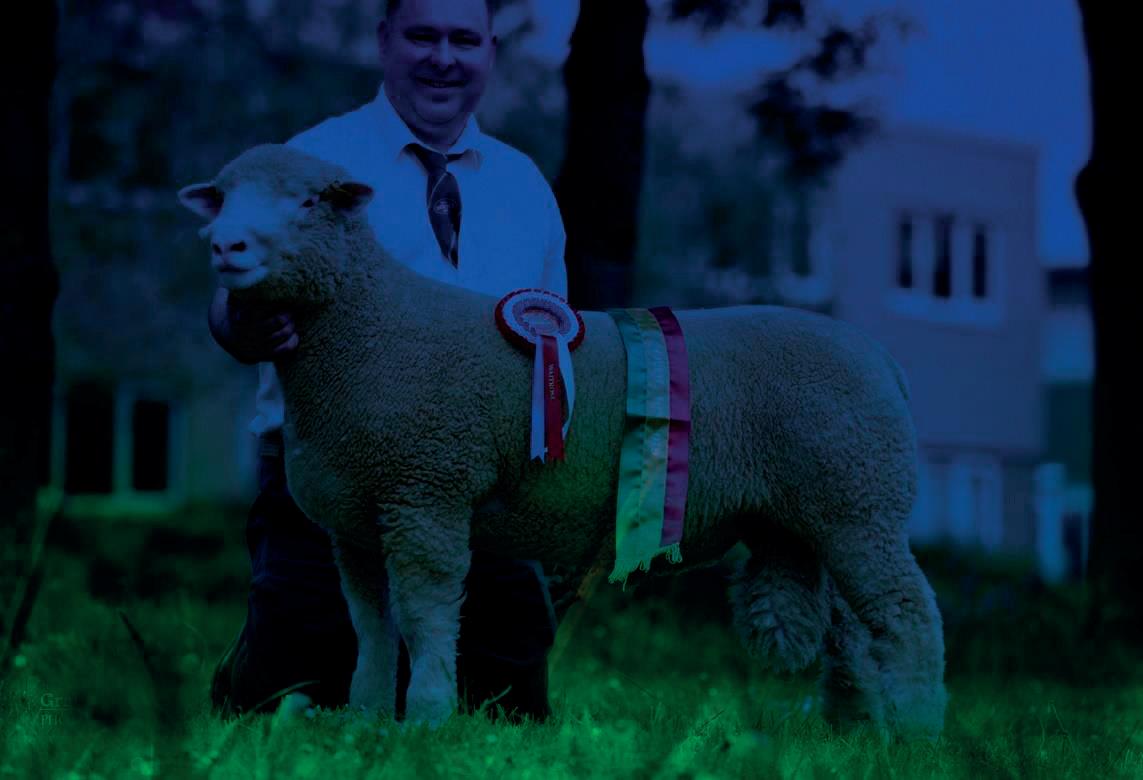





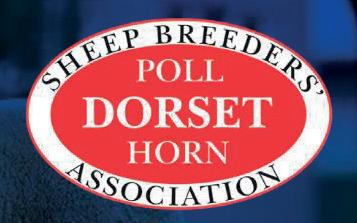
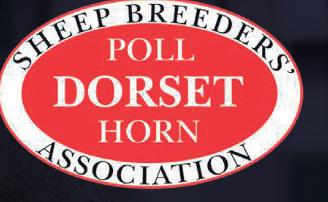


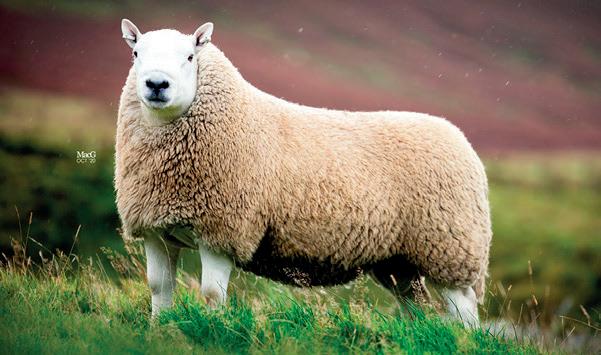
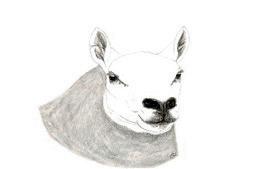
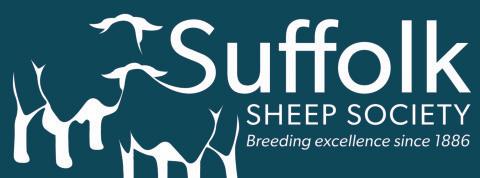
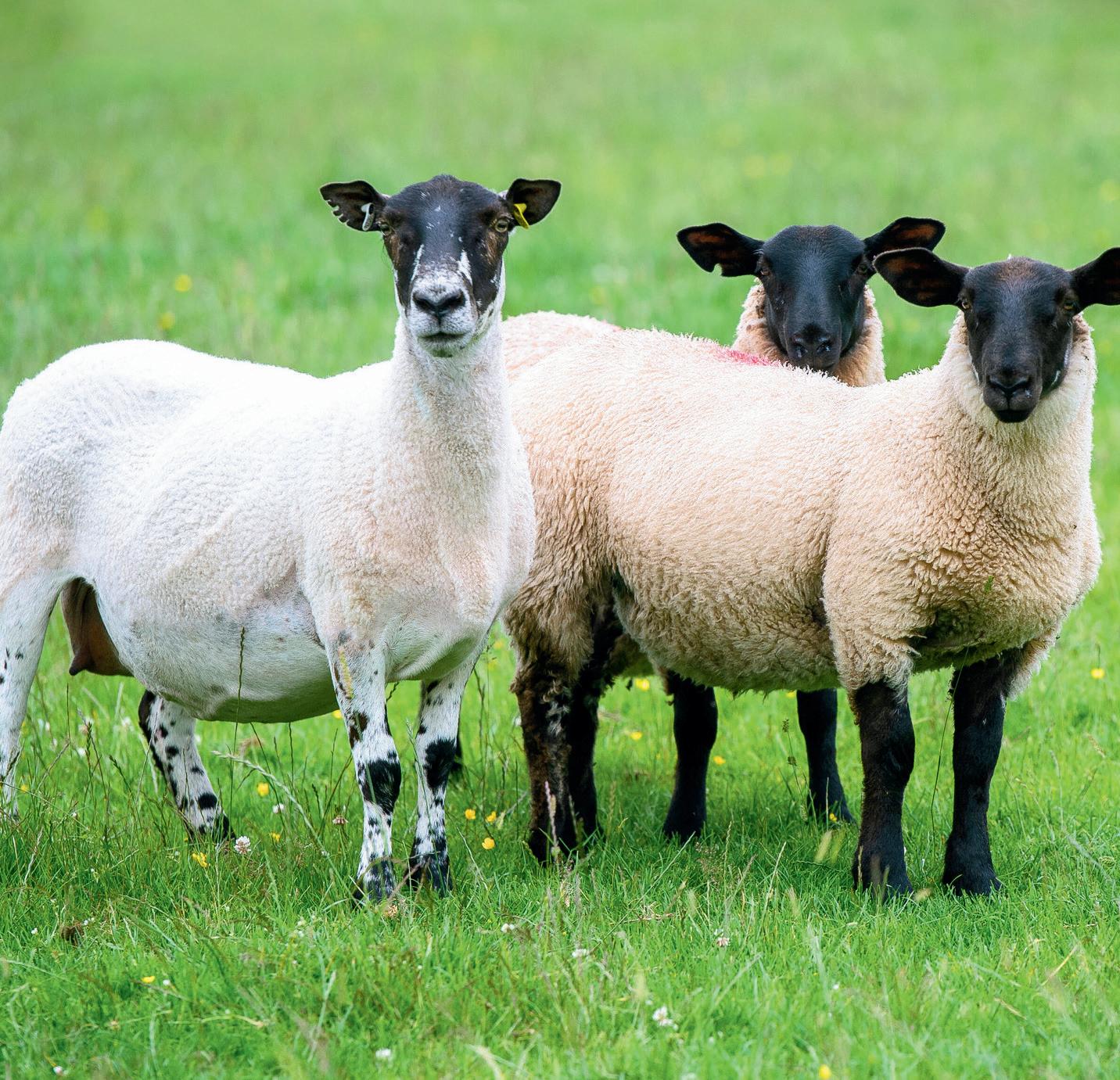

EXETER LIVESTOCK CENTRE, MATFORD PARK ROAD, EXETER, DEVON, EX2 8FD Biggest Sheep Market in the West Country
FRIDAY 5TH APRIL
Centurion Sheep Breeders Sale of Dorset Ewes & Rams
WEDNESDAY 3rd MAY
DORSET HORN & POLL DORSET MAY SHEEP FAIR
FRIDAY 12TH APRIL
Catalogues available from mid April
“Heart of Devon” 12th Anniversary Sale to inc Show and Sale of Ewes and Lambs
FRIDAY 5th MAY
1st Season Catalogued Sale of Hogg Couples

Further information – Russell Steer 07788 318701
FRIDAY 19TH APRIL
3000 Prime & Cull Sheep Every Monday
1500-2500 Store Lambs Every Friday
For Catalogues please call
Spring Extravaganza Sale of Pedigree and Purebred, MV & Non-MV Couples and Ewe Hoggs
01392 251261 or text/WhatsApp 07788318701
FRIDAY 3RD MAY
1st Season Catalogued Sale of Hogg Couples
WEDNESDAY 8TH MAY
DORSET HORN & POLL DORSET MAY SHEEP FAIR
Catalogues available from mid April
Further information – Russell Steer 07788 318701
3000 Prime & Cull Sheep Every Monday
1500-2500 Store Lambs Every Friday
For Catalogues please call 01392 251261 or text/WhatsApp 07788318701
FGbuyandsell.com 26 | MARCH 1 2024 FGinsight.com Auctions & Breed Societies | March 1, 2024 FGbuyandsell.com 26 FGBuyandSell.com FG Buy and Sell 01772 799500 2024 SHOW & SALE DATES Scottish Club Spring Stars Show & Sale, Carlisle Monday, 18th March Dorset Diamonds EU Export Show & Sale, Ballymena Saturday, 23rd March May Fair, Exeter Tuesday, 7th & Wednesday 8 th May Llandovery Show & Sale Saturday, 29th June Worcester Show & Sale Saturday, 13th July Lanark Show & Sale Thursday, 18th July 52nd NI Annual Premier Show & Sale Monday, 29th July Skipton Show & Sale Saturday, 3 rd August 9th NI Annual Omagh Show & Sale Friday, 9th August NI Swatragh Show & Sale Friday, 23 rd August Carlisle August Show & Sale Friday, 30th August 35th NI Annual Autumn Sale Monday, 14th October For further enquiries contact: The Breed Secretary 01305 262126 Email: dorsetsheep10@outlook.com Cheviot Sheep Society Soutth h Coouuntrry Cheviiots Sale of Ewes, Gimmers & Ewe Lambs 30th September 2024 at Longtown Mart Rams at Lockerbie Mart 14th October 2024 01848 331 758 / 07715 409 170 secretary@cheviotsheep.org www.cheviotsheep.org Cheviot South Co Sale of Ewes Gimmers & Ewe Lambs 30th September 2024 at Longtown Mart Sale of Rams at Lockerbie Mart on 14th October 2024 For more information, please contact, Rob McTurk 01848 331 758 / 07715 409 170 secretary@cheviotsheep.org Sale of Ewes, Gimmers & Ewe Lambs 30th September 2024 at Longtown Mart Sale of Rams at Lockerbie Mart on 14th October 2024 For more information, please contact, Rob McTurk 01848 331 758 / 07715 409 170 secretary@cheviotsheep.org www.cheviotsheep.org B info@pedigreelivestockservices.co.uk T 01768 870523 f BADGER FACE TEXEL SHEEP SOCIETY PERFORMANCE PERFORMANCE PROFIT PROFIT POTENTIAL POTENTIAL The Suffolk Advantage The Suffolk Advantage E: enquiries@suffolksheep.org Any Mule X Suffolk Any Mule X Suffolk = = Suffolk sired lamb increases your flock W: www.suffolksheep.org T: 028 2563 2342 EXETER LIVESTOCK CENTRE, MATFORD PARK ROAD, EXETER, DEVON, EX2 8FD
14th APRIL “Heart of Devon” 11th Anniversary Sale to inc Show and Sale of Ewes and Lambs, Special Sale of Dorset Ewes and Centurion sheep breeders Sale of Dorset Ewes and Rams
21st APRIL Spring Extravaganza Sale of Pedigree and Purebred , MV & Non-MV Couples and Ewe Hoggs
FRIDAY
FRIDAY






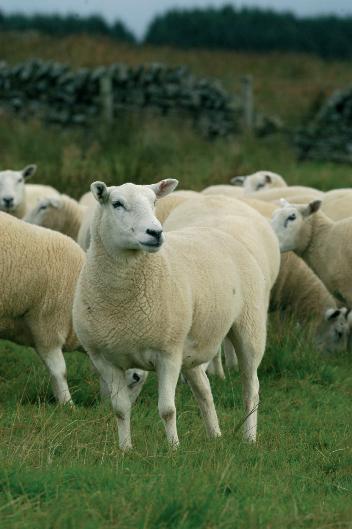

Details
email:
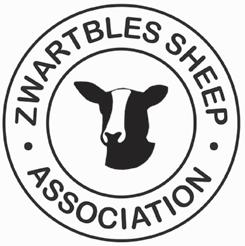
Email:

T:
E:
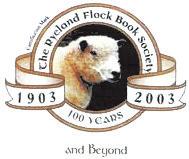
Contact:

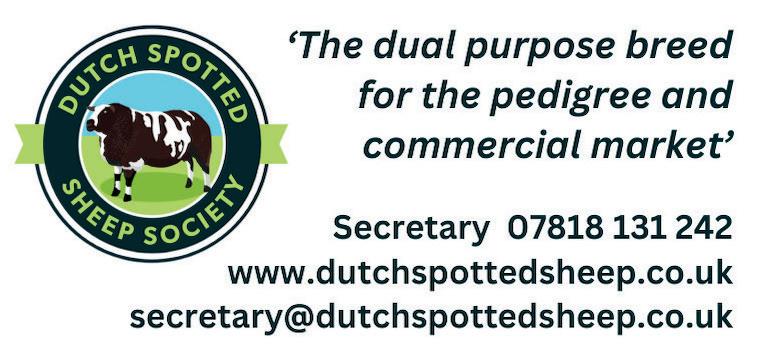

T:


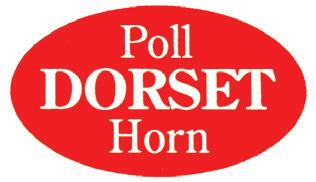

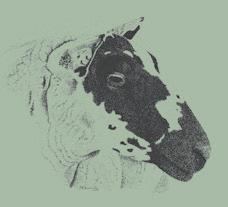
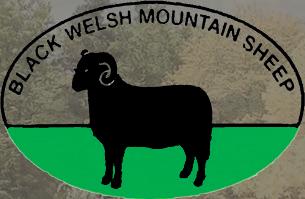
Breed

Chairman:
Secretary:

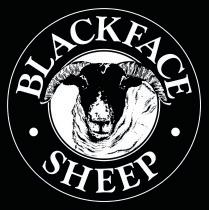
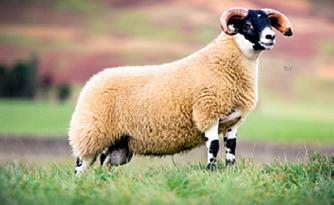
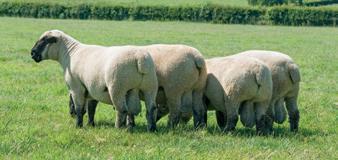
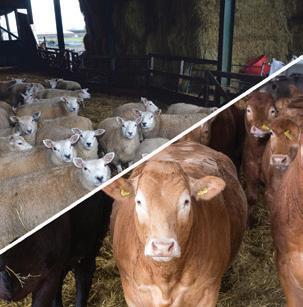

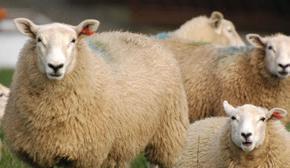

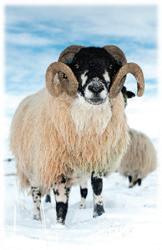


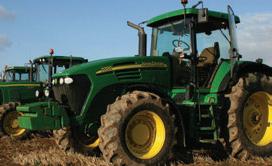
FGbuyandsell.comFGbuyandsell.com Call 01772 799500 and place your ad today Breed Directory Breeding, Semen & Embryos.indd 1 06/07/2016 16:50 Use a Hampshire Down ram for fast finishing lambs off forage Visit our website for further details www.hampshiredown.org.uk Contact: gayle@hampshiredown.org.uk T: 07932 758 689 Friday 24th August Monmouthshire Livestock Centre, Auctioneers: J Straker Chadwick Prolific • Hardy • Maternal • Healthy • Quick Growing What’s not to like? For more information or to request a catalogue: enquiries@blackwelshmountain.org.uk Mobile: 07511 653714 Black Welsh Mountain Sheep Breeder’s Association 2018 Sale Black Welsh Mountain Sheep Breeder’s Association enquiries@blackwelshmountain.org.uk Mobile: 07511 653715 • Prolific • Hardy • Maternal • Healthy • Quick Growing What’s not to like? www.scottish-blackface.co.uk Contact: Aileen McFadzean 07768 820405 email: aileen@scottish-blackface.co.uk BLACKFACE SHEEP BREEDERS’ ASSOCIATION BEULAH SPECKLED FACE SHEEP Contact Hayley Price Tel: 01982 553228 www.beulahsheep.co.uk Black Welsh Mountain
Sheep
Agriculture House Acland Road, Dorchester
Black
Welsh Mountain Sheep Breeder’s
Dorset DT1 1EF
Secretary: Marguerite
dorsetsheep10@outlook.com dorsetsheep.org.uk SHEEP BREEDERS’ ASSOCIATION DALESBRED
Cowley Telephone / Fax: (01305) 262126
David Wilson 07939 531959
Sarah Fleetwood 07808 781507 sfleetwood10@gmail.com
www.dalesbredsheep.co.uk
01768 870524
01768 870523
office@bluetexelsheep.co.uk
Dot Tyne
721739
Ryeland Flock Book Society www.suffolksheep.org TEL: 02825 632342 SUFFOLK Suffolks Finish First FAST GROWTH RATE AND CARCASS QUALITY Milky, Maternal and Prolific Make Zwartbles a part of your breeding programme Find out more about Zwartbles and buy for the future
01835 864555
01758
Admin@ryelandfbs.com www.ryelandfbs.com
Tel:
secretary@zwartbles.org www.zwartbles.org MASHAM Sheep Breeders Association
From Val Lawson Oak Bank, Bentham, Lancaster. LA2 7DW
015242 61606
Tel/Fax:
vallawson@tinyworld.co.uk
07889 802276
LLEYN Secretary 01758 730366 www.lleynsheep.com auctionfinder.co.uk Your one stop shop for all agricultural sales
Amanda Burgess
www.masham-sheep.co.uk
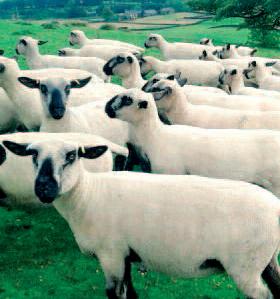
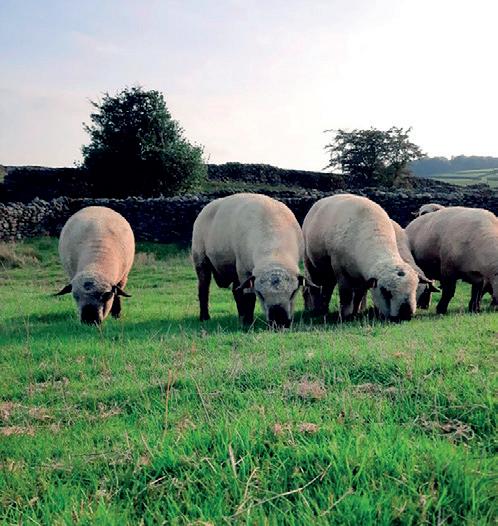



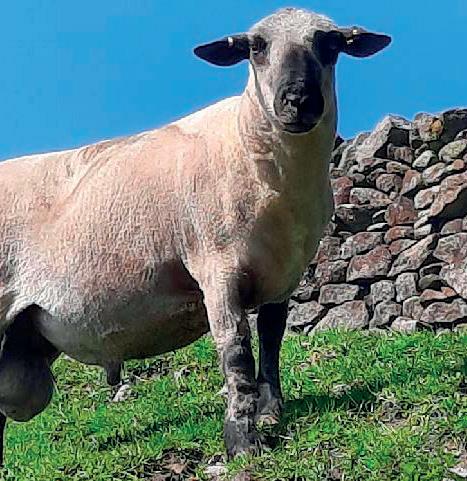
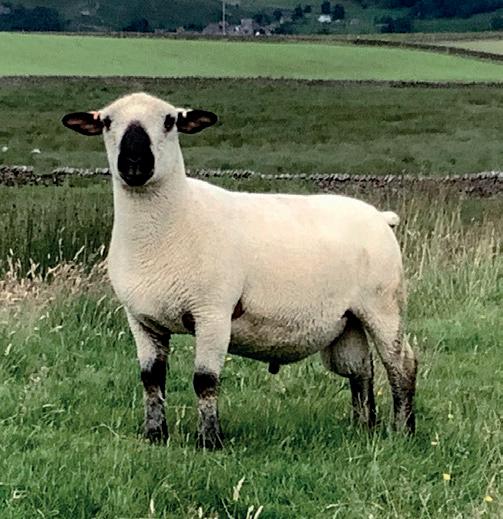


FGbuyandsell.com 28 | MARCH 1 2024 FGinsight.com nSheep For Sale nBuilding Equipment | March 1, 2024 FGbuyandsell.com 28 FGBuyandSell.com The Lumb Flock Hampshire Down Pedigree Sheep Tel: 07518 873936 Quality Pedigree Stock & Commercial R ams for Sale A 2022 Award Winning Hampshire Down Sheep Society Flock. A31 LUMB Prefix HDSBA Member MV Accredited SRS R ecorded. EBVs UK 0134967 John R Craig The Lumb Farm R athmell, Settle North Yorkshire, BD24 0AJ @thelumbflock johnthelumb@gmail.com Tel: 07518 873936 Quality Pedigree Stock & Commercial R ams for Sale 022 Award Winning Hampshire Do Sheep Society Flock. UMB Prefix BA Member ccredited R ecorded. EBVs 134967 John R C The Lumb F R athmell, S North Yorkshire, BD24 @thelumb johnthelumb@gmail Tel: 07518 873936 Quality Pedigree Stock & Commercial R ams for Sale A 2022 Award Winning Hampshire Down Sheep Society Flock. A31 LUMB Prefix HDSBA Member MV Accredited SRS R ecorded. EBVs UK 0134967 John R Craig The Lumb Farm R athmell, Settle North Yorkshire, BD24 0AJ @thelumbflock johnthelumb@gmail.com Hampshire Down Pedigree Sheep Tel: 07518 873936 Quality Pedigree Stock & Commercial R ams for Sale A 2022 Award Winning Hampshire Down Sheep Society Flock. A31 LUMB Prefix HDSBA Member MV Accredited SRS R ecorded. EBVs UK 0134967 John R Craig The Lumb Farm R athmell, Settle North Yorkshire, BD24 0AJ @thelumbflock johnthelumb@gmail.com
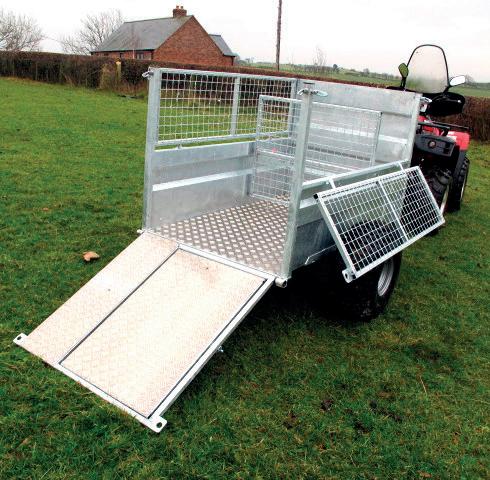

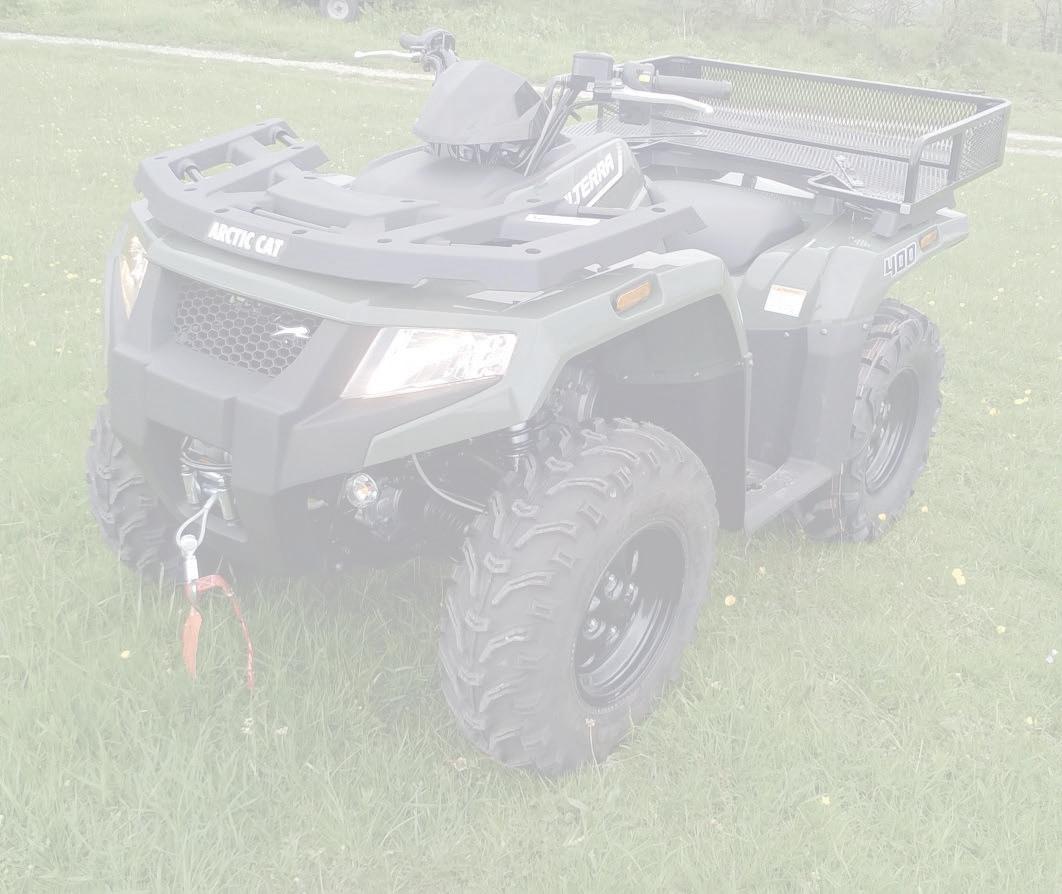
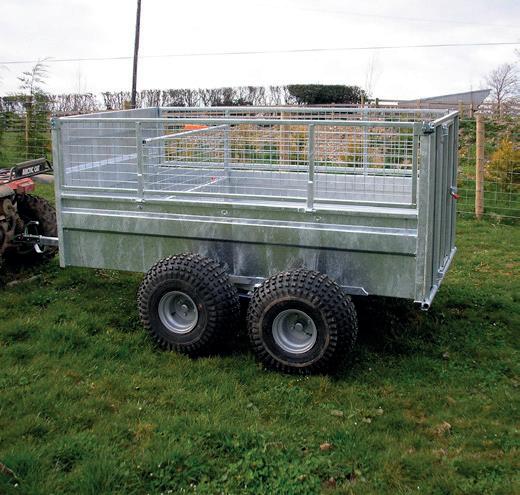
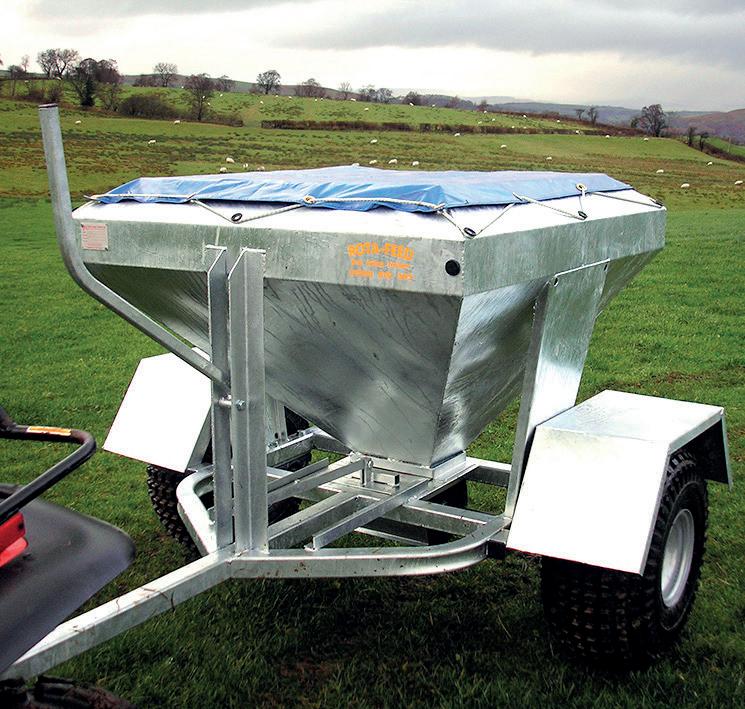



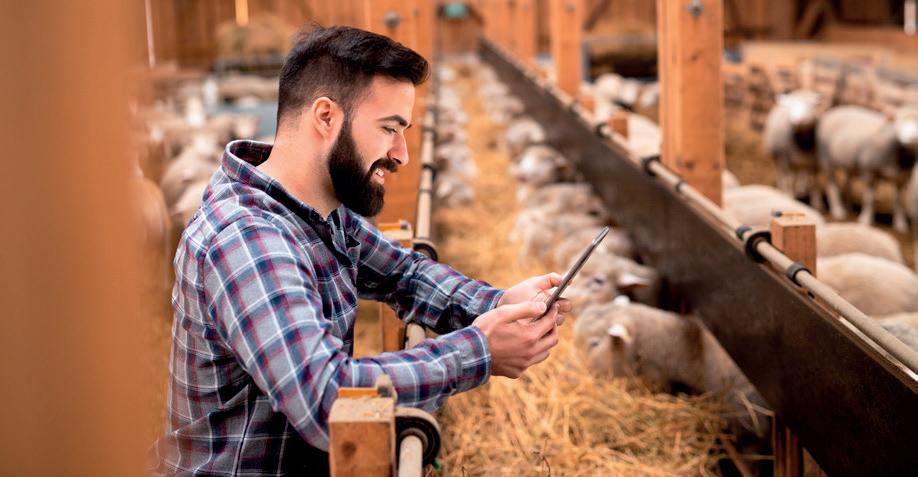
FGbuyandsell.com MARCH 1 2024 | 29 29 March 1, 2024 | FGbuyandsell.com and place your ad today Animal Health ATVs & Equipment Oil Protein Fibre Calf Defender (Skim) 24% 22% Nil (Transition Milk) Calf Distinction (Skim) 25% 22% Nil Calf Supreme (Skim) 20% 24% Nil Heifer Delight (Skim) 20% 25% Nil Calf Content (Whey) 19% 23% Nil Super XL (Whey) 19% 22.5% 0.05 Sheep trailers single and tandem axle, sheep snackers, ATV tipping trailers Made in Wales. Nationwide delivery available Rob Astley Trailers Ltd 01938 810393 ATV Trailers and Equipment Browse. Sell. Buy at FGBuyandSell.com From Tups, Wethers, Ewes, Rams and everything in between, you’re sure to find what you need on FGBuyandSell.com. Start listing your items FREE today! ALL PRICES + VAT ***Free delivery UK Mainland*** TEL: 01538 304391 WHATS APP: 07791 727084 EMAIL: atv@hotmail.co.uk Suzuki Kawasaki Yamaha Segway SMC Honda G & B ATV’S New Suzuki King Quad LTA 750 with EPS, fully auto& selectable 2/4WD £9,295 + vat New Suzuki King Quad LTA 500 with EPS, fully auto & selectable 2/4 WD £8,750 + vat New Yamaha Kodiak 450 Selectable 2/4WD, fully auto & Warn Winch �������������������������� £7,200 + vat New Yamaha Kodiak 450 EPS, 2/4WD, fully auto & Warn Winch £8,450 + vat New Honda TRX 420 FE1 Electric shift £7,200 + vat New HZM 908 Pivot Steer Loader complete with bucket, Pallet Forks & Bale Spike 4x4� £12,495 + vat ATV Attachments: Rollers, Chain Harrows & Spot Sprayers

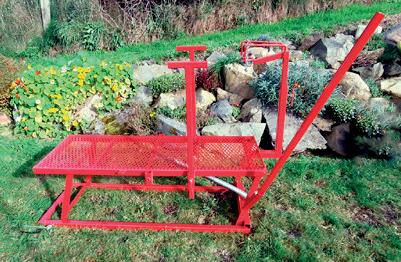

Why crawl about on your hands and knees getting your prize stock looking their best when ewe could do it at a convenient height?
Spring assisted for easy lifting. Head holder can be removed and used separately clipped to a gate for those last minute preparations at a show.
Also available with a pair of wheels to enable easy moving. Phone for current offers


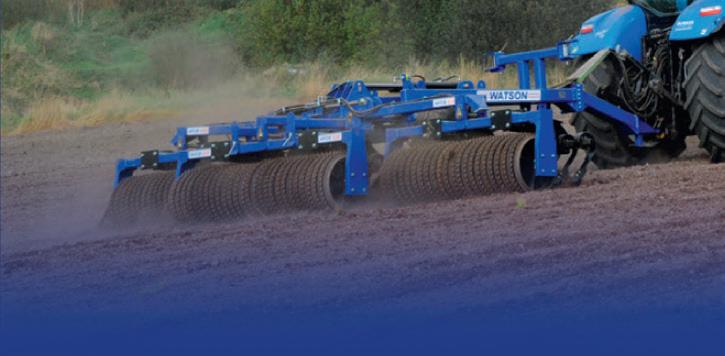
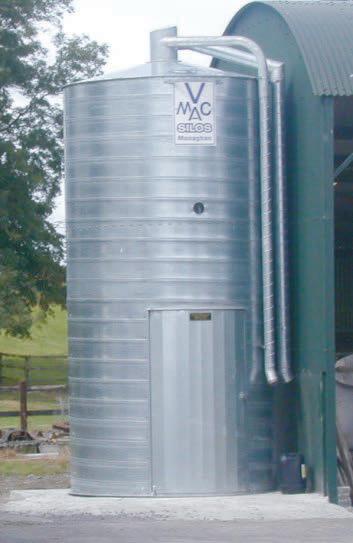

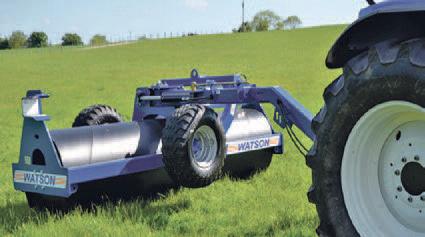
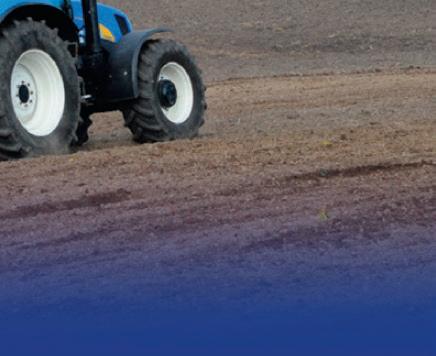

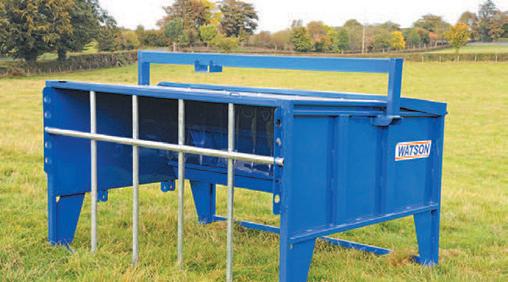
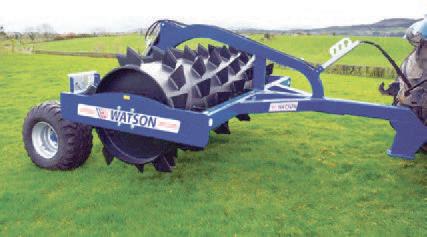
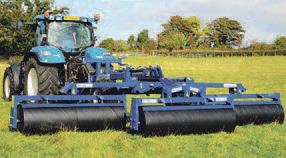






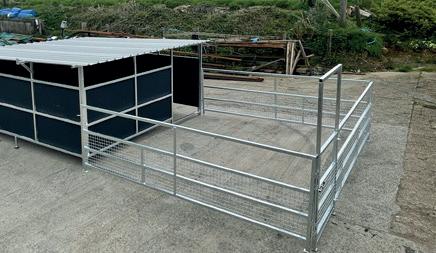
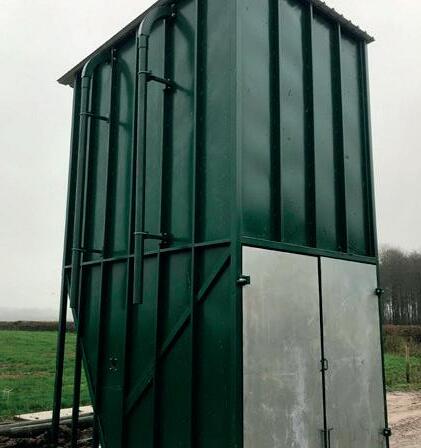
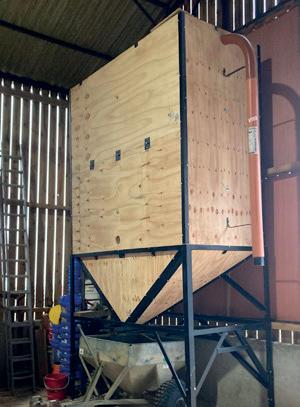


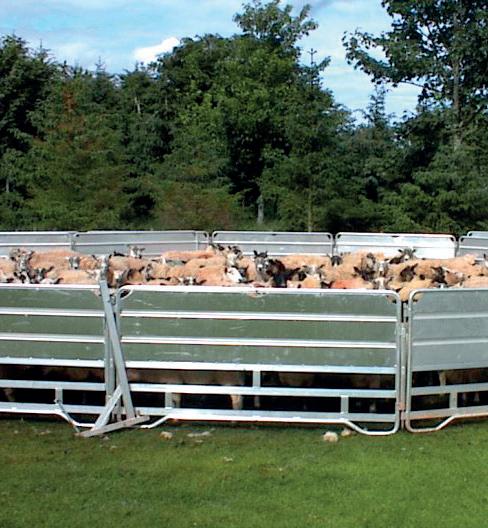
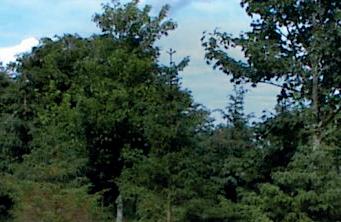
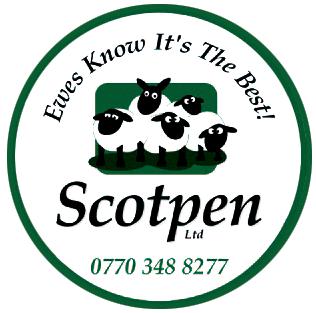
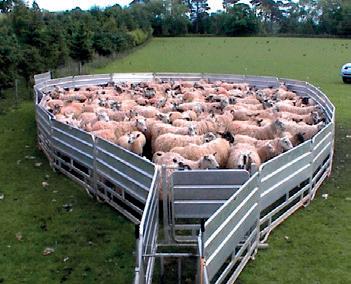




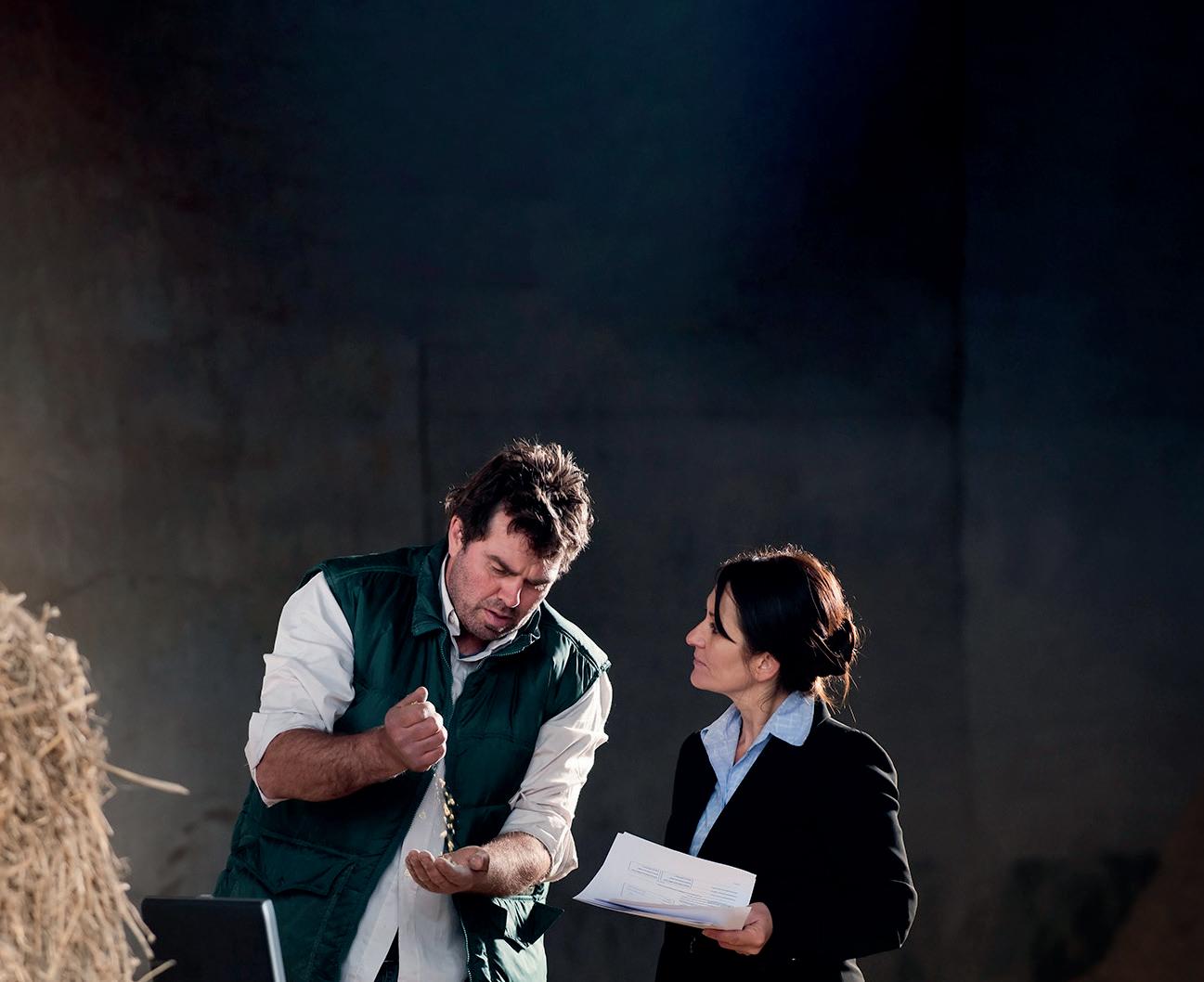

FGbuyandsell.com 30 | MARCH 1 2024 FGinsight.com | March 1, 2024 FGbuyandsell.com 30 FGBuyandSell.com Sheep Equipment www.vmacsilos.co.uk A Winder & Son Cumbria 0777 9444 174 ND Jeans Somerset 01963 370 044 WYNNSTAY RETAIL Wales 01691 662690 V-Mac Silos email: agri@walter-watson.co.uk Greenfield Works, Ballylough Road, Castlewellan, Co. Down, BT31 9JQ, Northern Ireland T: +44 (0) 28 4377 8711 W: www.walter-watson.co.uk WALTER WATSON 15x5 Bunker Feeder Calf/ Bull Beef Feeders Silage Feeding Trailer 12ft Rotating End Tow 3m Spiral Blade Aerator 6.3m Hyd-Folding Ballast Wooden Hurdles Formally T I Askew. 4, 5 & 6ft sheep hurdles, with or without loops (alternative sizes available) Tel: 07432 662688 or 07580 968352 Nationwide Delivery BUILT STRONGER, TO L AST LONGER SCOTPEN WITH THE NEW EVEN STRONGER, LIGHTER HURDLES ALL HURDLES SEAM WELDED NOT SPOT WELDED MOBILE SHEEP HANDLING SYSTEM Clive Houldey 01461 600203 Gerald Burrows (South West Rep) 01598 710098 or 07595 183858 info@scotpen.co.uk www.scotpen.co.uk Email: Info@symmsfabrication.co.uk Web: www.symmsfabrication.co.uk Many more products on our website Can manufacture to specification SYMMS FABRICATION Telephone: 01935 851243 • Fill by Blowpipe or Loader • Can be suitable for snackers • 4 to 10T from £1095 • 3 to 6T from £660 from £5750 10 - 35 Tonne Outdoor Blend Bin H H Grabs, Buckets & Bale Squeezers also available at Symms Fabrication! Calf Houses • Can house between 10-12 calves • High degree of protection against Pneumonia and Scours Grant Eligible We take a farmer-centric approach to media. Our job is to help farmers run their farms more efficiently and make better purchasing decisions Advertising opportunities now available in our Get your brand seen by decision makers, influencers, farm owners and managers! Published March 15, 2024 Call to find out more 01772 799 500 Call 01772 799500 and place your ad today Inthisspecial,wetakealookatthegrantsavailableto farmersandthefrustrationsoveruncertaintyanddelays. GRANTS SPECIAL Alex Black alex.black@agriconnect.com 409 Farmers’ distrust in RPA deepens over SFI delays RachaelBrown K tospeed shifting landscape of farming is for many and extended issued by Payments (RPA) andDefra SustainableFarming (SFI)have farm- ers’ distrust very thing Government aredesper- ately restore. This was message from H&H Land Estates chartered eyor and environment adviser, who criticised scrapp- ing of ‘standards’ terminology and announcement offurtherdelays. Butdespiteinsistedongoingproblems still start ‘controlledroll-out’ was promised the end of August, that has since postponed to September 18. Sudden changes Mr said: “These changes and schemes give us in the RPA thingthey restore.Itmakes difficultprovideassurancetoclients this nothappen this,hesaid wasone positive away,suggesting ‘lessapplicationprocessappearedtobe onerous’ applications.comparedthiswaswith the common Struggle “Ithaslong knownthe struggled to map land on opportunities the scheme which appeal farmers landowners. Mullins said: prepare for one thing then not happen. missed the cancelled all SFI agreements warningtoenable itsnew “This certainly not transition hadhoped for, but offer with more actions available for applicants to choose, although whyithas thename - Deadlinesremainsamystery.” dates have minute Mid-Tier deadline extendedby weeks, day before applications had be after said have been issues onlinesystem. its computer systems. In thatthis resolved, butnow hasrevertedapplications.This thatcommon associationswillnotbe apply SFIuntil theyear,at notNovember-December.”TheRPA tohave available spring 2024, but Mr ‘we and see’, that he would continue helpprepareapplications and‘putpressure’ theRPA. issues Mullins believed could prove option’ for some farmers than CountrysideStewardship with agreements forthree making more appealing tenant farmersin restrictions requirements for each are less prescriptive, enablingfarmers delivertheaction Theextendedtimelinesissued RuralPaymentsAgency and Sustainable FarmingIncentivehave farmers’ Sheep dressing stands
Tel: 07711
Nationwide
407029






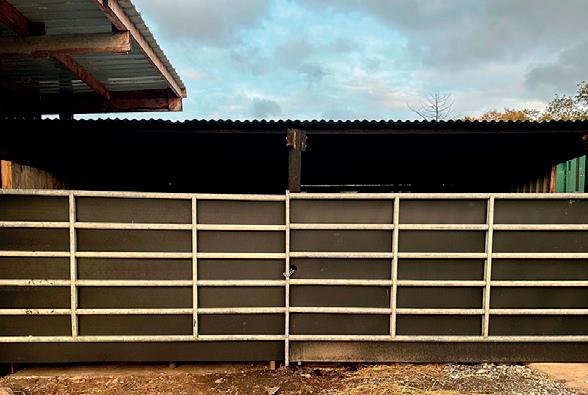
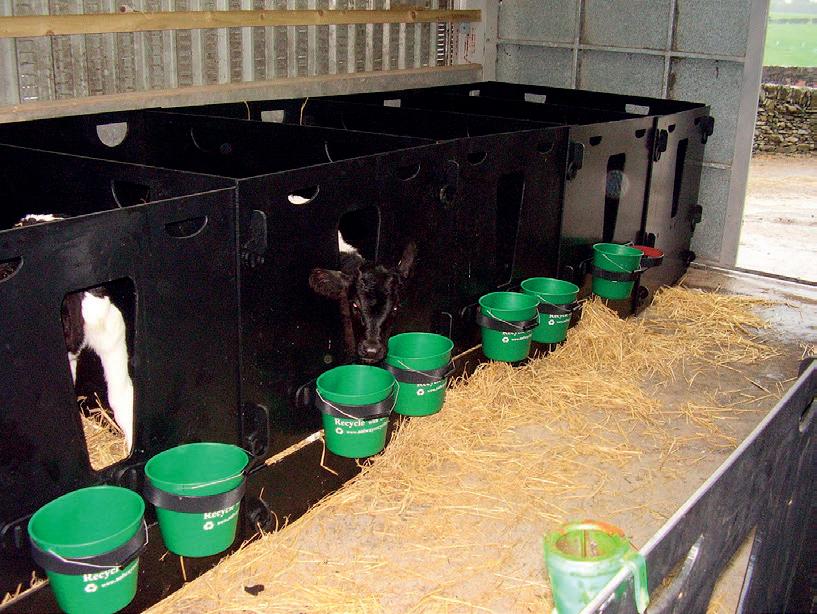






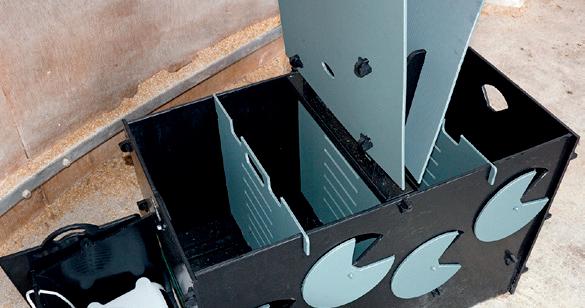




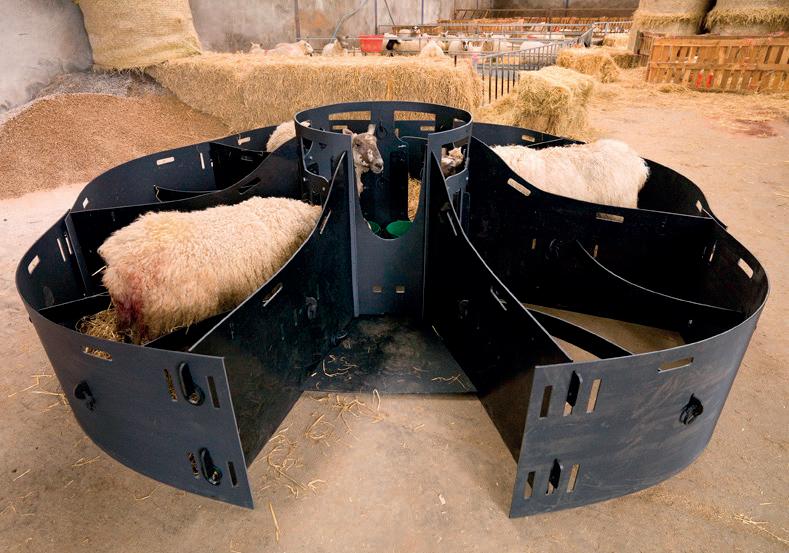


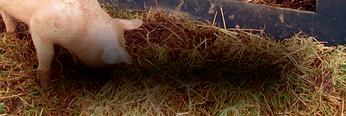
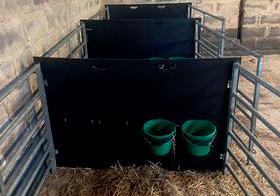



FGbuyandsell.com MARCH 1 2024 | 3131 March 1, 2024 | FGbuyandsell.com Call 01772 799500 and place your ad today www.solwayrecycling.co.uk Call - 01387 730 666 CONTACT US FOR DETAILS (Facebook, twitter, Instagram all solwayrecycling) MEMBERS OF Beat the Price of Metal Pens ALSO NEW SIZES to fit gates and hurdles SOLWAY-BOARD RATED THE NO 1 FARMERS LIVESTOCK BOARDING SOME SOLWAY-BOARD SECONDS SHEETS AVAILABLE GATE SHEETING LAMB WARMING BOX LAMB ADOPTERS PIG ARKS HURDLE DIVIDERS







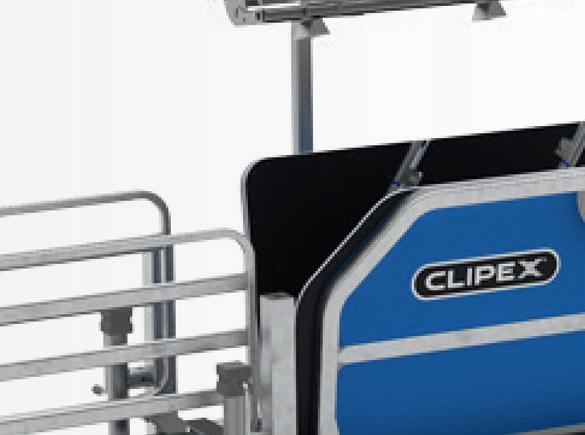

includes an automatic drafting crate, control system with automated entry and exit gates, weigh bars, panel reader and weigh head sold as a whole working unit (single item), not as individual elements



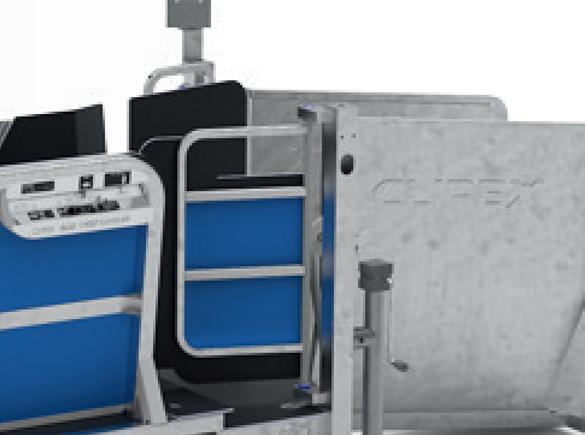









includes an automatic drafting crate, control system with automated entry and exit gates, weigh bars, panel reader and weigh head sold as a whole working unit (single item), not as individual elements







FGbuyandsell.com 32 | MARCH 1 2024 FGinsight.com | March 1, 2024 FGbuyandsell.com 32 FGBuyandSell.com Clipex.co.uk 0203 3184 044 RRP £15,000 WITH GRANT £7,500* Clipex All-in-One Auto Drafter ensures you're fully equipped with loads of Features including 3-Way Draft, Load Bars & Premium Weight Indicator. All features mentioned below as STANDARD with no hidden costs. Secure your order with a deposit today! Enquire Today for unbeatable value! 50% Off W t FETF72 Grant Clipex All-in-One Auto Drafter Revolutionising Sheep Management!
* Including FETF72 grant reduction All Prices shown are exclusive of VAT

















































































































































































































































































































































































































































































































